Speech Writing
Introduction Speech

Introduction Speech - A Step-by-Step Guide & Examples
11 min read

People also read
The 10 Key Steps for Perfect Speech Writing
Understanding the Speech Format - Detailed Guide & Examples
How to Start A Speech - 13 Interesting Ideas & Examples
20+ Outstanding Speech Examples for Your Help
Common Types of Speeches that Every Speechwriter Should Know
Good Impromptu Speech Topics for Students
Entertaining Speech Topics for Your Next Debate
How to Write a Special Occasion Speech: Types, Tips, and Examples
How to Write the Best Acceptance Speech for Your Audience?
Presentation Speech - An Ultimate Writing Guide
Commemorative Speech - Writing Guide, Outline & Examples
Farewell Speech - Writing Tips & Examples
How to Write an Extemporaneous Speech? A Step-by-Step Guide
Crafting the Perfect Graduation Speech: A Guide with Examples
Introduction speeches are all around us. Whenever we meet a new group of people in formal settings, we have to introduce ourselves. That’s what an introduction speech is all about.
When you're facing a formal audience, your ability to deliver a compelling introductory speech can make a lot of difference. With the correct approach, you can build credibility and connections.
In this blog, we'll take you through the steps to craft an impactful introduction speech. You’ll also get examples and valuable tips to ensure you leave a lasting impression.
So, let's dive in!
- 1. What is an Introduction Speech?
- 2. How to Write an Introduction Speech?
- 3. Introduction Speech Outline
- 4. 7 Ways to Open an Introduction Speech
- 5. Introduction Speech Example
- 6. Introduction Speech Ideas
- 7. Tips for Delivering the Best Introduction Speech
What is an Introduction Speech?
An introduction speech, or introductory address, is a brief presentation at the beginning of an event or public speaking engagement. Its primary purpose is to establish a connection with the audience and to introduce yourself or the main speaker.
This type of speech is commonly used in a variety of situations, including:
- Public Speaking: When you step onto a stage to address a large crowd, you start with an introduction to establish your presence and engage the audience.
- Networking Events: When meeting new people in professional or social settings, an effective introduction speech can help you make a memorable first impression.
- Formal Gatherings: From weddings to conferences, introductions set the tone for the event and create a warm and welcoming atmosphere.
In other words, an introduction speech is simply a way to introduce yourself to a crowd of people.
How to Write an Introduction Speech?
Before you can just go and deliver your speech, you need to prepare for it. Writing a speech helps you organize your ideas and prepare your speech effectively.
Here is how to introduce yourself in a speech.
- Know Your Audience
Understanding your audience is crucial. Consider their interests, backgrounds, and expectations to tailor your introduction accordingly.
For instance, the audience members could be your colleagues, new classmates, or various guests depending on the occasion. Understanding your audience will help you decide what they are expecting from you as a speaker.
- Start with a Hook
Begin with a captivating opening line that grabs your audience's attention. This could be a surprising fact, a relevant quote, or a thought-provoking question about yourself or the occasion.
- Introduce Yourself
Introduce yourself to the audience. State your name, occupation, or other details relevant to the occasion. You should mention the reason for your speech clearly. It will build your credibility and give the readers reasons to stay with you and read your speech.
- Keep It Concise
So how long is an introduction speech?
Introduction speeches should be brief and to the point. Aim for around 1-2 minutes in most cases. Avoid overloading the introduction with excessive details.
- Highlight Key Points
Mention the most important information that establishes the speaker's credibility or your own qualifications. Write down any relevant achievements, expertise, or credentials to include in your speech. Encourage the audience to connect with you using relatable anecdotes or common interests.
- Rehearse and Edit
Practice your introduction speech to ensure it flows smoothly and stays within the time frame. Edit out any unnecessary information, ensuring it's concise and impactful.
- Tailor for the Occasion
Adjust the tone and content of your introduction speech to match the formality and purpose of the event. What works for a business conference may not be suitable for a casual gathering.
Introduction Speech Outline
To assist you in creating a structured and effective introduction speech, here's a simple outline that you can follow:
Here is an example outline for a self-introduction speech.
Outline for Self-Introduction Speech
7 Ways to Open an Introduction Speech
You can start your introduction speech as most people do:
“Hello everyone, my name is _____. I will talk about _____. Thank you so much for having me. So first of all _______”
However, this is the fastest way to make your audience lose interest. Instead, you should start by captivating your audience’s interest. Here are 7 ways to do that:
- Quote
Start with a thought-provoking quote that relates to your topic or the occasion. E.g. "Mahatma Gandhi once said, 'You must be the change you want to see in the world."
- Anecdote or Story
Begin with a brief, relevant anecdote or story that draws the audience in. It could be a story about yourself or any catchy anecdote to begin the flow of your speech.
Pose a rhetorical question to engage the audience's curiosity and involvement. For example, "Have you ever wondered what it would be like to travel back in time, to experience a moment in history?”
- Statistic or Fact
Share a surprising statistic or interesting fact that underscores the significance of your speech. E.g. “Did you know that as of today, over 60% of the world's population has access to the internet?”
- “What If” Scenario
Paint a vivid "What if" scenario that relates to your topic, sparking the audience's imagination and curiosity. For example, "What if I told you that a single decision today could change the course of your life forever?"
- Ignite Imagination
Encourage the audience to envision a scenario related to your topic. For instance, "Imagine a world where clean energy powers everything around us, reducing our carbon footprint to almost zero."
Start your introduction speech with a moment of silence, allowing the audience to focus and anticipate your message. This can be especially powerful in creating a sense of suspense and intrigue.
Introduction Speech Example
To help you understand how to put these ideas into practice, here are the introduction speech examples for different scenarios.
Introduction Speech Writing Sample
Short Introduction Speech Sample
Self Introduction Speech for College Students
Introduction Speech about Yourself
Student Presentation Introduction Speech Script
Teacher Introduction Speech
New Employee Self Introduction Speech
Introduction Speech for Chief Guest
Moreover, here is a video example of a self introduction. Watch it to understand how you should deliver your speech:
Want to read examples for other kinds of speeches? Find the best speeches at our blog about speech examples !
Introduction Speech Ideas
So now that you’ve understood what an introduction speech is, you may want to write one of your own. So what should you talk about?
The following are some ideas to start an introduction speech for a presentation, meeting, or social gathering in an engaging way.
- Personal Story: Share a brief personal story or an experience that has shaped you, introducing yourself on a deeper level.
- Professional Background: Introduce yourself by highlighting your professional background, including your career achievements and expertise.
- Hobby or Passion: Discuss a hobby or passion that you're enthusiastic about, offering insights into your interests and what drives you.
- Volunteer Work: Introduce yourself by discussing your involvement in volunteer work or community service, demonstrating your commitment to making a difference.
- Travel Adventures: Share anecdotes from your travel adventures, giving the audience a glimpse into your love for exploring new places and cultures.
- Books or Literature: Provide an introduction related to a favorite book, author, or literary work, revealing your literary interests.
- Achievements and Milestones: Highlight significant achievements and milestones in your life or career to introduce yourself with an impressive track record.
- Cultural Heritage: Explore your cultural heritage and its influence on your identity, fostering a sense of cultural understanding.
- Social or Environmental Cause: Discuss your dedication to a particular social or environmental cause, inviting the audience to join you in your mission.
- Future Aspirations: Share your future goals and aspirations, offering a glimpse into what you hope to achieve in your personal or professional life.
You can deliver engaging speeches on all kinds of topics. Here is a list of entertaining speech topics to get inspiration.
Tips for Delivering the Best Introduction Speech
Here are some tips for you to write a perfect introduction speech in no time.
Now that you know how to write an effective introduction speech, let's focus on the delivery. The way you present your introduction is just as important as the content itself.
Here are some valuable tips to ensure you deliver a better introduction speech:
- Maintain Eye Contact
Make eye contact with the audience to establish a connection. This shows confidence and engages your listeners.
- Use Appropriate Body Language
Your body language should convey confidence and warmth. Stand or sit up straight, use open gestures, and avoid fidgeting.
- Mind Your Pace
Speak at a moderate pace, avoiding rapid speech. A well-paced speech is easier to follow and more engaging.
- Avoid Filler Words
Minimize the use of filler words such as "um," "uh," and "like." They can be distracting and detract from your message.
- Be Enthusiastic
Convey enthusiasm about the topic or the speaker. Your energy can be contagious and inspire the audience's interest.
- Practice, Practice, Practice
Rehearse your speech multiple times. Practice in front of a mirror, record yourself, or seek feedback from others.
- Be Mindful of Time
Stay within the allocated time for your introduction. Going too long can make your speech too boring for the audience.
- Engage the Audience
Encourage the audience's participation. You could do that by asking rhetorical questions, involving them in a brief activity, or sharing relatable anecdotes.
Mistakes to Avoid in an Introduction Speech
While crafting and delivering an introduction speech, it's important to be aware of common pitfalls that can diminish its effectiveness. Avoiding these mistakes will help you create a more engaging and memorable introduction.
Here are some key mistakes to steer clear of:
- Rambling On
One of the most common mistakes is making the introduction too long. Keep it concise and to the point. The purpose is to set the stage, not steal the spotlight.
- Lack of Preparation
Failing to prepare adequately can lead to stumbling, awkward pauses, or losing your train of thought. Rehearse your introduction to build confidence.
- Using Jargon or Complex Language
Avoid using technical jargon or complex language that may confuse the audience. Your introduction should be easily understood by everyone.
- Being Too Generic
A generic or uninspiring introduction can set a lackluster tone. Ensure your introduction is tailored to the event and speaker, making it more engaging.
- Using Inappropriate Humor
Be cautious with humor, as it can easily backfire. Avoid inappropriate or potentially offensive jokes that could alienate the audience.
- Not Tailoring to the Occasion
An introduction should be tailored to the specific event's formality and purpose. A one-size-fits-all approach may not work in all situations.
To Conclude,
An introduction speech is more than just a formality. It's an opportunity to engage, inspire, and connect with your audience in a meaningful way.
With the help of this blog, you're well-equipped to shine in various contexts. So, step onto that stage, speak confidently, and captivate your audience from the very first word.
Moreover, you’re not alone in your journey to becoming a confident introducer. If you ever need assistance in preparing your speech, let the experts help you out.
MyPerfectWords.com offers a reputable essay writing service with experienced professionals who can craft tailored introductions, ensuring your speech makes a lasting impact.
Don't hesitate; hire our professional speech writing service to deliver top-quality speeches at your deadline!

Write Essay Within 60 Seconds!

Dr. Barbara is a highly experienced writer and author who holds a Ph.D. degree in public health from an Ivy League school. She has worked in the medical field for many years, conducting extensive research on various health topics. Her writing has been featured in several top-tier publications.

Paper Due? Why Suffer? That’s our Job!
Keep reading

- Games, topic printables & more
- The 4 main speech types
- Example speeches
- Commemorative
- Declamation
- Demonstration
- Informative
- Introduction
- Student Council
- Speech topics
- Poems to read aloud
- How to write a speech
- Using props/visual aids
- Acute anxiety help
- Breathing exercises
- Letting go - free e-course
- Using self-hypnosis
- Delivery overview
- 4 modes of delivery
- How to make cue cards
- How to read a speech
- 9 vocal aspects
- Vocal variety
- Diction/articulation
- Pronunciation
- Speaking rate
- How to use pauses
- Eye contact
- Body language
- Voice image
- Voice health
- Public speaking activities and games
- About me/contact
- How to write an introduction speech
Introduction speech for a guest speaker
How to write a good introduction speech step by step
By: Susan Dugdale
If you've been asked to give the introduction speech for a guest speaker you're in the right place.
Everything you need to prepare it is here. Follow the steps and you'll have an introductory speech you'll be proud to deliver.
What you'll find on this page:
- an overview of the purpose of an introduction speech for a guest speaker
- the content you're expected to cover
- an organizational pattern or template to follow
- an example introduction speech
- 6 important tips to use to ensure your speech is a success

The function of an introduction speech
Let's start with the purpose of the speech. When you understand what the speech is supposed to achieve you'll find it much easier to write.

The job of an introduction speech is to:
- introduce your guest speaker,
- give them a warm welcome,
- and create ready-and-motivated-to-listen anticipation in the audience.
Essentially you are the warm-up act. Your task is to focus and unite the audience members, to get them ready for what is to come.
Return to Top
To prepare your introduction speech you'll need:
- the guest speaker's name and, if they have one, their title. For example; Judge, Sir, The Right Honorable... Do make sure you can say their name properly and easily! If you're in doubt get the correct pronunciation from your guest speaker and practice. Also ask if they have personal pronoun preferences. Eg: they/them, she/her, he/him...
- the guest speaker's biography or the credentials of the speaker Sometimes you'll be given what the guest speaker wants said about themselves. If that isn't provided select events, achievements and qualifications to support establishing him/her as an authority within the context of the occasion. And do check that your guest is happy with what you are preparing to say about them.
- attention getters or a surprise to delight the audience, something that is not commonly known, and something revealing the personality or humanity of the person.
How to organize your material
- Build excitement or interest by adding one piece of information after another.
- Make the speaker's name and their speech title, the climax and end of your speech.
To show you how it's done I've put together an...
Introduction speech example
Let's put the speech in context to help you make sense of it.
The setting for this fictitious introduction speech is a conference for an organization called " Women in Leadership" . The audience are primarily women drawn together through an interest in leadership roles.

At the end of the speech, the speaker will lead the clapping as Rose Stephenson, the keynote speaker being introduced, takes center stage.
Now here's the introduction speech text.
Now here's the introduction speech text
" She's been a stalwart member of "Women in Leadership" for the last ten years. Over that time she's served in every office: secretary, treasurer, chairperson, chief fundraiser, education officer... to name just a few, and in some roles several times over.
Her passionate dedication to promoting public speaking as an important component of empowerment is inspiring. We estimate that she has personally mentored at least 100 new speakers and has set an extraordinary "yes, you can" example for many more. We see her as capable, confident and fluent: never at a loss for words. But what you probably don't know is that this women once stuttered, stammered and blushed.
Yes, she was often temporarily paralyzed, struck dumb by the mere thought of standing in front of an audience to speak.
How she got from awkward tongue tied silence to becoming an eloquent front line spokesperson is the story she will share with us tonight.
Ladies, without further ado, it's with great pleasure, I give you... Rose Stephenson on "Speaking To Lead!"
Say the speech out loud! Use it as a template!
Try saying it out loud to get the flow of it.
If you like it, use it as a model for the introduction speech you need to write.
6 tips to make your introduction speech successful
1. consider tone and language use.
Is what you've prepared appropriate for the occasion, audience and your guest speaker? Have you avoided using a string of clichés?
2. Check the length of your speech

Pertinent and pithy: a short speech is what you want. One to two minutes should be enough.
Test it out loud with a timer and trim if necessary.
My example speech is 171 words long. That will take approximately 1 minute 30 seconds to say depending on the speaker's rate of speech.
For more on: the number of words per minute in a speech . (This page has estimations for the number of words per minute spoken at a slow, medium and fast rate for speeches from 1 - 10 minutes long.)
3. Resist exaggerating or "puffing up" the speaker's achievements
First impressions count. You don't want to talk about your guest in a way that may embarrass and cause the audience to question their right to be there.
4. Always check your facts
Beware the horror of getting your facts muddled and, if you wish to mention something that may be sensitive, ask permission before you announce it in front of an audience.
5. Remember you are not the main speaker, or the star of the show

You've done a good job when you cover just enough to make the coming speech eagerly anticipated.
Please do not stray into telling the audience what the guest speaker's speech will cover in detail. That's terribly unfair on the speaker!
6. Rehearse your speech
Practice out loud until you are confidently fluent and able to convey the pleasure or enthusiasm the audience needs to get them in the right frame of mind.
For more: how to rehearse a speech well
For more: how to use your voice expressively
Other related pages you may find useful:
- How to give a self-introduction speech (with an example of a brief speech to introduce yourself to fellow workshop participants)
- How to write a welcome speech (with an example of a short welcome speech to open an event)
speaking out loud
Subscribe for FREE weekly alerts about what's new For more see speaking out loud

Top 10 popular pages
- Welcome speech
- Demonstration speech topics
- Impromptu speech topic cards
- Thank you quotes
- Impromptu public speaking topics
- Farewell speeches
- Phrases for welcome speeches
- Student council speeches
- Free sample eulogies
From fear to fun in 28 ways
A complete one stop resource to scuttle fear in the best of all possible ways - with laughter.

Useful pages
- Search this site
- About me & Contact
- Blogging Aloud
- Free e-course
- Privacy policy
©Copyright 2006-24 www.write-out-loud.com
Designed and built by Clickstream Designs

Want to create or adapt books like this? Learn more about how Pressbooks supports open publishing practices.
31 Examples of Introductions
Below you will find examples of informative and persuasive introductions. Notice that each contains the five elements necessary for a good introduction: an attention getter, the establishment of rapport with the audience, the speaker’s credibility, a clear topic reveal, and clearly articulated main points. An important point to mention about the introduction is that the parts should flow or “bridge” into each other. You do not want to have a disconnect between the attention getter, the credibility enhancer, the rap- port, and the reveal. You also can switch the rapport and credibility sections if it makes more sense, but definitely start with the attention-getter and end with the preview.
(Note: We have written these introductions out as paragraphs, but your instructor may require you to present them in a different format in your outline.)
Informative Speech Introductions
Topic: allergies.
My parents knew that something was really wrong when my mom received a call from my home economics teacher saying that she needed to get to the school immediately and pick me up. This was all because of an allergy, something that everyone in this room is either vaguely or extremely familiar with. Allergies affect a large number of people, and three very common allergies include pet and animal allergies, seasonal allergies, and food allergies. All three of these allergies take control over certain areas of my life, as all three types affect me, starting when I was just a kid and continuing today [attention-getter]. Because of this, I have done extensive research on the subject, [credibility] and would like to share some of what I’ve learned with all of you today. Whether you just finished your freshman year of college, you are a new parent, or you have kids that are grown and out of the house, allergies will most likely affect everyone in this room at some point [rapport]. So it will benefit you all to know more about them, specifically the three most common sources of allergies and the most recent approaches to treating them [purpose and preview].
Topic: Seasonal Affective Disorder (See if you can identify the parts on Example 2.)
When winter is approaching and the days are getting darker and shorter, do you feel a dramatic reduction in energy or do you sleep longer than usual during the fall or winter months? If you answered “yes” to either of these questions, you may be one of the millions of people who suffer from Seasonal Affective Disorder, or SAD. For most people these problems do not cause great suffering in their life, but for an estimated six percent of the United States population these problems can result in major suffering. As a student in the registered nursing program here at State College, I became interested in SAD after learning more about it and want to share this information with all of you in case you recognize some of these symptoms in yourself or someone you love. In order to fully understand SAD, it is important to look at the medical definition of SAD, the symptoms of this disorder, and the measures that are commonly used to ease symptoms.
Persuasive Speech Introduction
Topic: term life insurance.
You have cried silent tears and uttered desperate prayers, but as you watch the medical team unhook the tubes, turn off the heart monitor and shoot furtive, helpless glances your way, you face the unmistakable reality that cancer has won over your loved one and you are left with unimaginable grief, despair and yes, financial burden. Most of us would not choose to cause our loved ones financial pain on top of the emotional pain of our deaths, but by failing to plan for their financial needs, that is exactly what we do. I have learned a lot about life insurance in my research for this presentation, from taking a thirteen-week course about financial matters, and from the experience of purchasing a term life insurance policy just last year. I know most of you probably have not thought much about life insurance, but someday each and every one of us in this room will pass away and somebody is going to have to pay for our funerals. Term life insurance is affordable, protects those you love from the financial devastation of your uninsured death, and reinforces your commitment to their financial and emotional well-being while you are living. Let’s examine the definition of term life insurance and then its benefits.
Exploring Public Speaking Copyright © by Edited by Nicolet College is licensed under a Creative Commons Attribution-NonCommercial-ShareAlike 4.0 International License , except where otherwise noted.
Share This Book

Make A Speech Introduction That Grabs Audience Attention

The speech introduction is the first part of a speech and the first opportunity to grab the audience’s attention. The speaker should state the topic, make it relatable to the audience, establish credibility and preview the main points. You should write or finalize your introduction at the end so that it reflects what you actually said.
Listen up, audience!
No matter whether you are giving an informative speech to enlighten an audience about a certain topic or a persuasive speech aims to convince the crowd to adopt a particular viewpoint. But whichever type of speech you’re writing or delivering, one thing is true: You must create an attention-grabbing speech introduction.
Table of Contents
What Is The Best Way To Start A Speech?
Whether in speech writing or public speaking, the role of a good intro cannot be understated. It is your best chance to captivate your audience’s attention and entice them to be with you until the rest of your speech.
It’s also your opportunity to introduce the topic and thesis statement and set up the points you’ll discuss later. So, keep in mind that you emphasize the relevance of your subject matter to the audience and contextualize it properly.
These are some of the best ways to make a compelling introduction speech.
- State a quote or use a historical event reference. Analyze your target audience and look for a powerful quote from a relevant figure or a historical event that will resonate with listeners and relate it to your topic. A notable quotation can immediately establish a strong connection. On the other hand, an important event will help you illustrate your point or paint a scenario better.
- Share a personal story. Sometimes, you don’t have to search far and wide to demonstrate a point. You can tap into your personal experience and share something about yourself. Generally, audience members enjoy hearing stories as they pique their interest and get a glimpse of who the speaker is. Your anecdotes will also make you more human and accessible.
- Start with an “Imagine” or “What if?” scenario. Want to make your audience engaged? Let their imagination run. In many speeches over the years, some of the most successful ones used this technique. Speakers transport the audience to the future or a scenario wherein their proposed idea or belief reigns. For example, “What if we live in a world where everyone can access healthcare?”
- Count on a video or any other visual aids. If you’re a public speaker keen to use technology, you may also want to commence your speech with visual aids. For instance, you can show a pre-prepared video to draw the crowd’s attention right before you speak. If you’re talking about hunger and food security, you can show footage of how such issues take a toll in many third-world countries.
- Tell surprising statistics. One of the most effective ways to shock — and, ultimately, grab your audience’s attention is by telling real, hard facts. If you’re looking for a good attention-getter, you can rely on surprising statistics about your topic. For instance, if your topic is bullying, you can mention that in the US, around 3 million students are victims of bullying.
- Ask the audience a question. Another way to hook your audience is by asking them a question. It can be a direct one (e.g., “Who among here are…” then ask for a show of hands). It can also be a rhetorical question (e.g., “What is the meaning of life?”). The key is interacting with the crowd to get their attention and effectively introducing your subject matter.

What Should You Include In the Introduction?
When you look at intro samples and templates on the web, you’ll find that effective speech introductions contain key elements. And one of the most important is your attention-grabber, which will compel your audience to listen to your speech and narrative.
You must also introduce your speech topic and indicate why it matters to your audience. You should also share something about yourself, especially your credibility, to discuss a particular subject matter.
Once you’ve laid out these foundations, state your central idea or thesis statement. Tell the audience members the point of view you want them to adopt, and give them a preview of the main points you’re discussing if you’re giving a persuasive speech. If you’re writing or delivering an informative one, you can provide them with a brief speech outline or the key points you’ll touch upon throughout the body of the speech.
What Are The Best Lines To Introduce A Speech?
One of the most common public speaking tips you’ll encounter is to have a good introduction. To help you capture the audience’s attention, here are some ideas you can use in your speech.
- A famous quote (For example, “Innovation distinguishes between a leader and a follower” by Steve Jobs)
- A song lyric (“Imagine there’s no countries/ It isn’t hard to do/ Nothing to kill or die for/ And no religion, too,” from “Imagine by John Lennon)
- A line from a poem (“You may write me down in history With your bitter, twisted lies, You may trod me in the very dirt But still, like dust, I’ll rise,” from “Still I Rise” by Maya Angelou)
- A line from a movie (“Greed, for a lack of a better word, is good,” from “Wall Street”)
- Reference to a historical event (“Two hundred years ago, one of the most important proclamations was made. Through the Emancipation Proclamation issued by President Abraham Lincoln, the enslaved Black people were given freedom.”
- Reference to a notable figure (“Stan Lee, the man behind iconic Marvel characters, was hired as an editorial assistant at a comics company after graduating high school.”).
- A bold statement (“Prostitution must be legalized.”)
- A serious statement (“Climate change is a pressing issue.”)
- A humorous line (“Don’t underestimate me. That’s the job of my mom.”)
- A shocking statistic (“If you’re consuming too much fast food and baked goods, did you know that you are 51% more likely to be depressed?”)
- A direct question (“Who among here plays violent video games?”)
- A rhetorical question (“Is there a more powerful feeling than love?”)
- A personal story (“Back when I was a fresh college graduate, I busied myself applying to the top multi-national companies.”)
- An anecdote (“Long ago, there was a man — an old but healthy man — who dared climb Mount Everest. He was 80, and he succeeded.”)
- A what-if scenario (“What if there were no poor people?”)
How Do You Introduce Yourself In A Speech?
Whether you’re a first-time speaker or a veteran, how you approach introducing yourself in a speech is important in establishing your credibility. To avoid getting called boring, you might want to shy away from the usual “Hi, everyone. I’m (your name). I (your credentials), and today I will be talking about (points of the speech).”
Usually, someone else may have given your name and background. This gives you the liberty to begin your speech more interestingly.
You can start by stating any of the introduction lines listed above, then transition to why listening to you will matter to them. For example, if you’re talking about mental health and depression, you can follow up a surprising statistic with something like, “I know because I was a part of that statistic. Now, I’ve studied to become a therapist myself.”
To further create an air of authority, you must be mindful of your body language (taking a deep breath before speaking can help you shake off your nervousness and tension). Additionally, you must make eye contact and speak words clearly.
How Do You Introduce A Speaker?
Now, if you’re tasked to introduce the one who will deliver the speech, it’s your responsibility to set the right atmosphere and build excitement.
One of the first things to do is know how to pronounce the speaker’s name and ensure that what you’ll say about the speaker’s credibility is factual. Since you’re only introducing the speaker, keep things simple and concise. If you want to enrich your introduction, you can ask the speaker what they want to be highlighted (Do they have a new book? Which prestigious groups are they affiliated with?).
Like what the speaker would do, you must also make eye contact to engage the audience. Practice and have a run-through before you take the stage to guarantee a smooth delivery.

What Is An Example Of A Speech Introduction?
Speakers and speech writers know how challenging it is to grab an audience’s attention. Here’s a good example of an introductory speech that uses statistics. This is from English restaurateur Jamie Oliver who delivered a TED Talk about food:
“Sadly, in the next 18 minutes when I do our chat, four Americans that are alive will be dead from the food that they eat.
My name’s Jamie Oliver. I’m 34 years old. I’m from Essex in England, and for the last seven years, I’ve worked fairly tirelessly to save lives in my own way. I’m not a doctor; I’m a chef, I don’t have expensive equipment or medicine. I use information, education.”
What Is The Introduction For A Speech On Bully
Looking for inspiration for a good introduction where your topic is bullying? Check out this sample intro from actress and UNICEF Goodwill Ambassador Millie Bobby Brown during World Children’s Day in 2019:
“In world capitals — in buildings like this — adults talk about children’s rights. But today, young people don’t want to be talked about. They want to do the talking.
Millions of people responded to UNICEF surveys and petitions about what the Convention on the Rights of the Child meant to them. In the words of one young person: ‘Be an active voice. Don’t let things go unnoticed. So today, I want to talk about an issue that is very personal to me. Something that so often goes unnoticed — but causes real suffering. Bullying.”
What Are Some Other Examples Of Speech Introductions?
Below are some more speech introduction examples you can take inspiration from.
- “Three things I learned while my plane crashed” by Ric Elias : “Imagine a big explosion as you climb through 3,000 ft. Imagine a plane full of smoke. Imagine an engine going clack, clack, clack, clack, clack, clack, clack. It sounds scary. Well, I had a unique seat that day. I was sitting in 1D.”
- “How to find and do work you love” by Scott Dinsmore : “8 years ago, I got the worst career advice of my life.”
“How great leaders inspire action” by Simon Sinek : “How do you explain when things don’t go as we assume? Or better, how do you explain when others are able to achieve things that seem to defy all of the assumptions?”
Recent Posts
Active Listening Absorbs The Whole Message, Not Just The Words
Active listening goes beyond hearing the words someone is saying to you and understanding the message they are conveying. Many only hear a small percentage of what is being said as they are...
Counteracting Fear Of Public Speaking With Coaching And Therapy
Nearly 75% of people experience the social phobia of fear of public speaking. The result may be nervousness before speaking or a full-blown panic attack. Practicing public speaking may lessen the...
Speech introductions
The introduction and conclusion of a speech are essential. The audience will remember the main ideas even if the middle of the speech is a mess or nerves overtake the speaker. So if nothing else, get these parts down!
Introduction
The introduction gives the audience a reason to listen to the remainder of the speech. A good introduction needs to get the audience’s attention, state the topic, make the topic relatable, establish credibility, and preview the main points. Introductions should be the last part of the speech written, as they set expectations and need to match the content.
Attention getters
The first few sentences of a speech are designed to catch and maintain the audience’s attention. Attention getters give the audience a reason to listen to the rest of the speech. Your attention getter helps the audience understand and reflect on your topic.
- Speaker walks up to stage with notes stuck to hands with jelly.
- Did you know there is a right way to make a peanut butter and jelly sandwich?
- Rob Gronkowski once said, “Usually, about 2 hours before a game, I stuff in a nice peanut butter and jelly [sandwich] with chocolate milk.”
- A little boy walks in from a long day at school, telling his mom that he is starving. His mom is confused because she knows she sent him to school with a full lunch. As she opens his lunch box, she sees his peanut butter and jelly, with the grape jelly smeared on the side of the bag. She realizes there has to be a better way to make a PB&J.
- Bring in a clear sandwich bag with jelly seeping through the bread of a peanut butter and jelly sandwich.
Logical orientation
Once the audience is invested in the speech, logical orientation tells the audience how the speaker will approach and develop the topic.
- Peanut butter on both sides of the bread with jelly in the middle is the best way to make a PB&J.
- PB&Js have developed a bad reputation, because of the jelly making the bread soggy and hands sticky.
Psychological orientation
Like the logical orientation of a speech, the psychological orientation is also going to provide the audience with a map for how and why the topic is being presented.
- Most of us remember our moms – dads too – packing a peanut butter and jelly sandwich in our lunches. We also remember how the jelly did not just stay in the sandwich, but became a new stain on our shirts and the glue that held all the playground dirt to our hands.
- We can end this torture for future generations by making sure all parents are aware of the best way to make a PB&J.
- I have eaten numerous PB&Js myself, but my real authority on the topic comes from being a mom of two boys and the maker of many PB&Js.
Both the logical and psychological orientations give the audience a road map for the speech ahead as well as cues for what to listen to. This will help the audience transition from the introduction to the main points of the speech.
Beebe, S. A., & Beebe, S. J. (2012). A concise public speaking handbook . Boston: Allyn & Bacon.
Lucas, S. (2012). The art of public speaking . New York, NY: McGraw-Hill.
Sprague, J. & Stuart, D. (2013). The speaker's compact handbook, 4th ed . Portland: Ringgold, Inc.
Vrooman, S. S. (2013). The zombie guide to public speaking: Why most presentations fail, and what you can do to avoid joining the horde . Place of publication not identified: CreateSpace.

Speech Introduction
The power of a compelling speech introduction is undeniable. It sets the tone, captures the audience’s attention, and paves the way for a memorable presentation. Crafting a captivating speech introduction can be challenging, but with the right techniques, anyone can deliver an engaging opening that leaves a lasting impression. In this article, we will explore what a speech introduction is, provide step-by-step guidance on how to write one, address frequently asked questions, and offer valuable examples to help you master this crucial skill.
1. Short Introduction Speech

Size: 110 KB
2. Introduction Speech for Employee
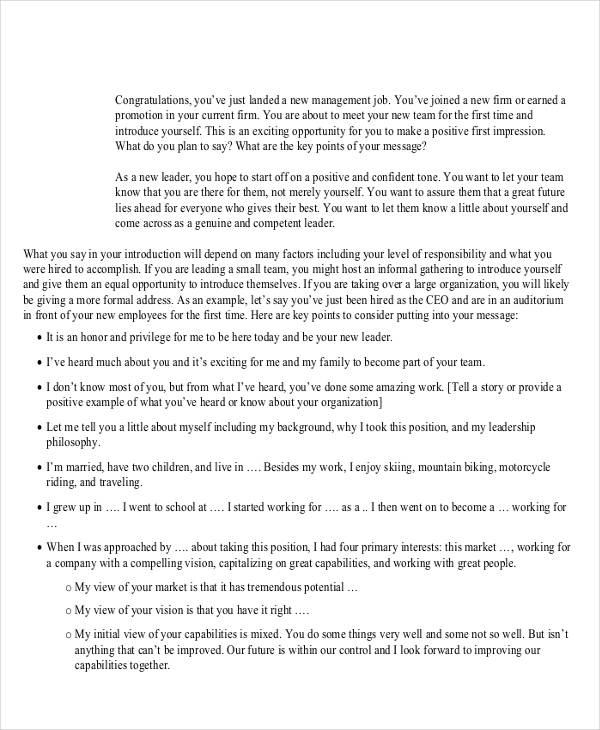
Size: 47 KB
3. Introduction Speech for Chairman
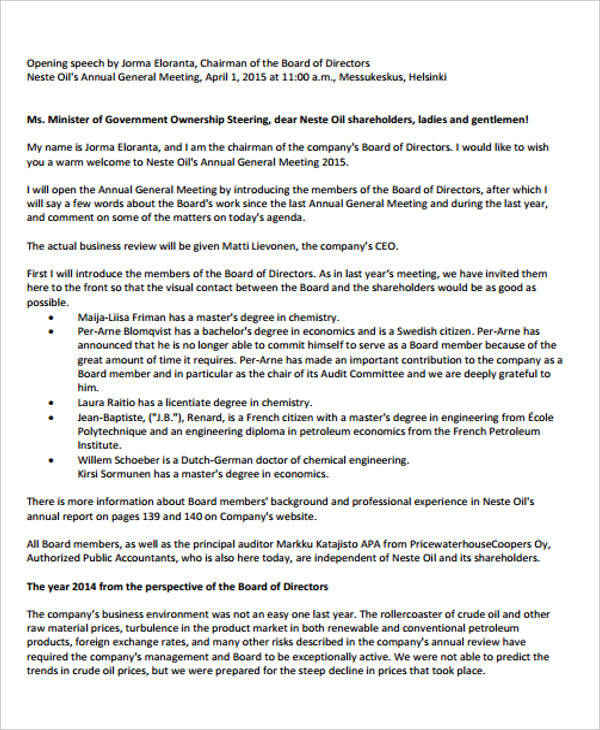
Size: 281 KB
4. Introduction Speech for Students
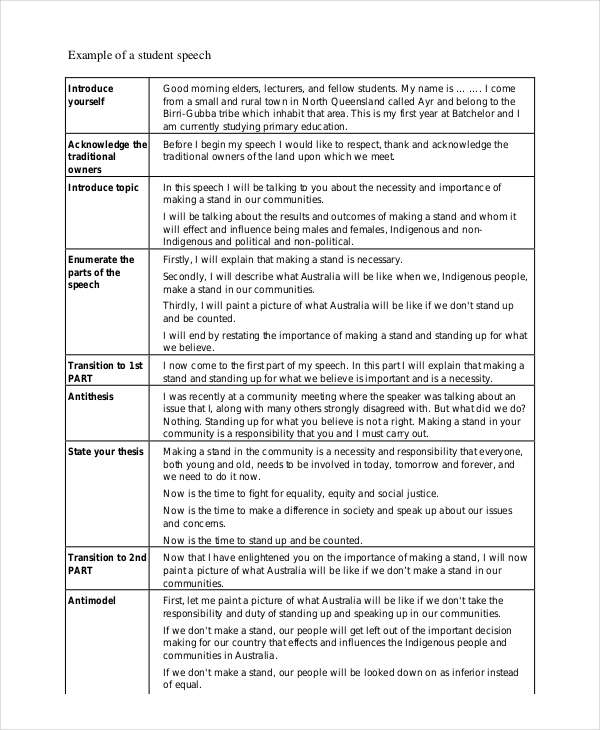
waalc.org.au
Size: 13 KB
5. Formal Introduction Sample
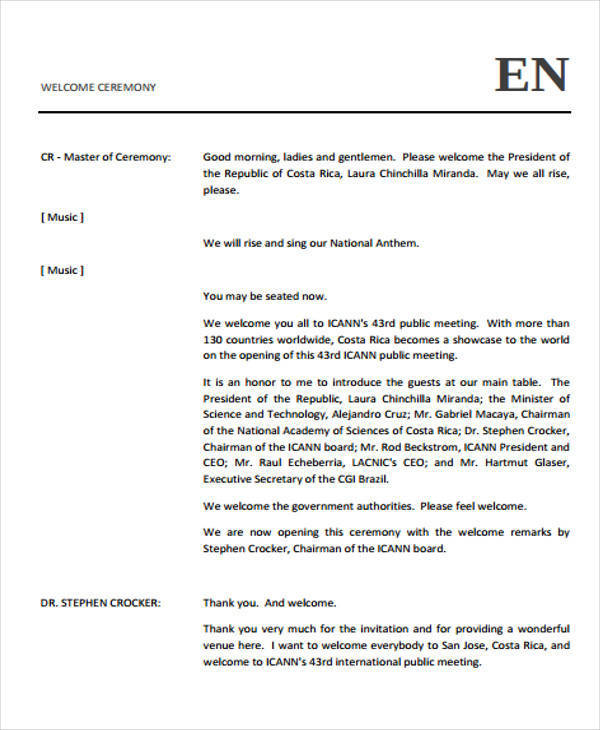
Size: 223 KB
6. 30 Second Self Introduction Speech for School Students
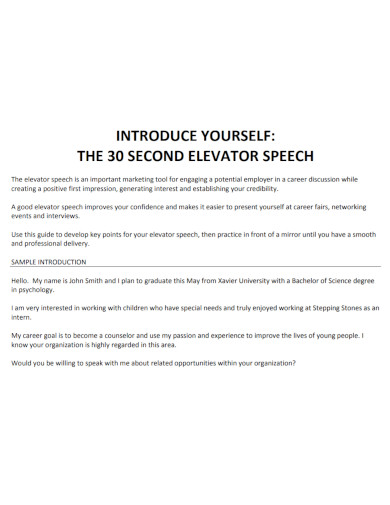
7. Self Introduction Speech for School Students
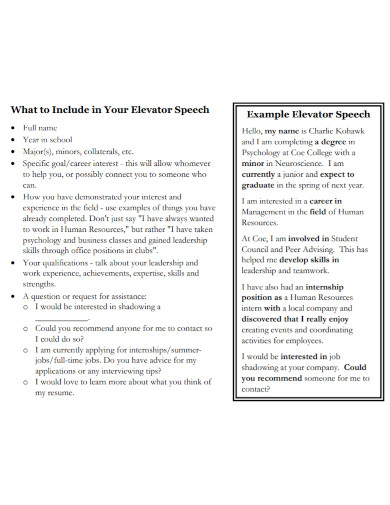
Size: 342 KB
8. New Self Introduction Speech for School Students

Size: 144 KB
9. Self Introduction Speech for School Students Template
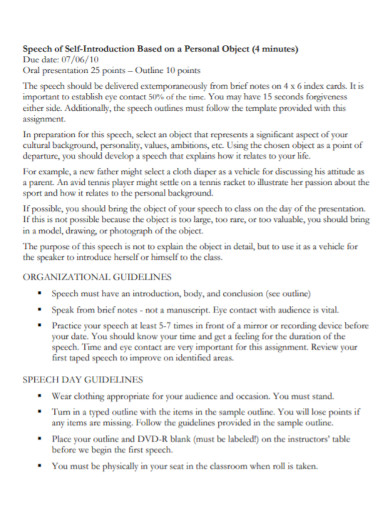
Size: 83 KB
10. 5 Minute Self Introduction Speech Template
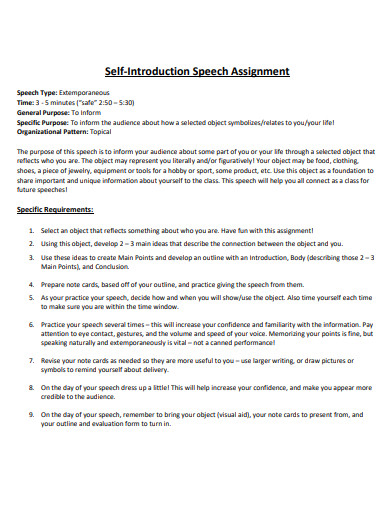
Size: 448 KB
11. Sample 5 Minute Self Introduction Speech
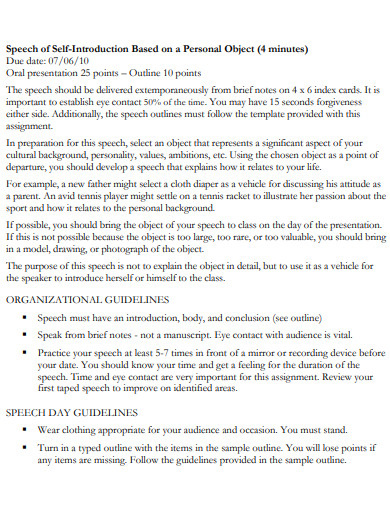
12. Basic 5 Minute Leader Speech
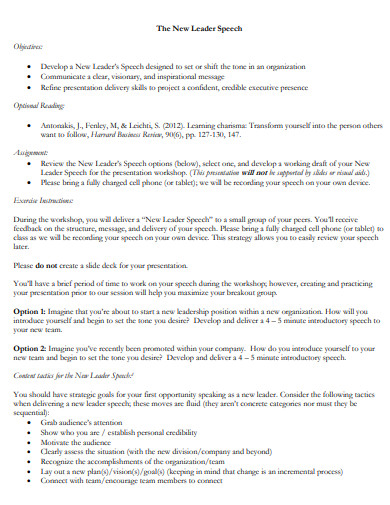
Size: 141 KB
13. Public Communication Speech
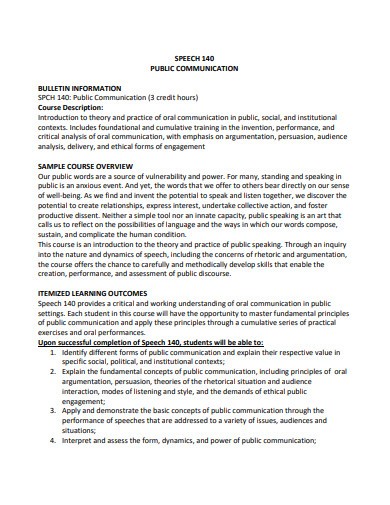
Size: 103 KB
14. 2 Minute Self Introduction Speech Template
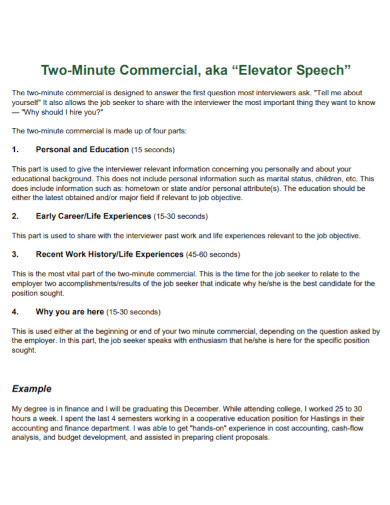
Size: 143 KB
15. 2 Minute Self Introduction Speech for Students
16. 2 minute self introduction speech for school students, 17. 2 minute self-introduction speech evaluation form.

Size: 201 KB
18. 30 Second Introduction Speech about Yourself
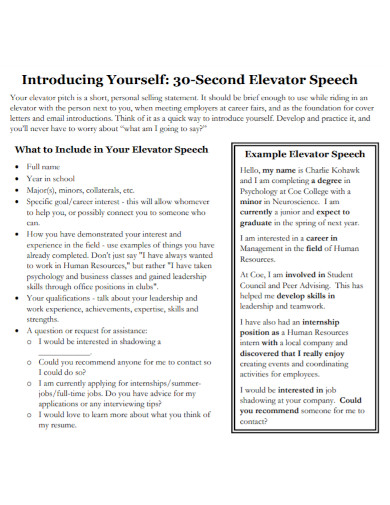
19. Introduction Speech about Yourself Example
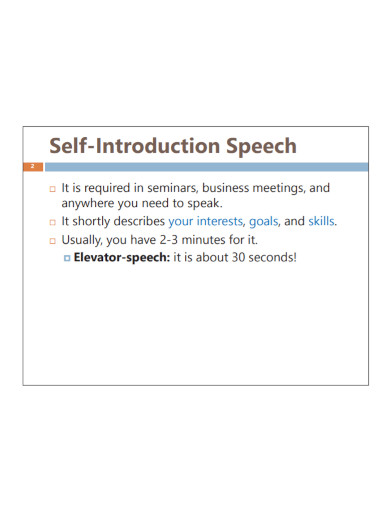
Size: 115 KB
20. Self Introduction Speech about Yourself
21. self-introduction speech based on a personal object, 22. printable introduction speech about yourself, 23. sample new manager introduction speech.
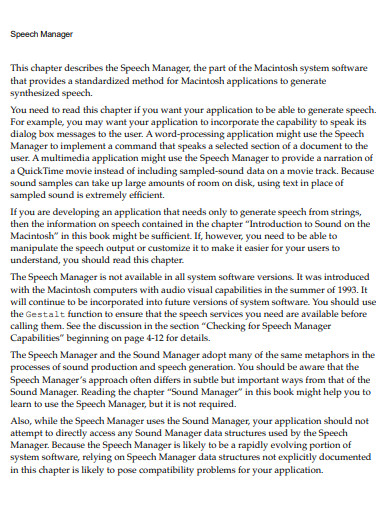
Size: 357 KB
24. Basic New Manager Introduction Speech
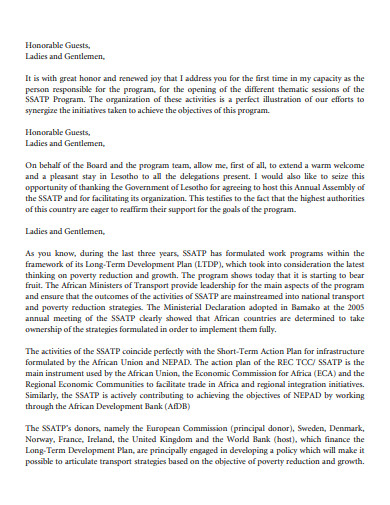
Size: 31 KB
25. New Manager Introduction Speech Example
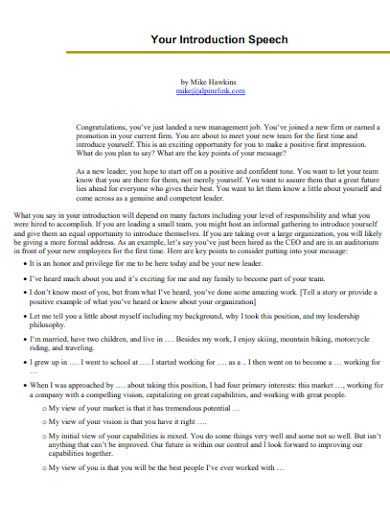
26. New Manager Introduction Speech in PDF
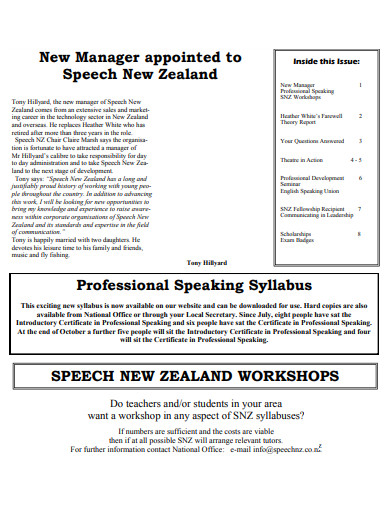
Size: 663 KB
What is a Speech Introduction?
A speech introduction is the opening segment of a speech or presentation that aims to draw the audience’s attention and create an immediate connection with the topic. It serves as the gateway to your main ideas, allowing you to present your message effectively. A well-crafted speech introduction can establish the context, highlight the importance of the subject matter, and engage the audience’s curiosity.
How to Write a Speech Introduction
Welcome to the step-by-step guide on crafting a captivating speech introduction! Whether you’re preparing for a formal presentation, a persuasive talk, or simply want to engage your audience effectively, this guide will walk you through the essential elements and techniques to create an attention-grabbing opening. Let’s dive in and learn how to captivate your listeners from the very beginning!
Step 1: Understand Your Audience
Before diving into crafting your speech introduction, take the time to observe your audience. Consider their interests, knowledge level, and preferences. Tailor your introduction to resonate with them, making it relatable and engaging. Understanding your audience will allow you to choose the right tone, language, and examples that best suit their needs.
Step 2: Develop a Clear Purpose
Define the purpose of your speech introduction. Are you trying to inspire, inform, or persuade? Knowing your objective will help you create a focused and impactful opening. Your purpose will also guide the structure and content of your introduction, ensuring that every word contributes to your overall message.
Step 3: Craft an Attention-Grabbing Opening
Begin your speech with a hook that captures the audience’s attention immediately. You can use a surprising statistic, an intriguing question, a relevant quote, or a compelling story. The key is to pique their curiosity and make them eager to hear more. The opening should be concise and powerful, setting the stage for the rest of your presentation.
Step 4: Provide a Roadmap
After the attention-grabbing opening, present a clear and concise outline of your speech. This roadmap gives the audience an overview of what to expect, guiding them through the main points you’ll be addressing. Outline formats can vary, but make sure it’s easy for the audience to follow and understand the structure of your speech.
1. Why is a strong speech introduction essential?
A compelling speech introduction captivates the audience, making them more likely to pay attention throughout the presentation. It sets the context, establishes your credibility, and sparks interest in your message.
2. Should I use literary devices in my speech introduction?
Using literary devices like metaphors, similes, or anecdotes can add flair and memorability to your introduction. However, use them judiciously, considering the context and your audience’s preferences.
3. Can I use both simple and compound sentences in my introduction?
Yes, varying your sentence structure adds rhythm and flow to your speech. Combine simple sentences for clarity with compound sentences for complexity and impact.
In conclusion, crafting an effective speech introduction requires careful consideration of your audience, purpose, and content. By following the step-by-step guide and incorporating attention-grabbing elements, you can deliver a compelling opening that leaves a lasting impression. Remember to use appropriate verbs and common nouns to keep your introduction clear and concise. By mastering this art, you set the stage for a powerful presentation that will undoubtedly resonate with your listeners.
Speech Introduction Generator
Text prompt
- Instructive
- Professional
Write a Speech Introduction for a keynote speaker at a conference.
Create a Speech Introduction for a guest lecturer in a university class.

Want to create or adapt books like this? Learn more about how Pressbooks supports open publishing practices.
8 Effective Introductions and Powerful Conclusions
Learning objectives.
- Identify the functions of introductions and conclusions.
- Understand the key parts of an introduction and a conclusion.
- Explore techniques to create your own effective introductions and conclusions.

Introductions and conclusions can be challenging. One of the most common complaints novice public speakers have is that they simply don’t know how to start or end a speech. It may feel natural to start crafting a speech at the beginning, but it can be difficult to craft an introduction for something which doesn’t yet exist. Many times, creative and effective ideas for how to begin a speech will come to speakers as they go through the process of researching and organizing ideas. Similarly, a conclusion needs to be well considered and leave audience members with a sense of satisfaction.
In this chapter, we will explore why introductions and conclusions are important, and we will identify various ways speakers can create impactful beginnings and endings. There is not a “right” way to start or end a speech, but we can provide some helpful guidelines that will make your introductions and conclusions much easier for you as a speaker and more effective for your audience.
The Importance of an Introduction

The introduction of a speech is incredibly important because it needs to establish the topic and purpose, set up the reason your audience should listen to you and set a precedent for the rest of the speech. Imagine the first day of a semester long class. You will have a different perception of the course if the teacher is excited, creative and clear about what is to come then if the teacher recites to you what the class is about and is confused or disorganized about the rest of the semester. The same thing goes for a speech. The introduction is an important opportunity for the speaker to gain the interest and trust of the audience.
Overall, an effective introduction serves five functions. Let’s examine each of these.
Gain Audience Attention and Interest
The first major purpose of an introduction is to gain your audience’s attention and get them interested in what you have to say. While your audience may know you, this is your speeches’ first impression! One common incorrect assumption beginning speakers make that people will naturally listen because the speaker is speaking. While many audiences may be polite and not talk while you’re speaking, actually getting them to listen and care about what you are saying is a completely different challenge. Think to a time when you’ve tuned out a speaker because you were not interested in what they had to say or how they were saying it. However, I’m sure you can also think of a time someone engaged you in a topic you wouldn’t have thought was interesting, but because of how they presented it or their energy about the subject, you were fascinated. As the speaker, you have the ability to engage the audience right away.
State the Purpose of Your Speech
The second major function of an introduction is to reveal the purpose of your speech to your audience. Have you ever sat through a speech wondering what the basic point was? Have you ever come away after a speech and had no idea what the speaker was talking about? An introduction is critical for explaining the topic to the audience and justifying why they should care about it. The speaker needs to have an in-depth understanding of the specific focus of their topic and the goals they have for their speech. Robert Cavett, the founder of the National Speaker’s Association, used the analogy of a preacher giving a sermon when he noted, “When it’s foggy in the pulpit, it’s cloudy in the pews.” The specific purpose is the one idea you want your audience to remember when you are finished with your speech. Your specific purpose is the rudder that guides your research, organization, and development of main points. The more clearly focused your purpose is, the easier it will be both for you to develop your speech and your audience to understand your core point. To make sure you are developing a specific purpose, you should be able to complete the sentence: “I want my audience to understand…” Notice that your specific speech purpose is phrased in terms of expected audience responses, not in terms of your own perspective.
Establish Credibility
One of the most researched areas within the field of communication has been Aristotle’s concept of ethos or credibility. First, and foremost, the idea of credibility relates directly to audience perception. You may be the most competent, caring, and trustworthy speaker in the world on a given topic, but if your audience does not perceive you as credible, then your expertise and passion will not matter to them. As public speakers, we need to communicate to our audiences why we are credible speakers on a given topic. James C. McCroskey and Jason J. Teven have conducted extensive research on credibility and have determined that an individual’s credibility is composed of three factors: competence, trustworthiness, and caring/goodwill (McCroskey & Teven, 1999). Competence is the degree to which a speaker is perceived to be knowledgeable or expert in a given subject by an audience member.
The second factor of credibility noted by McCroskey and Teven is trustworthiness or the degree to which an audience member perceives a speaker as honest. Nothing will turn an audience against a speaker faster than if the audience believes the speaker is lying. When the audience does not perceive a speaker as trustworthy, the information coming out of the speaker’s mouth is automatically perceived as deceitful.
Finally, caring/goodwill is the last factor of credibility noted by McCroskey and Teven. Caring/goodwill refers to the degree to which an audience member perceives a speaker as caring about the audience member. As indicated by Wrench, McCroskey, and Richmond, “If a receiver does not believe that a source has the best intentions in mind for the receiver, the receiver will not see the source as credible. Simply put, we are going to listen to people who we think truly care for us and are looking out for our welfare” (Wrench, McCroskey & Richmond, 2008). As a speaker, then, you need to establish that your information is being presented because you care about your audience and are not just trying to manipulate them. We should note that research has indicated that caring/goodwill is the most important factor of credibility. This understanding means that if an audience believes that a speaker truly cares about the audience’s best interests, the audience may overlook some competence and trust issues.
Credibility relates directly to audience perception. You may be the most competent, caring, and trustworthy speaker in the world on a given topic, but if your audience does not perceive you as credible, then your expertise and passion will not matter to them.
Trustworthiness is the degree to which an audience member perceives a speaker as honest.
Caring/goodwill is the degree to which an audience member perceives a speaker as caring about the audience member.
Provide Reasons to Listen
The fourth major function of an introduction is to establish a connection between the speaker and the audience, and one of the most effective means of establishing a connection with your audience is to provide them with reasons why they should listen to your speech. The idea of establishing a connection is an extension of the notion of caring/goodwill. In the chapters on Language and Speech Delivery, we’ll spend a lot more time talking about how you can establish a good relationship with your audience. This relationship starts the moment you step to the front of the room to start speaking.
Instead of assuming the audience will make their own connections to your material, you should explicitly state how your information might be useful to your audience. Tell them directly how they might use your information themselves. It is not enough for you alone to be interested in your topic. You need to build a bridge to the audience by explicitly connecting your topic to their possible needs.
Preview Main Ideas
The last major function of an introduction is to preview the main ideas that your speech will discuss. A preview establishes the direction your speech will take. We sometimes call this process signposting because you’re establishing signs for audience members to look for while you’re speaking. In the most basic speech format, speakers generally have three to five major points they plan on making. During the preview, a speaker outlines what these points will be, which demonstrates to the audience that the speaker is organized.
A study by Baker found that individuals who were unorganized while speaking were perceived as less credible than those individuals who were organized (Baker, 1965). Having a solid preview of the information contained within one’s speech and then following that preview will help a speaker’s credibility. It also helps your audience keep track of where you are if they momentarily daydream or get distracted.
Putting Together a Strong Introduction

Now that we have an understanding of the functions of an introduction, let’s explore the details of putting one together. As with all aspects of a speech, these may change based on your audience, circumstance, and topic. But this will give you a basic understanding of the important parts of an intro, what they do, and how they work together.
Attention Getting Device
An attention-getter is the device a speaker uses at the beginning of a speech to capture an audience’s interest and make them interested in the speech’s topic. Typically, there are four things to consider in choosing a specific attention-getting device:
- Topic and purpose of the speech
- Appropriateness or relevance to the audience
First, when selecting an attention-getting device is considering your speech topic and purpose. Ideally, your attention-getting device should have a relevant connection to your speech. Imagine if a speaker pulled condoms out of his pocket, yelled “Free sex!” and threw the condoms at the audience. This act might gain everyone’s attention, but would probably not be a great way to begin a speech about the economy. Thinking about your topic because the interest you want to create needs to be specific to your subject. More specifically, you want to consider the basic purpose of your speech. When selecting an attention getter, you want to make sure that you select one that corresponds with your basic purpose. If your goal is to entertain an audience, starting a speech with a quotation about how many people are dying in Africa each day from malnutrition may not be the best way to get your audience’s attention. Remember, one of the goals of an introduction is to prepare your audience for your speech . If your attention-getter differs drastically in tone from the rest of your speech the disjointedness may cause your audience to become confused or tune you out completely.
Possible Attention Getters
These will help you start brainstorming ideas for how to begin your speech. While not a complete list, these are some of the most common forms of attention-getters:
- Reference to Current Events
- Historical Reference
- Startling Fact
- Rhetorical Question
- Hypothetical Situation
- Demonstration
- Personal Reference
- Reference to Audience
- Reference to Occasion
Second, when selecting an attention-getting device, you want to make sure you are being appropriate and relevant to your specific audience. Different audiences will have different backgrounds and knowledge, so you should keep your audience in mind when determining how to get their attention. For example, if you’re giving a speech on family units to a group of individuals over the age of sixty-five, starting your speech with a reference to the television show Gossip Girl may not be the best idea because the television show may not be relevant to that audience.
Finally, the last consideration involves the speech occasion. Different occasions will necessitate different tones or particular styles or manners of speaking. For example, giving a eulogy at a funeral will have a very different feel than a business presentation. This understanding doesn’t mean certain situations are always the same, but rather taking into account the details of your circumstances will help you craft an effective beginning to your speech. When selecting an attention-getter, you want to make sure that the attention-getter sets the tone for the speech and situation.
Tones are particular styles or manners of speaking determined by the speech’s occasion.
Link to Topic
The link to the topic occurs when a speaker demonstrates how an attention-getting device relates to the topic of a speech. This presentation of the relationship works to transition your audience from the attention getter to the larger issue you are discussing. Often the attention-getter and the link to the topic are very clear. But other times, there may need to be a more obvious connection between how you began your attention-getting device and the specific subject you are discussing. You may have an amazing attention-getter, but if you can’t connect it to the main topic and purpose of your speech, it will not be as effective.
Significance
Once you have linked an attention-getter to the topic of your speech, you need to explain to your audience why your topic is important and why they should care about what you have to say. Sometimes you can include the significance of your topic in the same sentence as your link to the topic, but other times you may need to spell out in one or two sentences why your specific topic is important to this audience.
Thesis Statement
A thesis statement is a short, declarative sentence that states the purpose, intent, or main idea of a speech. A strong, clear thesis statement is very valuable within an introduction because it lays out the basic goal of the entire speech. We strongly believe that it is worthwhile to invest some time in framing and writing a good thesis statement. You may even want to write a version of your thesis statement before you even begin conducting research for your speech in order to guide you. While you may end up rewriting your thesis statement later, having a clear idea of your purpose, intent, or main idea before you start searching for research will help you focus on the most appropriate material.
Preview of Speech
The final part of an introduction contains a preview of the major points to be covered by your speech. I’m sure we’ve all seen signs that have three cities listed on them with the mileage to reach each city. This mileage sign is an indication of what is to come. A preview works the same way. A preview foreshadows what the main body points will be in the speech. For example, to preview a speech on bullying in the workplace, one could say, “To understand the nature of bullying in the modern workplace, I will first define what workplace bullying is and the types of bullying, I will then discuss the common characteristics of both workplace bullies and their targets, and lastly, I will explore some possible solutions to workplace bullying.” In this case, each of the phrases mentioned in the preview would be a single distinct point made in the speech itself. In other words, the first major body point in this speech would examine what workplace bullying is and the types of bullying; the second major body point in this speech would discuss the characteristics of both workplace bullies and their targets; and lastly, the third body point in this speech would explore some possible solutions to workplace bullying.
Putting it all together
The importance of introductions often leads speakers to work on them first, attending to every detail. While it is good to have some ideas and notes about the intro, specifically the thesis statement, it is often best to wait until the majority of the speech is crafted before really digging into the crafting of the introduction. This timeline may not seem intuitive, but remember, the intro is meant to introduce your speech and set up what is to come. It is difficult to introduce something that you haven’t made yet. This is why working on your main points first can help lead to an even stronger introduction.
Why Conclusions Matter

Willi Heidelbach – Puzzle2 – CC BY 2.0.
As public speaking professors and authors, we have seen many students give otherwise good speeches that seem to fall apart at the end. We’ve seen students end their three main points by saying things such as “OK, I’m done”; “Thank God that’s over!”; or “Thanks. Now what? Do I just sit down?” It’s understandable to feel relief at the end of a speech, but remember that as a speaker, your conclusion is the last chance you have to drive home your ideas. When a speaker opts to end the speech with an ineffective conclusion, or no conclusion at all, the speech loses the energy that’s been created, and the audience is left confused and disappointed. Instead of falling prey to emotional exhaustion, remind yourself to keep your energy up as you approach the end of your speech, and plan ahead so that your conclusion will be an effective one.
Of course, a good conclusion will not rescue a poorly prepared speech. Thinking again of the chapters in a novel, if one bypasses all the content in the middle, the ending often isn’t very meaningful or helpful. So to take advantage of the advice in this chapter, you need to keep in mind the importance of developing a speech with an effective introduction and an effective body. If you have these elements, you will have the foundation you need to be able to conclude effectively. Just as a good introduction helps bring an audience member into the world of your speech, and a good speech body holds the audience in that world, a good conclusion helps bring that audience member back to the reality outside of your speech.
In this section, we’re going to examine the functions fulfilled by the conclusion of a speech. A strong conclusion serves to signal the end of the speech and helps your listeners remember your speech.
Signals the End
The first thing a good conclusion can do is to signal the end of a speech. You may be thinking that showing an audience that you’re about to stop speaking is a “no brainer,” but many speakers don’t prepare their audience for the end. When a speaker just suddenly stops speaking, the audience is left confused and disappointed. Instead, we want to make sure that audiences are left knowledgeable and satisfied with our speeches. In the next section, we’ll explain in great detail about how to ensure that you signal the end of your speech in a manner that is both effective and powerful.
Aids Audience’s Memory of Your Speech
The second reason for a good conclusion stems out of some research reported by the German psychologist Hermann Ebbinghaus back in 1885 in his book Memory: A Contribution to Experimental Psychology (Ebbinghaus, 1885). Ebbinghaus proposed that humans remember information in a linear fashion, which he called the serial position effect. He found an individual’s ability to remember information in a list (e.g. a grocery list, a chores list, or a to-do list) depends on the location of an item on the list. Specifically, he found that items toward the top of the list and items toward the bottom of the list tended to have the highest recall rates. The serial position effect finds that information at the beginning of a list (primacy) and information at the end of the list (recency) are easier to recall than information in the middle of the list.
So what does this have to do with conclusions? A lot! Ray Ehrensberger wanted to test Ebbinghaus’ serial position effect in public speaking. Ehrensberger created an experiment that rearranged the ordering of a speech to determine the recall of information (Ehrensberger, 1945). Ehrensberger’s study reaffirmed the importance of primacy and recency when listening to speeches. In fact, Ehrensberger found that the information delivered during the conclusion (recency) had the highest level of recall overall.
Steps of a Conclusion

Matthew Culnane – Steps – CC BY-SA 2.0.
In the previous sections, we discussed the importance a conclusion has on a speech. In this section, we’re going to examine the three steps to building an effective conclusion.
Restatement of the Thesis
Restating a thesis statement is the first step to a powerful conclusion. As we explained earlier, a thesis statement is a short, declarative sentence that states the purpose, intent, or main idea of a speech. When we restate the thesis statement at the conclusion of our speech, we’re attempting to reemphasize what the overarching main idea of the speech has been. Suppose your thesis statement was, “I will analyze Barack Obama’s use of lyricism in his July 2008 speech, ‘A World That Stands as One.’” You could restate the thesis in this fashion at the conclusion of your speech: “In the past few minutes, I have analyzed Barack Obama’s use of lyricism in his July 2008 speech, ‘A World That Stands as One.’” Notice the shift in tense. The statement has gone from the future tense (this is what I will speak about) to the past tense (this is what I have spoken about). Restating the thesis in your conclusion reminds the audience of the main purpose or goal of your speech, helping them remember it better.
Review of Main Points
After restating the speech’s thesis, the second step in a powerful conclusion is to review the main points from your speech. One of the biggest differences between written and oral communication is the necessity of repetition in oral communication. When we preview our main points in the introduction, effectively discuss and make transitions to our main points during the body of the speech, and review the main points in the conclusion, we increase the likelihood that the audience will retain our main points after the speech is over.
In the introduction of a speech, we deliver a preview of our main body points, and in the conclusion, we deliver a review . Let’s look at a sample preview:
In order to understand the field of gender and communication, I will first differentiate between the terms biological sex and gender. I will then explain the history of gender research in communication. Lastly, I will examine a series of important findings related to gender and communication.
In this preview, we have three clear main points. Let’s see how we can review them at the conclusion of our speech:
Today, we have differentiated between the terms biological sex and gender, examined the history of gender research in communication, and analyzed a series of research findings on the topic.
In the past few minutes, I have explained the difference between the terms “biological sex” and “gender,” discussed the rise of gender research in the field of communication, and examined a series of groundbreaking studies in the field.
Notice that both of these conclusions review the main points initially set forth. Both variations are equally effective reviews of the main points, but you might like the linguistic turn of one over the other. Remember, while there is a lot of science to help us understand public speaking, there’s also a lot of art as well. You are always encouraged to choose the wording that you think will be most effective for your audience.
Concluding Device
The final part of a powerful conclusion is the concluding device. A concluding device is a final thought you want your audience members to have when you stop speaking. It also provides a definitive sense of closure to your speech. One of the authors of this text often makes an analogy between a gymnastics dismount and the concluding device in a speech. Just as a gymnast dismounting the parallel bars or balance beam wants to stick the landing and avoid taking two or three steps, a speaker wants to “stick” the ending of the presentation by ending with a concluding device instead of with, “Well, umm, I guess I’m done.” Miller observed that speakers tend to use one of ten concluding devices when ending a speech (Miller, 1946). The rest of this section is going to examine these ten concluding devices and one additional device that we have added.
Conclude with a Challenge
The first way that Miller found that some speakers end their speeches is with a challenge. A challenge is a call to engage in some activity that requires a special effort. In a speech on the necessity of fund-raising, a speaker could conclude by challenging the audience to raise 10 percent more than their original projections. In a speech on eating more vegetables, you could challenge your audience to increase their current intake of vegetables by two portions daily. In both of these challenges, audience members are being asked to go out of their way to do something different that involves effort on their part.
Conclude with a Quotation
A second way you can conclude a speech is by reciting a quotation relevant to the speech topic. When using a quotation, you need to think about whether your goal is to end on a persuasive note or an informative note. Some quotations will have a clear call to action, while other quotations summarize or provoke thought. For example, let’s say you are delivering an informative speech about dissident writers in the former Soviet Union. You could end by citing this quotation from Alexander Solzhenitsyn: “A great writer is, so to speak, a second government in his country. And for that reason, no regime has ever loved great writers” (Solzhenitsyn, 1964). Notice that this quotation underscores the idea of writers as dissidents, but it doesn’t ask listeners to put forth the effort to engage in any specific thought process or behavior. If, on the other hand, you were delivering a persuasive speech urging your audience to participate in a very risky political demonstration, you might use this quotation from Martin Luther King Jr.: “If a man hasn’t discovered something that he will die for, he isn’t fit to live” (King, 1963). In this case, the quotation leaves the audience with the message that great risks are worth taking, that they make our lives worthwhile, and that the right thing to do is to go ahead and take that great risk.
Conclude with a Summary
When a speaker ends with a summary, they are simply elongating the review of the main points. While this may not be the most exciting concluding device, it can be useful for information that was highly technical or complex or for speeches lasting longer than thirty minutes. Typically, for short speeches (like those in your class), this summary device should be avoided.
Conclude by Visualizing the Future
The purpose of a conclusion that refers to the future is to help your audience imagine the future you believe can occur. If you are giving a speech on the development of video games for learning, you could conclude by depicting the classroom of the future where video games are perceived as true learning tools and how those tools could be utilized. More often, speakers use visualization of the future to depict how society would be, or how individual listeners’ lives would be different if the speaker’s persuasive attempt worked. For example, if a speaker proposes that a solution to illiteracy is hiring more reading specialists in public schools, the speaker could ask her or his audience to imagine a world without illiteracy. In this use of visualization, the goal is to persuade people to adopt the speaker’s point of view. By showing that the speaker’s vision of the future is a positive one, the conclusion should help to persuade the audience to help create this future.
Conclude with an Appeal for Action
Probably the most common persuasive concluding device is the appeal for action or the call to action. In essence, the appeal for action occurs when a speaker asks their audience to engage in a specific behavior or change in thinking. When a speaker concludes by asking the audience “to do” or “to think” in a specific manner, the speaker wants to see an actual change. Whether the speaker appeals for people to eat more fruit, buy a car, vote for a candidate, oppose the death penalty, or sing more in the shower, the speaker is asking the audience to engage in action.
One specific type of appeal for action is the immediate call to action. Whereas some appeals ask for people to engage in behavior in the future, an immediate call to action asks people to engage in behavior right now. If a speaker wants to see a new traffic light placed at a dangerous intersection, he or she may conclude by asking all the audience members to sign a digital petition right then and there, using a computer the speaker has made available ( http://www.petitiononline.com ). Here are some more examples of immediate calls to action:
- In a speech on eating more vegetables, pass out raw veggies and dip at the conclusion of the speech.
- In a speech on petitioning a lawmaker for a new law, provide audience members with a prewritten e-mail they can send to the lawmaker.
- In a speech on the importance of using hand sanitizer, hand out little bottles of hand sanitizer and show audience members how to correctly apply the sanitizer.
- In a speech asking for donations for a charity, send a box around the room asking for donations.
These are just a handful of different examples we’ve seen students use in our classrooms to elicit an immediate change in behavior. These immediate calls to action may not lead to long-term change, but they can be very effective at increasing the likelihood that an audience will change behavior in the short term.
Conclude by Inspiration
By definition, the word inspire means to affect or connect with someone emotionally. Both affect and arouse have strong emotional connotations. The ultimate goal of an inspiration concluding device is similar to an “appeal for action,” but the ultimate goal is more lofty or ambiguous. The goal is to stir someone’s emotions in a specific manner. Maybe a speaker is giving an informative speech about the prevalence of domestic violence in our society today. That speaker could end the speech by reading Paulette Kelly’s powerful poem “I Got Flowers Today.” “I Got Flowers Today” is a poem that evokes strong emotions because it’s about an abuse victim who received flowers from her abuser every time she was victimized. The poem ends by saying, “I got flowers today… Today was a special day. It was the day of my funeral. Last night he killed me” (Kelly, 1994).
Conclude with Advice
The next concluding device is one that should be used primarily by speakers who are recognized as expert authorities on a given subject. Advice is a speaker’s opinion about what should or should not be done. The problem with opinions is that everyone has one, and one person’s opinion is not necessarily any more correct than another’s. There needs to be a really good reason for your opinion. Your advice should matter to your audience. If, for example, you are an expert in nuclear physics, you might conclude a speech on energy by giving advice about the benefits of nuclear energy.
Conclude by Proposing a Solution
Another way a speaker can conclude a speech powerfully is to offer a solution to the problem discussed within a speech. For example, perhaps a speaker has been discussing the problems associated with the disappearance of art education in the United States. The speaker could then propose a solution for creating more community-based art experiences for school children as a way to fill this gap. Although this can be a compelling conclusion, a speaker must ask themselves whether the solution should be discussed in more depth as a stand-alone main point within the body of the speech so that audience concerns about the proposed solution may be addressed.
Conclude with a Question
Another way you can end a speech is to ask a rhetorical question that forces the audience to ponder an idea. Maybe you are giving a speech on the importance of the environment, so you end the speech by saying, “Think about your children’s future. What kind of world do you want them raised in? A world that is clean, vibrant, and beautiful—or one that is filled with smog, pollution, filth, and disease?” Notice that you aren’t asking the audience to verbally or nonverbally answer the question. The goal of this question is to force the audience into thinking about what kind of world they want for their children.
Conclude with a Reference to Audience
The last concluding device discussed by Miller (1946) was a reference to one’s audience. This concluding device is when a speaker attempts to answer the audience question, “What’s in it for me?” The goal of this concluding device is to spell out the direct benefits a behavior or thought change has for audience members. For example, a speaker talking about stress reduction techniques could conclude by listing all the physical health benefits stress reduction offers (e.g. improved reflexes, improved immune system, improved hearing, reduction in blood pressure). In this case, the speaker is spelling out why audience members should care. They’re telling the audience what’s in it for them!
Connect to your Introduction
Finally, one tactic a speaker often uses is to link the introduction of the speech to the conclusion. For example, if you began your speech with a quotation, your conclusion may refer back to that person’s words in respect to what your audience has learned throughout your speech. While not always necessary, linking back to your introduction can provide a feeling of coming full circle for your audience. The repetitive nature can also help aid in remembering your speech and topic. However, you don’t want to just repeat. Instead, you want to utilize similar aspects of your attention getter to illustrate growth or movement from the beginning of your speech to the end.
A concluding device is a final thought you want your audience members to have when you stop speaking.
A challenge is a call to engage in some activity that requires special effort.
An appeal for action occurs when a speaker asks their audience to engage in a specific behavior or change in thinking.
An immediate call to action asks people to engage in behavior right now.
Inspire means to affect or connect with someone emotionally.
Advice is a speaker’s opinion about what should or should not be done.
Informative versus Persuasive Conclusions
As you read through the ten possible ways to conclude a speech, hopefully, you noticed that some of the methods are more appropriate for persuasive speeches and others are more appropriate for informative speeches. To help you choose appropriate conclusions for informative, persuasive, or entertaining speeches, we’ve created a table to help you quickly identify suitable concluding devices.
Your Speech Purpose and Concluding Devices
Ebbinghaus, H. (1885). Memory: A contribution to experimental psychology [Online version]. Retrieved from http://psychclassics.yorku.ca/Ebbinghaus/index.htm .
Ehrensberger, R. (1945). An experimental study of the relative effectiveness of certain forms of emphasis in public speaking. Speech Monographs, 12 , 94–111. doi: 10.1080/03637754509390108.
Kelly, P. (1994). I got flowers today. In C. J. Palmer & J. Palmer, Fire from within . Painted Post, NY: Creative Arts & Science Enterprises.
King, M. L. (1963, June 23). Speech in Detroit. Cited in Bartlett, J., & Kaplan, J. (Eds.), Bartlett’s familiar quotations (6th ed.). Boston, MA: Little, Brown & Co., p. 760.
Miller, E. (1946). Speech introductions and conclusions. Quarterly Journal of Speech, 32 , 181–183.
Solzhenitsyn, A. (1964). The first circle. New York: Harper & Row. Cited in Bartlett, J., & Kaplan, J. (Eds.), Bartlett’s familiar quotations (6th ed.). Boston, MA: Little, Brown & Co., p. 746.
Stand up, Speak out Copyright © 2017 by Josh Miller; Marnie Lawler-Mcdonough; Megan Orcholski; Kristin Woodward; Lisa Roth; and Emily Mueller is licensed under a Creative Commons Attribution-NonCommercial-ShareAlike 4.0 International License , except where otherwise noted.
Share This Book
- PRO Courses Guides New Tech Help Pro Expert Videos About wikiHow Pro Upgrade Sign In
- EDIT Edit this Article
- EXPLORE Tech Help Pro About Us Random Article Quizzes Request a New Article Community Dashboard This Or That Game Popular Categories Arts and Entertainment Artwork Books Movies Computers and Electronics Computers Phone Skills Technology Hacks Health Men's Health Mental Health Women's Health Relationships Dating Love Relationship Issues Hobbies and Crafts Crafts Drawing Games Education & Communication Communication Skills Personal Development Studying Personal Care and Style Fashion Hair Care Personal Hygiene Youth Personal Care School Stuff Dating All Categories Arts and Entertainment Finance and Business Home and Garden Relationship Quizzes Cars & Other Vehicles Food and Entertaining Personal Care and Style Sports and Fitness Computers and Electronics Health Pets and Animals Travel Education & Communication Hobbies and Crafts Philosophy and Religion Work World Family Life Holidays and Traditions Relationships Youth
- Browse Articles
- Learn Something New
- Quizzes Hot
- This Or That Game New
- Train Your Brain
- Explore More
- Support wikiHow
- About wikiHow
- Log in / Sign up
- Education and Communications
- Communication Skills
- Public Speaking
- Speechwriting
How to Write a Speech Introducing Yourself
Last Updated: August 31, 2023 Fact Checked
This article was co-authored by Lynn Kirkham . Lynn Kirkham is a Professional Public Speaker and Founder of Yes You Can Speak, a San Francisco Bay Area-based public speaking educational business empowering thousands of professionals to take command of whatever stage they've been given - from job interviews, boardroom talks to TEDx and large conference platforms. Lynn was chosen as the official TEDx Berkeley speaker coach for the last four years and has worked with executives at Google, Facebook, Intuit, Genentech, Intel, VMware, and others. There are 15 references cited in this article, which can be found at the bottom of the page. This article has been fact-checked, ensuring the accuracy of any cited facts and confirming the authority of its sources. This article has been viewed 3,786,290 times.
First impressions have a big impact on how others perceive you, so how you introduce yourself to others is extremely important. Many people call an introductory speech an elevator speech, because it should be succinct enough that you could introduce yourself and tell someone about your goals or interests in the time it takes to ride an elevator. It may also be called an "icebreaker" speech, as it breaks the ice and lets others get to know you. [1] X Research source Consider your words carefully when you write a speech introducing yourself. Crafting a good self-introduction can either build or harm your credibility.
Sample Speeches

Preparing Your Speech

- State your name in the very first sentence of your speech. This can be very straightforward: "Good afternoon!/Good morning! My name is Deshawn Smith, and I am a computer programming student at the University of Arkansas."
- If the introduction is work-related, mention your interests and your career goals together in the same sentence. This will save on time and convey that your personal interests can serve your professional goals. For example, "I am working on an app that allows people to order pizza from their Twitter account."
- You may want to mention your education or professional training background, if it is relevant and appropriate. "This is the fifth app I've designed. My second app, which helped people locate dog parks near them, won an award at my university."

- If you are explaining your passion or goal and how it helped formed your progression up to this point, that can help you tell a compelling story about yourself. For example, if you're writing a speech for your college speech class , you might want to explain how you got into computers at an early age and why they're important to you now as you pursue your career goals.
- If, however, you are introducing yourself to potential clients at a business lunch, they are probably not interested in your hobbies. They will want to know what you are doing right now and what your skills are.
- Try writing one draft with your experience/hobbies and one without, and run both versions by an objective listener who can give you feedback before your speech.

- Highlight the qualities, skills and experience you have that are most relevant for the audience and occasion. For example, "Because of my background in app writing and my extensive network of professional connections, I have a strong grasp of what today's young professionals are looking for. My apps offer convenience and immediate gratification."
- You are trying to present yourself as a professional while making a strong and lasting impression.
- If you're trying to sell yourself to a group of new colleagues, you probably won't need to tell them about your family life, or anything outside of work that isn't directly relevant.

- You can simultaneously demonstrate your skills and experience, while presenting yourself as a forward-looking person who is always learning and developing. For example, you could say, "I spend a lot of time attending app conventions and conferences so I can learn what audiences are looking for. I pride myself on staying on the cutting edge of app design."
- Try to tie this into your broader outline of your career goals and personal development.
Revising and Practicing Your Speech

- Make sure that if this is an assignment, you stay within the assigned guidelines.
- If your speech is supposed to be 3-5 minutes, a 7-minute speech and a 2-minute speech are equally inappropriate.
- If you are giving a brief introductory speech in an interview , be certain that you don't go over the recommended time.

- Avoid long rambling sentences, and use direct and concise prose as much as possible.
- Think about your sentence structure carefully. Reading your speech out loud will help you determine when you have overly long sentences that need to be restructured.

- Practicing in front of other people will enable you to gauge whether your speech captures the interest of your listeners.
- Think about which parts of the speech were successful and which parts weren't.
- Try to get as much detailed feedback as possible by asking specific as well as general questions after your speech.
- As well as saying "how did you like the speech?", ask specifically what parts were the strongest and weakest.
- Check that you delivered a clear message by asking your practice audience what they took away from the speech.

- If you are staring down at a piece of paper all the time, the audience might struggle to truly engage with what you are saying.
- You can, however, bring an index card with bullet points, just in case you freeze up. You shouldn't write your whole speech on the card, just the main points you hope to cover.
- Think of the card as a point of reference, rather than a backup for your speech.
Planning Your Speech

- Who is the intended audience?
- What is the purpose of my introduction?
- What are the expectations others may have?

- Stick to one or two main points you want to convey about yourself. You can always add more if time allows it.
- Depending on the audience and function of your speech, you shouldn't allow the focus to become too narrow. For example, if you're introducing yourself to a crowd of prospective investors, you'd focus on your skills to build their confidence in you. If you're introducing yourself to a general audience -- say, for a speech class in college -- you can be a bit more wide-ranging.
- Remember that you're introducing yourself in general, and you want to present yourself as an interesting and rounded individual. [12] X Research source
- That doesn't mean you should spend time talking about your love of baseball when you are introducing yourself in a professional scenario.

- Are you hoping to win someone over to your point of view with this introduction, or to inspire/motivate someone to work hard under your leadership?
- All of these will affect the things you say in your introduction and the way you say them. [14] X Research source
Delivering Your Speech

- You can also try some visualization techniques to help ease your nervousness and give you confidence for your speech.
- Imagine the way you will feel when you have finished delivering your speech and are met with smiling faces and resounding applause. Then channel that confidence into the actual speech you are about to deliver.

- Avoid crossing your arms or clutching your hands.
- Don't stare down at the ground or cling to the table or lecture in front of you.
- Make eye contact across the room in a measured and controlled way. Avoid lingering on one person, but also avoid darting your eyes back and forth restlessly.
- Try making eye contact with one person on the left side of the room, then one person on the right side of the room. Shift across the room, but in a controlled way that feels natural and relaxed.

- Aim for a comfortable, conversational pace of dialogue.
- Practicing your speech in front of other people, or recording it and listening back are great ways to judge the tempo of your speech.

- Self-deprecating humor can help you come across as humble and likable. For example, if you've accidentally skipped forward in your speech and have to circle back, you could say something like, "And now I'm going to cycle back and tell you something I forgot before. If you wanted to get to know the "real me," you're seeing it now!"
- You can also make a quick, humorous nod to your mistake and move on. For example, if you come out and you mess up the very first line, you could say something like, "Wow, excuse me. Here I am so excited to tell you about myself that I've mixed up all my words. Let me try that again."
- Don't be too self-deprecating, however. You are still trying to ensure people remember you for your strengths and competencies. Move on quickly.
Expert Q&A

- Improve eye contact with the audience. Be direct and move confidently during the speech. Thanks Helpful 19 Not Helpful 3
- Do not be afraid to make yourself sound good. After all, this is an introduction, and the first impression you will make. Thanks Helpful 22 Not Helpful 4
- If the introduction is too long, you will lose your audience's attention. A good introduction should be short and to the point. Thanks Helpful 18 Not Helpful 6

You Might Also Like

- ↑ https://courses.p2pu.org/en/groups/public-speaking-2/content/icebreaker-introduce-yourself/
- ↑ https://courses.lumenlearning.com/publicspeakingprinciples/chapter/chapter-8-outlining-your-speech/
- ↑ https://www.indeed.com/career-advice/interviewing/how-to-give-an-elevator-pitch-examples
- ↑ https://www.forbes.com/sites/serenitygibbons/2023/05/31/3-tips-to-set-yourself-apart-with-unique-branding/?sh=5421a3b03baa
- ↑ https://www.hamilton.edu/academics/centers/oralcommunication/guides/shortening-a-speech
- ↑ https://writingcenter.unc.edu/tips-and-tools/speeches/
- ↑ https://www.unr.edu/writing-speaking-center/student-resources/writing-speaking-resources/speech-delivery
- ↑ Lynn Kirkham. Public Speaking Coach. Expert Interview. 20 November 2019.
- ↑ https://courses.lumenlearning.com/wm-publicspeaking/chapter/methods-of-speech-delivery/
- ↑ https://www.comm.pitt.edu/oral-comm-lab/audience-analysis
- ↑ https://open.lib.umn.edu/writingforsuccess/chapter/6-1-purpose-audience-tone-and-content/
- ↑ https://pac.org/content/speechwriting-101-writing-effective-speech
- ↑ https://sps.columbia.edu/news/five-ways-improve-your-body-language-during-speech
- ↑ https://www.apa.org/monitor/2017/02/tips-speaking
- ↑ https://professional.dce.harvard.edu/blog/10-tips-for-improving-your-public-speaking-skills/
About This Article

To write a speech introducing yourself, start by organizing the information you want to include. When writing content, consider the purpose of the speech, your intended audience, and your goals for the introduction. You can speak about your education, professional background, career/career goals, and outside interests, but keep things brief and to the point. Only include information that is important and relevant to your listeners. Don't forget to state your name in the first sentence of the speech. To learn more from our English Ph.D. co-author, such as how to practice and memorize your speech, continue reading the article! Did this summary help you? Yes No
- Send fan mail to authors
Reader Success Stories
Rebecca Steudeman
Feb 27, 2017
Did this article help you?

Rose Martinez
Oct 26, 2018
May 26, 2017
Kutmanai Kutia
Jul 17, 2018
Joseph Johnson
May 16, 2017

Featured Articles

Trending Articles

Watch Articles

- Terms of Use
- Privacy Policy
- Do Not Sell or Share My Info
- Not Selling Info
wikiHow Tech Help Pro:
Level up your tech skills and stay ahead of the curve

Want to create or adapt books like this? Learn more about how Pressbooks supports open publishing practices.
22 Practice: Special Occasion Speeches – Giving an Introduction Speech
Special occasion speeches: introductions.

This chapter mirrors a D2L LodeStar Activity
Be Prepared to Introduce Yourself
A quick speech can occur on the “spur of the moment.” Will you be ready? Think of the times you are at a birthday party, a funeral, a local town meeting, an awards ceremony or a wedding and someone steps up to say a few words. Are you ready to do so? What if the topic turns toward you — are you able to introduce yourself in a minute or two? Are you ready with an “elevator speech” to introduce yourself to the CEO who just entered the third-floor mailroom elevator with you? It is the hope of your Public Speaking Instructor that you are. This chapter will discuss Speeches of Introduction.
- Primary Materials – Chapter 17
- Learning Outcomes Highlighted for this Unit
Students should be able to:
1.1 Demonstrate appropriate topic selection, audience analysis, organization, and content development in a speaker-audience setting.
1.3 Practice effective verbal and nonverbal delivery techniques that are well suited to the occasion and audience.
1.5 Demonstrate the ability to listen, analyze, and provide feedback on public discourse.
What are Introduction Speeches?
When introducing yourself, you might find yourself feeling “exposed” or “vulnerable.” It is a situation that asks you to create a public presentation or “persona” of yourself. Others might also see this as an opportunity to shine! “Networking” sounds a lot better than “exposure!” Like all speeches, an occasion where you must speak about yourself asks you to.
Dr. Scholl (2012) in Chapter 17 speaks to the purpose of the Introduction Speech:
A speech of introduction introduces the main speaker at an event and inspires the audience to listen to that speaker (O’Hair & Stewart, 1999). Any speech of introduction needs to be brief. After all, the person making the introduction should not be the focus of attention. The introductory speech usually has three components: (a) provide a brief backdrop or background of the main speaker, (b) introduce the speaker’s topic, and (c) an invitation from the audience to warmly welcome the speaker (p. 17-2).
Sometimes the Introduction is about YOU!

In this case, given about yourself. Sometimes they are planned and serious, like in a press conference or even in a victim’s impact statement in court. More likely, you will be asked to introduce yourself in a classroom, conference, or work setting. It seems we introduce ourself throughout our lives: show and tell in Kindergarten, the “3 items that introduce me” in a middle school Language Arts class, the first day of a college class.
It is the hope of your Public Speaking Instructor that you will feel confident to rise to the occasion if you are asked to introduce yourself when called upon. Imagine yourself at a conference being asked to, “Introduce yourself, sharing why you are here today, what you hope to gain, and how you will use the materials you learn in the next week.” This is a typical question! Even in classroom settings outside Public Speaking courses, you will experience “Icebreakers” where you share information about yourself. Someone might ask you to share your viewpoint for a news report or on a “Vlog” or social media outlet.
Example: Carissa’s Self Introduction Speech (https://youtu.be/f9ZZdebK08s)
Example: Jonn y’s “Professional Introduction” (https://youtu.be/COLtZGKC4Uc)
Example: Zhade Introduces herself:, (https://youtu.be/fbQ9YJIX6qM):
Example: Joe provides a very different Self Introduction, (https://youtu.be/fN-B0saBa4Q)
Example: Hello! Here is a video introduction assignment (https://youtu.be/ZhtsYrcu1-0)
Adam introduces himself in a casual manner for an opening “discussion” for his Public Speaking Class (https://youtu.be/OqoCErp0IyE):
Example: Tamara’s Introduction Speech (for a discussion board) (https://youtu.be/EmhD0wI6sFA)
Example: Olivia introduces the PSEO program: (https://youtu.be/66jZvX95ano)
https://youtu.be/66jZvX95ano
Example: Kayla introduces the Reunion for an event page : (https://youtu.be/QRlt-lW5040)
Example: Brenden introduces his fraternity (https://youtu.be/sRpihzQYoMc)
Example: Notice how you can give a speech in a location on a topic you are passionate about? (https://youtu.be/5sjdyHWHJRU)
Or take time to say, “Thank you!” – (https://youtu.be/zaCl8eNdTL4)
Here is an example of Jordan’s speech at a conference. (https://www.youtube.com/watch?v=rqP28oACvEk)
He was asked to “say a few words.” Remember, once a video is taken, you might not have control over what happens to it in the “world wide web.” Your comments should be given with caution. Future employers and your grandma might see this.
Will you be Prepared?
Jordan gave the speech above on a “whim” and, he openly shares his opinions. Lucky for him, he is working in sustainable energy today as a professional. Some folks, while younger, post similar messages, videos, comments during conferences, on websites, etc. and sometimes find that this personal opinion might not be as “marketable” or useful in future. Word to the wise – never post a video or comment that you don’t want your grandmother, future employer, potential partner, or even great-grandchildren to see!
This last video (did not link easily as it is in MediaSpace) but it is one of the BEST we have received:
https://mediaspace.minnstate.edu/media/Movie+on+11-5-15+at+3.41+PM.mov/0_w4dagufq
The Public Speaking Resource Project Copyright © 2018 by Lori Halverson-Wente and Mark Halverson-Wente is licensed under a Creative Commons Attribution-NonCommercial 4.0 International License , except where otherwise noted.
Share This Book
Self Introduction Speech – How To Write With Examples
First impressions are very important. Whether it is at school, work, or organization, your introduction is an audience’s first real chance to know you. It will have a huge impact on how they perceive you.
But the good news is: You get to control that narrative.
The key to a good self-introduction speech is balance. You want to present your accomplishments but without coming off as bragging. Typically, this type of speech is known as an “icebreaker” as it aims to break the ice and let others know you. This is your chance to establish good credibility.
Fear not! We will help you craft the best introduction speech with our outline, tips, as well as self-introduction speech samples.
Let’s get started!
Table of Contents
Self-introduction Speech Outline
Sample introduction speech topics, sample self introduction speech objectives, write the outline, including hobbies and interests, sell yourself, use short, simple sentences..
What exactly do you need to cover in your introduction speech? You might choose to include a wide variety of information but there are some things you should not miss. Some of them are as follows:
- What is your name?
- Where are you from?
- What are some of your main interests and hobbies?
- What has been your passion in life?
- Who has been your role model?
- Any fun facts that make you stand out.
- Your credibility or job title.
Tip: If possible you should definitely include a visual aid in the form of pictures to compliment your speech. Pictures of you, your travels, family, or pets are always endearing!

Writing a self-introduction speech always seems easy at first. Besides, you definitely know yourself the best. However, once you begin writing you can find yourself getting lost. What do you want to include in this speech? So, grab a pen and scan through the topics in the list below. Circle any of the ones that speak to you so that you have a better grasp of what direction you’d like to take with your speech.
- What event has played an important part in shaping your life? Tell the story and the lesson you’ve learned.
- What is your goal in life?
- Where are you from? Is there anything about your culture or traditions that you’d like to share?
- How do you like to spend your time?
- What are some of your pet peeves?
- Do you have any special skills that you’re proud of?
- What does a day in your shoes feel like?
- What have been some of the most important milestones in your life?
- Have there been any difficult times that guided your life?
- What is a topic you could talk about for hours?
- What is an object that is dearest to you?
- What quirks make you the individual you are?
Now that you have an idea on how to draft your outline, here are some objectives for you to tick off.
- First off, grab their attention. Just because it is your introduction does not mean that your opening has to be plain. Find something catchy and concise.
- Start with some background. Set up the stage and introduce who you are. Try to present it in chronological order.
- Build a story. The speech is about you but make sure you build a relatable story to keep the audience’s attention.
- Show, don’t tell. Instead of saying how reliable you are, tell a story that shows it.
- For conclusion, try to leave your audience with a takeaway. Whether from your experiences or from a relatable standpoint. Either that or you can build the story leading up to who you are right now and leave the stage on an inspirational note.
How to write a self-introduction speech?
Are you ready to write your self-introduction speech? We’ve got just the steps for you:
The outline of your speech is simply a skeletal draft of your speech. It can initially simply take the form of bullet points. What matters is you figure out what elements are going into the speech. Similarly, figure out what order you will be presenting these elements. Typically icebreakers follow a chronological order so that you can build up to the current you.
It is common to start with your roots. Pick out some childhood traits that are relatable or that make you stand out. You can build on this with stories, talk about your education, and go on to talk about how you got to where you are currently.
If you are introducing yourself in a work setting, make sure you link your interest to your ambition. It will project you in a good light to your superiors and will also make your hobbies a lot more relevant. This is also a great idea to keep your speech concise and to the point. From a professional standpoint, you should follow your hobbies with the steps you are taking to reach the goal. For example, “I’ve always been into sketching, but now I’m taking illustrator courses to put my designing skills to use.”
Your hobbies are a great insight into who you are in your free time. If you’re into a particular niche hobby like bird-watching or pottery, you might even end up finding others in the crowd with similar interests. Similarly, it is a great way to gain credibility on a certain subject.
When people talk about their passion, there is a certain twinkle in their eyes. This is such an endearing quality that is sure to get your audience to respond. Try to give a short insight into you pursuing the hobby or how you came about to discover it in the first place. It is much more effective than simply listing out your interests. Talk about what aspects of the hobby draw you to it. It can help the audience get the bigger picture in getting to know you.
If the icebreaker is being delivered in a much more formal setting, you might want to focus more on your personal skills than your hobbies. The audience there might be more interested in your soft skills than your love of photography.
It might help to list out all your hobbies, interests, and skills along with why you are drawn to those interests. It can help you draw a parallel between them and deliver a much more well-rounded speech.
Knowing a person is an endless process. We’re sure you must have gone through your own journey with highs, lows, milestones and learnings that could be their own feature movies. It can be difficult to decide what exactly gets to make it to the speech when all of it made you who you are. But the longer you pad your introduction, the less are the chances of people actually listening to it.
This is why your self-introduction speech needs to spend a good amount of time on the cutting floor as well. Assess your audience and try to think of it from their perspective. What is relevant? Also, think of the location and if your stories are appropriate for the setting. Make sure you respect the time by picking only the most relevant information and keeping it short.
Even if your usual style is something like self-deprecating humor, for this occasion try to present yourself in a much more positive light. You want to project confidence. This is the impression that most of these people are likely to remember, so make it a good one. Pick your traits and stories well.
A self-introduction speech is almost always a great floor to pitch yourself. When else will you get this open invitation to present yourself to potential clients? Remember, the aim is to boost yourself and not boast about yourself. If you talk too much about what you can do and have done, it is easy to sound pompous and turn people off.
Try to stick to the truth. Instead of listing accomplishments by the dozens, talk about a passion you had and how you turned it into an accomplishment. Stay humble when speaking of future aspirations. And most of all, be grateful. Show appreciation to the people who have helped you so far.
How you sell yourself is not just dependent on the words you speak but also on your delivery. All the words in the world won’t be able to make up for a meek delivery. So make sure you write from your heart as that will be the easiest to deliver. Work on your build-up so that the ending is satisfying. Don’t just give an account for accomplishments by the year. For example: talk about how curious you were about animals from early on, how you got into photography because it lets you keep a moment with you forever, and eventually you got into animal photography. This way, it feels like a complete story.
In a more professional setting, you’d say, “As a freelance photographer, I used my marketing background to promote myself and stayed active in networking. I learned that creativity is wonderful but paired with due diligence, it can get you to much greater heights.” It showcases your skills, your traits, as well as shows you as an individual that is constantly reflecting, learning, and growing. This is the sweet spot you are aiming for.
While we’ve stressed the importance of relatability and humility, it is also important to create your own place on stage. You cannot be yet another person with only music and travel as their interests. Think of things that make you unique.
Put your humble hat aside for a bit. If you’ve assisted in making a big project happen, mention it. Talk about how you’ve led a team through a crisis. Discuss your learning experiences. Present a before and after of a milestone to show how much a role has impacted who you are today. Even if the project wasn’t successful, you can talk about how you’d approach it differently in the present day.
Even for relatively common interests like travel, you can pick unique memories and what aspects of travel have changed you for the better. Take every opportunity to spin a story to showcase a trait or talent. Think of the unique things that make you, you.
It can be easy to get lost in your stories. Try not to ramble too much and stick to the point. When writing your script, use varied sentence structures to keep things interesting. It will help if you read it out loud or record yourself so you can track how you’re doing. Try not to use too much jargon. Keep it simple and clear.

4 Ways of Making the Best Introduction Speech
I like building and growing simple yet powerful products for the world and the worldwide web.
Published Date : December 17, 2020
Reading Time :
First impressions influence how others perceive you. An impactful and best introduction speech about yourself will significantly affect a crowd’s first impressions if delivered succinctly and tactfully.
It is splendid to deliver your speech to the audience. However, the actual speech delivery can be challenging as many individuals struggle with nervousness and forgetfulness, which can affect speech delivery. Also, planning and composing a self-introduction speech can be nerve-wracking and tedious.
How do we overcome the jitters, prepare, compose, and deliver the most impactful introduction speech to our intended audience?
Let me share the fail-proof ways of planning, creating, and delivering compelling and remarkable introduction speech ideas.
Pro tip: Before giving any speech , practice your speech at least three times. You can use Orai to practice privately and get feedback on your speech .
What is Introduction Speech ?
This speech is the primary means of introducing oneself to an intended crowd. The crowd can be your colleagues, employers, groupmates, business partners, or only people you want to influence your thoughts and beliefs. It should be concise enough to introduce your goals, interests, or ideas in a short time.
Importance of Speech of Introduction
A speech of introduction presents a brief background of yourself to the crowd regarding goals, interests, strengths, beliefs, and achievements. It is concise enough to introduce, break the ice, and imprint oneself on the public.
An introduction speech can be a forerunner of other prominent addresses, an introduction for a guest speaker, or just a speech that elicits acquaintance and influence.
Four Characteristics of a Good Self-introduction Speech
Leaving lasting first impressions is as important as giving your introductory speech . Good speech of self-introduction must have the following qualities:
Details about your personal life and success regarding names, dates, and events should be presented as accurately and factually as possible. No bluffs should be included, and events should be chronologically correct as they reflect your credibility and honesty.
A good introduction speech example should be concise in delivering your goals, interests, and intended influence on the crowd but not too dragging to create impatience. The longer you talk, the higher the chances of the audience getting disinterested in your intentions, leading to impatience and disengagement.
It is essential to give a catchy, concise, and factual introduction to promote and sustain audience engagement.
Adaptable to the Audience and Occasion
A self-introduction speech should convey relevant and adaptable information to the intended audience and occasion. You can jot down notes about the audience’s preferences and type of event and accustom your speech accordingly. Nothing is more impactful than an introduction speech that significantly appeals to audience interest and is occasion-specific.
You can build steady anticipation for your speech by adding inspirational words, quotations, or compelling words. In this manner, your audience will sustain their engagement with your address and initiate interaction.
Let us go to the most tedious task of creating an introduction speech .
Steps in Creating an Introduction Speech
The step-by-step process of crafting your speech of introduction includes:
Preparation
- Practice and editing
- Planning; and
- Actual delivery of a speech .
Preparing for your speech involves creating a speech outline, presenting hobbies and interests, self-selling, and standing out.
The following sentences are part of an introduction speech example based on the steps of speech preparation:
“Good Morning! My name is John Dewey, and I am a computer programming student at Berkeley University.’’ [straightforward introduction]
“I am developing an app that allows people to order pizza through their Twitter accounts. This innovation is the latest app that I designed.” [interest and career plans]
“My second app won a University award for its contribution to helping people locate nearby dog parks.” [relevant work background]
“Because of my extensive knowledge in app writing and wide professional connections, I know what is useful and helpful to youth nowadays. My apps provide convenience and immediate assistance.” [self-selling]
“I allot lots of time attending app conventions to know the preferences of my audience and always to develop top-cut app designs.” [stand out]
Practice and Editing
The second major step in speech creation is practicing and editing your speech . You can trim down your speech , use short sentences, rehearse, and memorize your address accordingly.
An introduction speech example showing the use of simple sentences is presented below:
“I used to stay at the off-campus dorm with my best friend. It is in this dorm that I began assembling and disassembling cellphones and laptops.”
Planning your speech involves determining your target audience, relevant points, and speech purpose and tone.
Actual Delivery of the Speech
Lastly, essential considerations before delivering your speech include relaxation, acceptable body language , avoidance of rush, and use of humor in case of a mistake.
How Do You Start an Introduction Speech?
Finally, after spending hours outlining, editing, and rehearsing your speech introduction, you will deliver the speech to the target audience.
The start of an introduction speech is crucial as it captures the audience’s attention and determines the length of interest and engagement of your audience towards your speech . If your crowd felt bored at the start of the speech , there is a small chance of conveying your audience’s influence and message.
Let us take on the different ways of starting a speech of introduction and actively engrossing your target crowd.
1. Current Events Reference
Starting your speech with a current, relevant news event is an effective way to grab attention, showing the topic’s relevance in today’s world. You can use news or the latest trends related to your intended speech purpose and target audience.
An excellent introduction speech example may start with “Good afternoon. America hits 1,000,000 cases of COVID-19 for July 2020.”
2. Use of Quotations
Initiating an introduction speech with a pertinent quote sets the tone for the rest of the speech . You can start a speech of introduction with a quote from Bill Gates, “Life is not fair, get used to it.”
3. The ‘What If’ Scenario
The power of engagement lies in the speaker’s ability to immediately draw his/her crowd’s attention to the speech . Asking a ‘what if’ scenario entices the public to follow the flow of your thoughts.
“What if we are the sole human inhabitants of this galaxy? What would happen if our races become extinct?”
4. Use of the Word ‘Imagine’
This technique applies guided imagery by attracting your audience toward visualizing a mental image of an extraordinary situation. It aims to engage all the audience’s senses to maximize impact and encourage them to think positively.
“Imagine being stranded on a deserted island with no one beside you. What would be the first thing that you would do?”
5. Storytell
A well-rehearsed short story or anecdote draws the audience’s attention and elicits emotional involvement and inspiration during a speech . People would remember personal stories more easily than formal public speeches.
Start with a touching story from someone or your life story, and watch how this story paints an immediate visual appeal relatable to your audience.
“When I was young, we had a large dog that protected me from harm…”
6. Begin with a Shock
Have your audience hanging on their seats during your speech by delivering powerful, compelling, or startling statements followed by a brief silence. You will engage them with your speech while wondering what you will say next.
“We cannot lose. We can’t lose…”
7. Ask Questions
Presenting a literal or figurative question to your audience at the opening of your speech elicits an intuitive answer, whether a response is needed or not. It allows the audience to feel included in your thoughts and build rapport.
“Who would not want to be perpetually rich from his perseverance?”
8. Play with Humor
Humor is an effective way of gaining an audience’s interest. You can crack a few jokes to start your speech but always make it appropriate and relatable to your target audience and occasion.
9. Statistics
You can use a compelling, personalized statistic to incite an emotional plea and convey your message directly to the audience. It can also be an astonishing factual statistic that solves the audience’s problems and is relevant to your chosen topic.
“It is amazing that 70% of the world population recovered from Covid-19…”
How Do You End an Introduction Speech ?
As compelling as you sound when you start your speech and proceed with the body, you are challenged to end your speech as confidently and as impactful as possible.
The following are unique finishes for your formal speech of introduction while confidently leaving a call to action or a gentle emotional tug. You can even create your signature close for your introduction speech .
1. Title
You can use the title of your speech (if there are any) as your final remarks. Final words linger, cement your message, and move your audience.
2. Circular
You can bounce back to your opening quote or story, reiterate, and summarize the main points of your speech .
“We have arrived at the end where we have started…”
3. Challenge
You can leave an impressive call or challenge for change, action, or participation from your audience. This challenge will motivate your audience to initiate actions based on what they heard from your speech .
“Let us not rise to get up but rise once we have fallen…”
4. Quotation
Cite a famous quotation to create a lasting impression for your speech , as well as initiating its closure.
“With your help, we can think anew, and act anew on the new issues before us today.” – quote from President Abraham Lincoln
5. Repetitive
Use a phrase and build it repetitively and cumulatively, similar to an increasing drum roll. This repetitive finish will increase the impact of your speech to the audience.
“A duty, do it. An opportunity, grab it. It is a journey; enjoy it. A goal, attain it…”
6. Singsong
Deliver and restate a specific phrase a few times within your speech . Ask your audience to repeat back the phrase on cue. This singsong finish leaves a remarkable ending to your speech .
7. Benediction
You can extend kind gestures by giving blessings at the end of your speech .
“Godspeed and take care on your journey…”
8. Congratulatory
Use a congratulatory remark as the final part of your speech . This congratulatory finish motivates the audience toward change or action.
“I salute all the individuals on their selfless plight…”
9. Demonstration
Lastly, you can show some gestures or point to a prop to signal the closure of your speech .
For example, you can imitate the closure of a book with your hands and say, “Now concludes the final chapter…”
Sample Self-Introduction Speech Outline
Here is an example of an introductory speech outline that will serve as a guide for your creation of self-introductory speech :
SPEECH OUTLINE:
- Grab their interest
- Provide background information
- Create your item of discussion using minimal sentences
- Cite examples
- Offer an impressive answer to your self-introduction speech .
Here are the links for more sample introductory speech outlines:
- http://orai.com/glossary/self-introduction-speech/
- https://www.template.net/business/outline-templates/introduction-speech-outline/
- https://www.hawaii.edu/mauispeech/documents/introjackoutlinewordtemplate.doc
Sample Self-introduction Speech Topics
The following are self-introduction topics that you can use for your speech :
- What sets you apart from other individuals?
- What’s your main goal in life?
- What incident plays a large part in your life? Tell the incident and message.
- What are your unique skills?
- What are your essential milestones in your life?
Can you provide examples of classic speech transcripts for learning and inspiration?
Consider exploring these inspiring speeches for learning and motivation: Bill Gates’ TED Talk (2015) on pandemics, Sheryl Sandberg’s Harvard commencement address (2014), Ronald Reagan’s Memorial Day speech (1984), and Martin Luther King Jr.’s “I Have Been to the Mountaintop” speech . These powerful examples offer valuable lessons in speechwriting and the art of impactful communication.
Parting Words
An introduction speech is essential to delivering your purpose and influence to your target crowd. It can either build or break your credibility or provide a compelling impression on your audience.
You can start by preparing, practicing, editing, and planning for your impactful speech . Once the speech is deliberately created, you can deliver, initiate, and end your introduction speech through the various tips mentioned.
Your speech can obtain long-lasting first impressions by delivering a remarkable and powerful self-introduction speech with a bang and ending it with a call for action or change.
Shake away your jitters. You can also download the Orai app to conceptualize, deliberate, and deliver your most promising and compelling introduction speech ! Start your free trial today, which is available on the app store.

You might also like

How Many Words is a 5-Minute Speech

Good Attention Getters for Speeches with 10+ Examples!
Quick links.
- Presentation Topics
Useful Links
- Start free trial
- The art of public speaking
- improve public speaking
- mastering public speaking
- public speaking coach
- professional speaking
- public speaking classes - Courses
- public speaking anxiety
- © Orai 2023
- Personal Development
- Sales Training
- Business Training
- Time Management
- Leadership Training
- Book Writing
- Public Speaking
- Live Speaker Training With Brian
- See Brian Speak
- Coaching Programs
- Become a Coach
- Personal Success
- Sales Success
- Business Success
- Leadership Success
15 Ways to Start a Speech + Bonus Tips
You have heard the saying “First impressions are lasting; you never get a second chance to create a good first impression.”
The same is true when talking about how to start a speech…
The truth is, when you start your speech, you must focus everything on making a positive first impression on your audience members (especially if you are doing the presentation virtually ). The introduction is basically the formal greetings for speeches, so let’s be sure to get this right to really hook the audience.
Here are 15 different ways to start a speech as well as 2 extra BONUS tips at the end.
1) Thank the Organizers and Audience
You can start by thanking the audience for coming and thanking the organization for inviting you to speak.
Refer to the person who introduced you or to one or more of the senior people in the organization in the audience.
This compliments them, makes them feel proud and happy about your presence, and connects you to the audience like an electrical plug in a socket.
2) Start With a Positive Statement
A presentation tip at the start is to tell the audience members how much they will like and enjoy what you have to say.
For example, you might say:
“You’re really going to enjoy the time we spend together this evening. I’m going to share with you some of the most important ideas that have ever been discovered in this area.”
Remember that speaking is an art, so be an artist and take complete control of your performance,
3) Compliment the Audience
You can begin by complimenting the audience members sincerely and with great respect.
Smile as if you are really glad to see them as if they are all old friends of yours that you have not seen for quite a while.
You can tell them that it is a great honor for you to be here, that they are some of the most important people in this business or industry, and that you are looking forward to sharing some key ideas with them.
You could say something like:
“It is an honor to be here with you today. You are the elite, the top 10 percent of people in this industry. Only the very best people in any field will take the time and make the sacrifice to come so far for a conference like this.”
4) Start Your Speech By Referring to Current Events
Use a current event front-page news story to transition into your subject and to illustrate or prove your point. You can bring a copy of the newspaper and hold it up as you refer to it in your introduction.
This visual image of you holding the paper and reciting or reading a key point rivets the audience’s attention and causes people to lean forward to hear what you have to say.
5) Refer to a Historical Event
For many years, I studied military history…
Especially the lives and campaigns of the great generals and the decisive battles they won. One of my favorites was Alexander the Great.
One day, I was asked to give a talk on leadership principles to a roomful of managers for a Fortune 500 company.
I decided that the campaign of Alexander the Great against Darius of Persia would make an excellent story that would illustrate the leadership qualities of one of the great commanders in history.
I opened my talk with these words:
“Once upon a time there was a young man named Alex who grew up in a poor country. But Alex was a little bit ambitious. From an early age, he decided that he wanted to conquer the entire known world. But there was a small problem. Most of the known world was under the control of a huge multinational called the Persian Empire, headed by King Darius II. To fulfill his ambition, Alex was going to have to take the market share away from the market leader, who was very determined to hold on to it.
This is the same situation that exists between you and your major competitors in the market today. You are going to have to use all your leadership skills to win the great marketing battles of the future.”
6) Refer to a Well Known Person
You can start by quoting a well-known person or publication that recently made an important statement.
One of the subjects I touch upon regularly is the importance of continual personal development.
I will say something like:
“In the twenty-first century, knowledge and know-how are the keys to success. As basketball coach Pat Riley said, ‘If you are not getting better, you are getting worse.’”
7) Refer to a Recent Conversation
Start by telling a story about a recent conversation with someone in attendance.
For instance, I might say:
“A few minutes ago, I was talking with Tom Robinson in the lobby. He told me that this is one of the very best times to be working in this industry, and I agree.”
8) Make a Shocking Statement
You can start your talk by making a shocking statement of some kind.
For example, you might say something like:
“According to a recent study, there will be more change, more competition, and more opportunities in this industry in the next year than ever before. And 72 percent of the people in this room will be doing something different within two years if they do not rapidly adapt top these changes.”
Click here If you want to learn more techniques to wow your audience.
9) Quote From Recent Research
You can start by quoting a recent research report.
One example is:
“According to a story in a recent issue of Businessweek, there were almost 11 million millionaires in America in 2018, most of them self-made.”
10) Start Your Speech By Giving Them Hope
The French philosopher Gustav Le Bon once wrote, “The only religion of mankind is, and always has been hope.”
When you speak effectively, you give people hope of some kind.
Remember, the ultimate purpose of speaking is to inspire people to do things that they would not have done in the absence of your comments.
Everything you say should relate to the actions you want people to take and the reasons that they should take those actions.
11) Be Entertaining
Bill Gove used to walk onto the stage after his introduction if he had just finished talking to someone on the side and was breaking off to give his talk to the group.
The audience got the feeling that his entire talk was one continuous conversation, devoid of meaningless filler words .
Bill would often go to the edge of the stage and then drop his voice in a conspiratorial way, open his arms, and beckon the audience members to come a little closer.
He would say, “Come here, let me tell you something,” and then he would wave them forward as though he was about to tell a secret to the entire room.
The amazing thing was that everyone in the room would lean forward to hear this “secret” that he was about to share. People would all suddenly realize what they were doing and break out in laughter. It was a wonderful device to get the audience into the palm of his hands.
12) Ask a Question
You can open by making a positive statement and then ask a question requiring a show of hands.
Try something like this:
“This is a great time to be alive and in business in America. By the way how many people here are self-employed?”
Raise your hand to indicate what you want people to do. I have used this line, and after a number of hands go up, I then say to someone who raised their hand in the front, “How many people here are really self-employed?”
Invariably, someone will say, “We all are!”
I then compliment and affirm the answer: “You’re right! We are all self-employed, from the time we take our first jobs to the day that we retire; we all work for ourselves, no matter who signs our paychecks.”
13) Open With a Problem
You can start with a problem that must be solved. If it is a problem that almost everyone has in common, you will immediately have the audience’s complete and undivided attention.
For example, you could say:
“Fully 63 percent of baby boomers are moving toward retirement without enough money put aside to provide for themselves for as long as they are going to live. We must address this problem and take action immediately to ensure that each person who retires will be able to live comfortably for the rest of his or her natural life.”

14) Make a Strong Statement, Then Ask a Question
You can start by making a strong statement and then ask a question. You then follow with an answer and ask another question. This gets people immediately involved and listening to your every word.
Here’s an example:
“Twenty percent of the people in our society make 80 percent of the money. Are you a member of the top 20 percent? If not, would you like to join the top 20 percent or even the top 10 percent? Well, in the next few minutes, I am going to give you some ideas to help you become some of the highest-paid people in our society. Would that be a good goal for our time together today?”
15) Tell a Story
You can start your talk with a story. Some of the most powerful words grab the complete attention of the audience are, “Once upon a time…”
From infancy and early childhood, people love stories of any kind. When you start off with the words, “Once upon a time…” you tell the audience that a story is coming. People immediately settle down, become quiet, and lean forward like kids around a campfire.
When I conduct full-day seminars and I want to bring people back to their seats after a break, I will say loudly, “Once upon a time there was a man, right here in this city…”
As soon as I say these words, people hurry back to their seats and begin to listen attentively to the rest of the story.
The story technique is very effective.
In fact, its probably one of the best public speaking tips I’ve learned to this day.
Bonus Tip: Tell Them About Yourself
Very often, I will start a speech to a business, sales, or entrepreneurial group by saying:
“I started off without graduating from high school. My family had no money. Everything I accomplished in life I had to do on my own with very little help from anyone else.”
It is amazing how many people come up to me after a talk that began with those words and tells me that was their experience as well.
They tell me that they could immediately identify with me because they too had started with poor grades and limited funds, as most people do. As a result, they were open to the rest of my talk, even a full-day seminar, and felt that everything I said was more valid and authentic than if I had been a person who started off with a successful background.
Building a bridge like this is very helpful in bringing the audience onto your side.
Bonus Tip: Get Them Talking to One Another
You can ask people to turn to the person next to them to discuss a particular point.
For instance, you could say:
“Tell the person next to you what you would like to learn from this seminar.”
Whatever you ask your audience members to do, within reason, they will do it for you. Your commands and your thought leadership will easily influence them, as long as you ask them with confidence.
By following any one of these tips for starting your speech, you are sure to grab your audience’s attention every time. How do you start a speech? Let me know in the comments.
« Previous Post 9 Tips to End a Speech With a Bang Next Post » 15 Ways to Overcome Your Fears of Writing a Book
About Brian Tracy — Brian is recognized as the top sales training and personal success authority in the world today. He has authored more than 60 books and has produced more than 500 audio and video learning programs on sales, management, business success and personal development, including worldwide bestseller The Psychology of Achievement. Brian's goal is to help you achieve your personal and business goals faster and easier than you ever imagined. You can follow him on Twitter , Facebook , Pinterest , Linkedin and Youtube .
- Most Recent
- The Art of Business Success: A Blueprint for Entrepreneurs
- How to Develop a Habit That Will Last
- How to Write an Author Bio (Examples Included)
- Personal Development Plan Templates for Success
- How to Sell and Become a Master Salesperson
- Free Webinar: How To Write a Book and Become a Published Author
- Free Video Series: 3-Part Sales Mastery Training Series
- Free Assessment: The Confidence Factor
- Free Assessment: Discovering Your Talents
Browse Categories
- Financial Success
Follow Brian & Join the Discussion
- Free Resources
- Best Sellers
- Knowledge Base
- Shipping & Returns
- Privacy Policy
- About Brian
- Brian Recommends
Your Privacy is Guaranteed. We will never give, lease or sell your personal information. Period!
© Copyright 2001-2024 Brian Tracy International. All Rights Reserved.

How to Start a Speech: Tips and Examples for a Captivating Opening
By Status.net Editorial Team on December 12, 2023 — 11 minutes to read
When preparing a speech, knowing your audience is key. To tailor your message, consider their interests, demographics, and needs.
Choosing the Right Opening Line
Finding the perfect opening line for your speech is crucial in grabbing your audience’s attention. A strong opening line sets the stage for the points you want to make and helps you establish a connection with your listeners. Here are a few tips and examples to help you choose the right opening line.
1. Start with a question
Engage your audience from the very beginning by asking them a thought-provoking question related to your topic. This approach encourages them to think, and it can create a sense of anticipation about what’s coming next.
- “Have you ever wondered how much time we spend on our phones every day?”
2. Share a personal story
A relatable personal story can create an emotional connection with your audience. Make sure your story is short, relevant to your speech, and ends with a clear point.
- “When I was a child, my grandmother used to tell me that every kind deed we do plants a seed of goodness in the world. It was this philosophy that inspired me to start volunteering.”
3. Use a quote or a statistic
Incorporate a powerful quote or an intriguing statistic at the outset of your speech to engage your audience and provide context for your topic.
- “As the great Maya Angelou once said, ‘People will forget what you said, people will forget what you did, but people will never forget how you made them feel.'”
4. Make them laugh
Injecting a little humor into your opening line puts everyone at ease and makes your speech more memorable. Just make sure your joke is relevant and doesn’t offend your audience.
- “They say an apple a day keeps the doctor away, but if the doctor is cute, forget the fruit!”
5. Paint a mental picture
Draw your audience in by describing a vivid scene or painting an illustration in their minds. This creates an immersive experience that makes it easier for your audience to follow your speech.
- “Picture this: you’re walking down the beach, and you look out on the horizon. The sun is setting, and the sky is a breathtaking canvas of reds, oranges, and pinks.”
Using a Personal Story
Sharing a personal story can be a highly effective way to engage your audience from the very beginning of your speech. When you open your talk with a powerful, relatable story, it helps create an emotional connection with your listeners, making them more invested in what you have to say.
Think about an experience from your life that is relevant to the topic of your speech. Your story doesn’t have to be grand or dramatic, but it should be clear and vivid. Include enough detail to paint a picture in your audience’s minds, but keep it concise and on point.
The key to successfully using a personal story is to make it relatable. Choose a situation that your audience can empathize with or easily understand. For instance, if you’re giving a speech about overcoming adversity, you could talk about a time where you faced a seemingly insurmountable challenge and overcame it.
Make sure to connect your story to the main point or theme of your speech. After sharing your experience, explain how it relates to the topic at hand, and let your audience see the relevance to their own lives. This will make your speech more impactful and show your listeners why your personal story holds meaning.
Making a Shocking Statement
Starting your speech with a shocking statement can instantly grab your audience’s attention. This technique works especially well when your speech topic relates to a hot-button issue or a controversial subject. Just make sure that the statement is relevant and true, as false claims may damage your credibility.
For example, “Believe it or not, 90% of startups fail during their first five years in the market.” This statement might surprise your listeners and make them more receptive to your ideas on how to avoid pitfalls and foster a successful business.
So next time you’re crafting a speech, consider opening with a powerful shocking statement. It could be just the thing to get your audience sitting up and paying full attention. (Try to keep your shocking statement relevant to your speech topic and factual to enhance your credibility.)
Using Humor
Humor can be an excellent way to break the ice and grab your audience’s attention. Opening your speech with a funny story or a joke can make a memorable first impression. Just be sure to keep it relevant to your topic and audience.
A good joke can set a light-hearted tone, lead into the importance of effective time management, and get your audience engaged from the start.
When using humor in your speech, here are a few tips to keep in mind:
- Be relatable: Choose a story or joke that your audience can easily relate to. It will be more engaging and connect your listeners to your message.
- Keep it appropriate: Make sure the humor fits the occasion and audience. Stay away from controversial topics and avoid offending any particular group.
- Practice your delivery: Timing and delivery are essential when telling a joke. Practice saying it out loud and adjust your pacing and tone of voice to ensure your audience gets the joke.
- Go with the flow: If your joke flops or doesn’t get the reaction you were hoping for, don’t panic or apologize. Simply move on to the next part of your speech smoothly, and don’t let it shake your confidence.
- Don’t overdo it: While humor can be useful in capturing your audience’s attention, remember that you’re not a stand-up comedian. Use it sparingly and focus on getting your message across clearly and effectively.
Incorporating a Quote
When you want to start your speech with a powerful quote, ensure that the quote is relevant to your topic. Choose a quote from a credible source, such as a famous historical figure, a well-known author, or a respected expert in your field. This will not only grab your audience’s attention but also establish your speech’s credibility.
For example, if you’re giving a speech about resilience, you might use this quote by Nelson Mandela: “The greatest glory in living lies not in never falling, but in rising every time we fall.”
Once you’ve found the perfect quote, integrate it smoothly into your speech’s introduction. You can briefly introduce the source of the quote, providing context for why their words are significant. For example:
Nelson Mandela, an inspirational leader known for his perseverance, once said: “The greatest glory in living lies not in never falling, but in rising every time we fall.”
When you’re incorporating a quote in your speech, practice your delivery to ensure it has the intended impact. Focus on your tone, pace, and pronunciation. By doing so, you can convey the quote’s meaning effectively and connect with your audience emotionally.
Lastly, connect the quote to your main points by briefly explaining how it relates to the subject matter of your speech. By creating a natural transition from the quote to your topic, you can maintain your audience’s interest and set the stage for a compelling speech.
In our resilience example, this could look like:
“This quote by Mandela beautifully illustrates the power of resilience. Today, I want to share with you some stories of remarkable individuals who, like Mandela, overcame obstacles and rose every time they fell. Through their experiences, we might learn how to cultivate our own resilience and make the most of life’s challenges.”
Starting with a Question
Opening your speech with a question can be a great way to engage your audience from the start. This strategy encourages your listeners to think and become active participants in your presentation. Your opening question should be related to your core message, sparking their curiosity, and setting the stage for the following content. Here are a few examples:
- For a motivational speech : “Have you ever wondered what you would do if you couldn’t fail?”
- For a business presentation : “What’s the biggest challenge your team faces daily, and how can we overcome it?”
- For an educational talk : “How does the way we use technology today impact the future of our society?”
When choosing the right starting question, consider your audience. You want to ask something that is relevant to their experiences and interests. The question should be interesting enough to draw their attention and resonate with their emotions. For instance, if you’re presenting to a group of entrepreneurs, gear your question towards entrepreneurship, and so on.
To boost your question’s impact, consider using rhetorical questions. These don’t require a verbal response, but get your audience thinking about their experiences or opinions. Here’s an example:
- For an environmental speech : “What kind of world do we want to leave for our children?”
After posing your question, take a moment to let it sink in, and gauge the audience’s reaction. You can also use a brief pause to give the listeners time to think about their answers before moving on with your speech.
Acknowledging the Occasion
When starting a speech, you can acknowledge the occasion that brought everyone together. This helps create a connection with your audience and sets the stage for the rest of your speech. Make sure to mention the event name, its purpose, and any relevant individuals or groups you would like to thank for organizing it. For example:
“Hello everyone, and welcome to the 10th annual Charity Gala Dinner. I’m truly grateful to the fundraising committee for inviting me to speak tonight.”
After addressing the event itself, include a brief personal touch to show your connection with the topic or the audience. This helps the audience relate to you and gain interest in what you have to say. Here’s an example:
“As a long-time supporter of this cause, I am honored to share my thoughts on how we can continue making a difference in our community.”
Next, give a brief overview of your speech so the audience knows what to expect. This sets the context and helps them follow your points. You could say something like:
“Tonight, I’ll be sharing my experiences volunteering at the local food bank and discussing the impact of your generous donations.”
Frequently Asked Questions
What are some effective opening lines for speeches.
A powerful opening line will grab your audience’s attention and set the stage for the rest of your speech. Some effective opening lines include:
- Start with a bold statement: “The world needs your creativity now more than ever.”
- Share a surprising fact: “Did you know that the average person spends (…) years of their life at work?”
- Pose a thought-provoking question: “What would you attempt to do if you knew you could not fail?”
- Tell a short, engaging story: “When I was 10 years old, I discovered my passion for baking in my grandmother’s kitchen.”
Can you provide examples of engaging introductions for speeches?
- Use humor: “As a kid, I believed that 7 pm bedtime was a form of torture. Now, as an adult, I find myself dreaming of 7 pm bedtime.”
- Share a personal experience: “On a trip to Italy, I found myself lost in the winding streets of a small village. It was there, amidst my confusion, that I stumbled upon the best gelato I’d ever tasted.”
- Use an analogy: “Starting a new business is like taking a journey into the unknown. There will be challenges to overcome, and you’ll need resilience, determination, and a strong compass.”
Which speech styles can make a powerful impact on the audience?
Different speech styles will resonate with different audiences. Some styles to consider include:
- Inspirational: Motivate your audience to take action or overcome challenges.
- Storytelling: Share personal experiences or anecdotes to illustrate your points and keep listeners engaged.
- Educational: Provide useful information and insights to help your audience learn or grow.
- Persuasive: Present a compelling argument to convince your audience to adopt a particular perspective or take specific action.
How do successful speakers establish a connection with their listeners?
Establishing a connection with your listeners is key to delivering an impactful speech. Some ways to connect with your audience include:
- Show empathy: Demonstrating understanding and concern for your audience’s feelings and experiences will generate a sense of trust and connection.
- Be relatable: Share personal stories or examples that allow your audience to see themselves in your experiences, thus making your speech more relatable.
- Keep it genuine: Avoid overrehearsing or coming across as scripted. Instead, strive for authenticity and flexibility in your delivery.
- Encourage participation: Engaging your audience through questions, activities, or conversation can help build rapport and make them feel more involved.
What are some techniques for maintaining a friendly and professional tone in speeches?
To maintain a friendly and professional tone in your speeches, consider these tips:
- Balance humor and seriousness: Use humor to lighten the mood and engage your audience, but make sure to also cover the serious points in your speech.
- Speak naturally: Use your everyday vocabulary and avoid jargon or overly formal language when possible.
- Show respect: Acknowledge differing opinions and experiences, and treat your audience with courtesy and fairness.
- Provide useful information: Offer valuable insights and solutions to your audience’s concerns, ensuring they leave your speech feeling more informed and empowered.
- Emotional Intelligence (EQ) in Leadership [Examples, Tips]
- Effective Nonverbal Communication in the Workplace (Examples)
- Empathy: Definition, Types, and Tips for Effective Practice
- How to Improve Key Communication Skills
- Examples of Empathy (and 38 Empathy Statements)
- What is Self Compassion? (Exercises, Methods, Examples)
- CBSE Class 10th
- CBSE Class 12th
- UP Board 10th
- UP Board 12th
- Bihar Board 10th
- Bihar Board 12th
- Top Schools in India
- Top Schools in Delhi
- Top Schools in Mumbai
- Top Schools in Chennai
- Top Schools in Hyderabad
- Top Schools in Kolkata
- Top Schools in Pune
- Top Schools in Bangalore
Products & Resources
- JEE Main Knockout April
- Free Sample Papers
- Free Ebooks
- NCERT Notes
- NCERT Syllabus
- NCERT Books
- RD Sharma Solutions
- Navodaya Vidyalaya Admission 2024-25
- NCERT Solutions
- NCERT Solutions for Class 12
- NCERT Solutions for Class 11
- NCERT solutions for Class 10
- NCERT solutions for Class 9
- NCERT solutions for Class 8
- NCERT Solutions for Class 7
- JEE Main 2024
- MHT CET 2024
- JEE Advanced 2024
- BITSAT 2024
- View All Engineering Exams
- Colleges Accepting B.Tech Applications
- Top Engineering Colleges in India
- Engineering Colleges in India
- Engineering Colleges in Tamil Nadu
- Engineering Colleges Accepting JEE Main
- Top IITs in India
- Top NITs in India
- Top IIITs in India
- JEE Main College Predictor
- JEE Main Rank Predictor
- MHT CET College Predictor
- AP EAMCET College Predictor
- GATE College Predictor
- KCET College Predictor
- JEE Advanced College Predictor
- View All College Predictors
- JEE Main Question Paper
- JEE Main Cutoff
- JEE Main Answer Key
- JEE Main Result
- Download E-Books and Sample Papers
- Compare Colleges
- B.Tech College Applications
- JEE Advanced Registration
- MAH MBA CET Exam
- View All Management Exams
Colleges & Courses
- MBA College Admissions
- MBA Colleges in India
- Top IIMs Colleges in India
- Top Online MBA Colleges in India
- MBA Colleges Accepting XAT Score
- BBA Colleges in India
- XAT College Predictor 2024
- SNAP College Predictor
- NMAT College Predictor
- MAT College Predictor 2024
- CMAT College Predictor 2024
- CAT Percentile Predictor 2023
- CAT 2023 College Predictor
- CMAT 2024 Registration
- TS ICET 2024 Registration
- CMAT Exam Date 2024
- MAH MBA CET Cutoff 2024
- Download Helpful Ebooks
- List of Popular Branches
- QnA - Get answers to your doubts
- IIM Fees Structure
- AIIMS Nursing
- Top Medical Colleges in India
- Top Medical Colleges in India accepting NEET Score
- Medical Colleges accepting NEET
- List of Medical Colleges in India
- List of AIIMS Colleges In India
- Medical Colleges in Maharashtra
- Medical Colleges in India Accepting NEET PG
- NEET College Predictor
- NEET PG College Predictor
- NEET MDS College Predictor
- DNB CET College Predictor
- DNB PDCET College Predictor
- NEET Application Form 2024
- NEET PG Application Form 2024
- NEET Cut off
- NEET Online Preparation
- Download Helpful E-books
- LSAT India 2024
- Colleges Accepting Admissions
- Top Law Colleges in India
- Law College Accepting CLAT Score
- List of Law Colleges in India
- Top Law Colleges in Delhi
- Top Law Collages in Indore
- Top Law Colleges in Chandigarh
- Top Law Collages in Lucknow
Predictors & E-Books
- CLAT College Predictor
- MHCET Law ( 5 Year L.L.B) College Predictor
- AILET College Predictor
- Sample Papers
- Compare Law Collages
- Careers360 Youtube Channel
- CLAT Syllabus 2025
- CLAT Previous Year Question Paper
- AIBE 18 Result 2023
- NID DAT Exam
- Pearl Academy Exam
Animation Courses
- Animation Courses in India
- Animation Courses in Bangalore
- Animation Courses in Mumbai
- Animation Courses in Pune
- Animation Courses in Chennai
- Animation Courses in Hyderabad
- Design Colleges in India
- Fashion Design Colleges in Bangalore
- Fashion Design Colleges in Mumbai
- Fashion Design Colleges in Pune
- Fashion Design Colleges in Delhi
- Fashion Design Colleges in Hyderabad
- Fashion Design Colleges in India
- Top Design Colleges in India
- Free Design E-books
- List of Branches
- Careers360 Youtube channel
- NIFT College Predictor
- UCEED College Predictor
- NID DAT College Predictor
- IPU CET BJMC
- JMI Mass Communication Entrance Exam
- IIMC Entrance Exam
- Media & Journalism colleges in Delhi
- Media & Journalism colleges in Bangalore
- Media & Journalism colleges in Mumbai
- List of Media & Journalism Colleges in India
- CA Intermediate
- CA Foundation
- CS Executive
- CS Professional
- Difference between CA and CS
- Difference between CA and CMA
- CA Full form
- CMA Full form
- CS Full form
- CA Salary In India
Top Courses & Careers
- Bachelor of Commerce (B.Com)
- Master of Commerce (M.Com)
- Company Secretary
- Cost Accountant
- Charted Accountant
- Credit Manager
- Financial Advisor
- Top Commerce Colleges in India
- Top Government Commerce Colleges in India
- Top Private Commerce Colleges in India
- Top M.Com Colleges in Mumbai
- Top B.Com Colleges in India
- IT Colleges in Tamil Nadu
- IT Colleges in Uttar Pradesh
- MCA Colleges in India
- BCA Colleges in India
Quick Links
- Information Technology Courses
- Programming Courses
- Web Development Courses
- Data Analytics Courses
- Big Data Analytics Courses
- RUHS Pharmacy Admission Test
- Top Pharmacy Colleges in India
- Pharmacy Colleges in Pune
- Pharmacy Colleges in Mumbai
- Colleges Accepting GPAT Score
- Pharmacy Colleges in Lucknow
- List of Pharmacy Colleges in Nagpur
- GPAT Result
- GPAT 2024 Admit Card
- GPAT Question Papers
- NCHMCT JEE 2024
- Mah BHMCT CET
- Top Hotel Management Colleges in Delhi
- Top Hotel Management Colleges in Hyderabad
- Top Hotel Management Colleges in Mumbai
- Top Hotel Management Colleges in Tamil Nadu
- Top Hotel Management Colleges in Maharashtra
- B.Sc Hotel Management
- Hotel Management
- Diploma in Hotel Management and Catering Technology
Diploma Colleges
- Top Diploma Colleges in Maharashtra
- UPSC IAS 2024
- SSC CGL 2024
- IBPS RRB 2024
- Previous Year Sample Papers
- Free Competition E-books
- Sarkari Result
- QnA- Get your doubts answered
- UPSC Previous Year Sample Papers
- CTET Previous Year Sample Papers
- SBI Clerk Previous Year Sample Papers
- NDA Previous Year Sample Papers
Upcoming Events
- NDA Application Form 2024
- UPSC IAS Application Form 2024
- CDS Application Form 2024
- CTET Admit card 2024
- HP TET Result 2023
- SSC GD Constable Admit Card 2024
- UPTET Notification 2024
- SBI Clerk Result 2024
Other Exams
- SSC CHSL 2024
- UP PCS 2024
- UGC NET 2024
- RRB NTPC 2024
- IBPS PO 2024
- IBPS Clerk 2024
- IBPS SO 2024
- Top University in USA
- Top University in Canada
- Top University in Ireland
- Top Universities in UK
- Top Universities in Australia
- Best MBA Colleges in Abroad
- Business Management Studies Colleges
Top Countries
- Study in USA
- Study in UK
- Study in Canada
- Study in Australia
- Study in Ireland
- Study in Germany
- Study in China
- Study in Europe
Student Visas
- Student Visa Canada
- Student Visa UK
- Student Visa USA
- Student Visa Australia
- Student Visa Germany
- Student Visa New Zealand
- Student Visa Ireland
- CUET PG 2024
- IGNOU B.Ed Admission 2024
- DU Admission
- UP B.Ed JEE 2024
- DDU Entrance Exam
- IIT JAM 2024
- IGNOU Online Admission 2024
- Universities in India
- Top Universities in India 2024
- Top Colleges in India
- Top Universities in Uttar Pradesh 2024
- Top Universities in Bihar
- Top Universities in Madhya Pradesh 2024
- Top Universities in Tamil Nadu 2024
- Central Universities in India
- CUET PG Admit Card 2024
- IGNOU Date Sheet
- CUET Mock Test 2024
- CUET Application Form 2024
- CUET PG Syllabus 2024
- CUET Participating Universities 2024
- CUET Previous Year Question Paper
- CUET Syllabus 2024 for Science Students
- E-Books and Sample Papers
- CUET Exam Pattern 2024
- CUET Exam Date 2024
- CUET Syllabus 2024
- IGNOU Exam Form 2024
- IGNOU Result
- CUET PG Courses 2024
Engineering Preparation
- Knockout JEE Main 2024
- Test Series JEE Main 2024
- JEE Main 2024 Rank Booster
Medical Preparation
- Knockout NEET 2024
- Test Series NEET 2024
- Rank Booster NEET 2024
Online Courses
- JEE Main One Month Course
- NEET One Month Course
- IBSAT Free Mock Tests
- IIT JEE Foundation Course
- Knockout BITSAT 2024
- Career Guidance Tool
Top Streams
- IT & Software Certification Courses
- Engineering and Architecture Certification Courses
- Programming And Development Certification Courses
- Business and Management Certification Courses
- Marketing Certification Courses
- Health and Fitness Certification Courses
- Design Certification Courses
Specializations
- Digital Marketing Certification Courses
- Cyber Security Certification Courses
- Artificial Intelligence Certification Courses
- Business Analytics Certification Courses
- Data Science Certification Courses
- Cloud Computing Certification Courses
- Machine Learning Certification Courses
- View All Certification Courses
- UG Degree Courses
- PG Degree Courses
- Short Term Courses
- Free Courses
- Online Degrees and Diplomas
- Compare Courses
Top Providers
- Coursera Courses
- Udemy Courses
- Edx Courses
- Swayam Courses
- upGrad Courses
- Simplilearn Courses
- Great Learning Courses
Access premium articles, webinars, resources to make the best decisions for career, course, exams, scholarships, study abroad and much more with
Plan, Prepare & Make the Best Career Choices
Introduction Speech - 10 Lines, Short and Long Speech
Introduction speech -.
A simple approach to introduce oneself or the guest speaker to a crowd is with an introduction speech. The primary goal is to capture the audience's interest by demonstrating your credibility. It will also help you convey the subject's importance. An introduction speech sets a foundation for the event that is to follow and helps the audience get an idea of what all they shall witness.
10 Lines on Introduction
Good morning everyone! Today is a very special occasion for us, as it’s the Sports Day of National Gems. It is an event that we all look forward to.
Sports Day is an opportunity for students to celebrate their physical and mental growth over the year.
It’s a day where we can showcase our talents and have lots of fun!
It’s a day when everyone comes together, no matter what their backgrounds, and share the joy of being part of the same team.
Sports Day is also a chance to build relationships and strengthen the bonds between students and teachers.We can learn more about each other, and gain skills that will benefit us in the long run.
This day also encourages us to stay fit and healthy.
It’s an opportunity to learn how to manage stress, and to be mindful of our physical limits.
Finally, Sports Day is a fun day for everyone!
We get the chance to play some of our favorite sports and games, and cheer our friends on as they compete.
Let’s make the most of this day and enjoy it to the fullest! Thank you.
Short Introduction Speech
Good morning everyone, and a very warm welcome to the Annual Sports Day of Aditya Academy! It is my great privilege to stand before you today, as a proud student of this great institution, and share a few words with you all.
Today marks a very special day in our school calendar, as we gather here to celebrate the achievements of our students in sports, fitness, and athleticism. It is a day when we come together to showcase our talents, cheer on our friends, and bond as a community.
Sports play a vital role in the development of young minds and bodies, and our school has always placed great emphasis on promoting a healthy and active lifestyle among our students. Whether it is through organised games and tournaments, or simply encouraging physical activity during free time, we aim to provide our students with the best possible opportunities to develop their skills and reach their full potential.
And that's why we are here today, to celebrate the success and achievements of our students in sports. So, without further ado, I would like to invite you all to sit back, relax, and enjoy the festivities of the day. I would like to encourage all of our young athletes to give it their all, and do their best!
Long Speech On Introduction
Good morning everyone, and a warm welcome to the Annual Tech Fest of Aditya Academy! I am Kavita, a proud student of this great institution, and it is my honor to be standing here today, in front of you all, to share a few words on this momentous occasion.
As technology continues to shape our world and impact our lives in countless ways, it is more important than ever to foster a love and appreciation for science, technology, engineering, and mathematics among our young people. That's exactly what the Tech Fest of Aditya Academy aims to do - to inspire the next generation of tech leaders and innovators, and to provide a platform for our students to showcase their skills, creativity, and ideas.
Today, we are gathered here to celebrate the best and brightest of our student community, as they demonstrate their mastery of the latest technologies and techniques in a wide range of exciting and challenging events. From coding and programming, to robotics and AI, to web design and graphics, there is something for everyone at the Tech Fest, and I am confident that you will all be amazed by the incredible talent and ingenuity of our young people.
So, without further ado, let me take a moment to introduce you to some of the highlights of this year's Tech Fest.
Highlights Of The Fest
Coding Competition | First up, we have the highly anticipated Coding Competition, where teams of students will put their coding skills to the test, as they solve complex problems and create innovative solutions using a variety of programming languages and platforms. Whether you are a seasoned coder or just starting out, this event is sure to be a thrill for anyone who loves technology and problem-solving.
Robotics Challenge | Next, we have the Robotics Challenge, where students will design, build, and program their own robots to perform a series of tasks and obstacles. From navigating mazes and picking up objects, to racing and battling against each other, this is an event that will truly put your engineering skills to the test.
Graphic Design | For those who love graphic design and web development, we have the Web Design Competition, where students will create their own websites, showcasing their creativity and technical prowess. From visually stunning designs to intuitive user experiences, this event will showcase the best of the best in web design and development.
Virtual Reality | And for those who love gaming and virtual reality, we have the Game Development Competition, where students will design and develop their own games, using cutting-edge technologies like VR and AR. Whether you are a fan of action-packed shooters, immersive role-playing games, or quirky indie games, there is sure to be something for everyone at this exciting event.
So, whether you are a student, a teacher, or simply a lover of technology, I invite you to come and experience the excitement and energy of the Tech Fest. From the latest advancements in technology to the innovative ideas of our young people, there is something for everyone here, and I am confident that you will leave inspired and empowered by the talent and creativity of our students.
Explore Career Options (By Industry)
- Construction
- Entertainment
- Manufacturing
- Information Technology
Data Administrator
Database professionals use software to store and organise data such as financial information, and customer shipping records. Individuals who opt for a career as data administrators ensure that data is available for users and secured from unauthorised sales. DB administrators may work in various types of industries. It may involve computer systems design, service firms, insurance companies, banks and hospitals.
Bio Medical Engineer
The field of biomedical engineering opens up a universe of expert chances. An Individual in the biomedical engineering career path work in the field of engineering as well as medicine, in order to find out solutions to common problems of the two fields. The biomedical engineering job opportunities are to collaborate with doctors and researchers to develop medical systems, equipment, or devices that can solve clinical problems. Here we will be discussing jobs after biomedical engineering, how to get a job in biomedical engineering, biomedical engineering scope, and salary.
Ethical Hacker
A career as ethical hacker involves various challenges and provides lucrative opportunities in the digital era where every giant business and startup owns its cyberspace on the world wide web. Individuals in the ethical hacker career path try to find the vulnerabilities in the cyber system to get its authority. If he or she succeeds in it then he or she gets its illegal authority. Individuals in the ethical hacker career path then steal information or delete the file that could affect the business, functioning, or services of the organization.
GIS officer work on various GIS software to conduct a study and gather spatial and non-spatial information. GIS experts update the GIS data and maintain it. The databases include aerial or satellite imagery, latitudinal and longitudinal coordinates, and manually digitized images of maps. In a career as GIS expert, one is responsible for creating online and mobile maps.
Data Analyst
The invention of the database has given fresh breath to the people involved in the data analytics career path. Analysis refers to splitting up a whole into its individual components for individual analysis. Data analysis is a method through which raw data are processed and transformed into information that would be beneficial for user strategic thinking.
Data are collected and examined to respond to questions, evaluate hypotheses or contradict theories. It is a tool for analyzing, transforming, modeling, and arranging data with useful knowledge, to assist in decision-making and methods, encompassing various strategies, and is used in different fields of business, research, and social science.
Geothermal Engineer
Individuals who opt for a career as geothermal engineers are the professionals involved in the processing of geothermal energy. The responsibilities of geothermal engineers may vary depending on the workplace location. Those who work in fields design facilities to process and distribute geothermal energy. They oversee the functioning of machinery used in the field.
Database Architect
If you are intrigued by the programming world and are interested in developing communications networks then a career as database architect may be a good option for you. Data architect roles and responsibilities include building design models for data communication networks. Wide Area Networks (WANs), local area networks (LANs), and intranets are included in the database networks. It is expected that database architects will have in-depth knowledge of a company's business to develop a network to fulfil the requirements of the organisation. Stay tuned as we look at the larger picture and give you more information on what is db architecture, why you should pursue database architecture, what to expect from such a degree and what your job opportunities will be after graduation. Here, we will be discussing how to become a data architect. Students can visit NIT Trichy , IIT Kharagpur , JMI New Delhi .
Remote Sensing Technician
Individuals who opt for a career as a remote sensing technician possess unique personalities. Remote sensing analysts seem to be rational human beings, they are strong, independent, persistent, sincere, realistic and resourceful. Some of them are analytical as well, which means they are intelligent, introspective and inquisitive.
Remote sensing scientists use remote sensing technology to support scientists in fields such as community planning, flight planning or the management of natural resources. Analysing data collected from aircraft, satellites or ground-based platforms using statistical analysis software, image analysis software or Geographic Information Systems (GIS) is a significant part of their work. Do you want to learn how to become remote sensing technician? There's no need to be concerned; we've devised a simple remote sensing technician career path for you. Scroll through the pages and read.
Budget Analyst
Budget analysis, in a nutshell, entails thoroughly analyzing the details of a financial budget. The budget analysis aims to better understand and manage revenue. Budget analysts assist in the achievement of financial targets, the preservation of profitability, and the pursuit of long-term growth for a business. Budget analysts generally have a bachelor's degree in accounting, finance, economics, or a closely related field. Knowledge of Financial Management is of prime importance in this career.
Underwriter
An underwriter is a person who assesses and evaluates the risk of insurance in his or her field like mortgage, loan, health policy, investment, and so on and so forth. The underwriter career path does involve risks as analysing the risks means finding out if there is a way for the insurance underwriter jobs to recover the money from its clients. If the risk turns out to be too much for the company then in the future it is an underwriter who will be held accountable for it. Therefore, one must carry out his or her job with a lot of attention and diligence.
Finance Executive
Product manager.
A Product Manager is a professional responsible for product planning and marketing. He or she manages the product throughout the Product Life Cycle, gathering and prioritising the product. A product manager job description includes defining the product vision and working closely with team members of other departments to deliver winning products.
Operations Manager
Individuals in the operations manager jobs are responsible for ensuring the efficiency of each department to acquire its optimal goal. They plan the use of resources and distribution of materials. The operations manager's job description includes managing budgets, negotiating contracts, and performing administrative tasks.
Stock Analyst
Individuals who opt for a career as a stock analyst examine the company's investments makes decisions and keep track of financial securities. The nature of such investments will differ from one business to the next. Individuals in the stock analyst career use data mining to forecast a company's profits and revenues, advise clients on whether to buy or sell, participate in seminars, and discussing financial matters with executives and evaluate annual reports.
A Researcher is a professional who is responsible for collecting data and information by reviewing the literature and conducting experiments and surveys. He or she uses various methodological processes to provide accurate data and information that is utilised by academicians and other industry professionals. Here, we will discuss what is a researcher, the researcher's salary, types of researchers.
Welding Engineer
Welding Engineer Job Description: A Welding Engineer work involves managing welding projects and supervising welding teams. He or she is responsible for reviewing welding procedures, processes and documentation. A career as Welding Engineer involves conducting failure analyses and causes on welding issues.
Transportation Planner
A career as Transportation Planner requires technical application of science and technology in engineering, particularly the concepts, equipment and technologies involved in the production of products and services. In fields like land use, infrastructure review, ecological standards and street design, he or she considers issues of health, environment and performance. A Transportation Planner assigns resources for implementing and designing programmes. He or she is responsible for assessing needs, preparing plans and forecasts and compliance with regulations.
Environmental Engineer
Individuals who opt for a career as an environmental engineer are construction professionals who utilise the skills and knowledge of biology, soil science, chemistry and the concept of engineering to design and develop projects that serve as solutions to various environmental problems.
Safety Manager
A Safety Manager is a professional responsible for employee’s safety at work. He or she plans, implements and oversees the company’s employee safety. A Safety Manager ensures compliance and adherence to Occupational Health and Safety (OHS) guidelines.
Conservation Architect
A Conservation Architect is a professional responsible for conserving and restoring buildings or monuments having a historic value. He or she applies techniques to document and stabilise the object’s state without any further damage. A Conservation Architect restores the monuments and heritage buildings to bring them back to their original state.
Structural Engineer
A Structural Engineer designs buildings, bridges, and other related structures. He or she analyzes the structures and makes sure the structures are strong enough to be used by the people. A career as a Structural Engineer requires working in the construction process. It comes under the civil engineering discipline. A Structure Engineer creates structural models with the help of computer-aided design software.
Highway Engineer
Highway Engineer Job Description: A Highway Engineer is a civil engineer who specialises in planning and building thousands of miles of roads that support connectivity and allow transportation across the country. He or she ensures that traffic management schemes are effectively planned concerning economic sustainability and successful implementation.
Field Surveyor
Are you searching for a Field Surveyor Job Description? A Field Surveyor is a professional responsible for conducting field surveys for various places or geographical conditions. He or she collects the required data and information as per the instructions given by senior officials.
Orthotist and Prosthetist
Orthotists and Prosthetists are professionals who provide aid to patients with disabilities. They fix them to artificial limbs (prosthetics) and help them to regain stability. There are times when people lose their limbs in an accident. In some other occasions, they are born without a limb or orthopaedic impairment. Orthotists and prosthetists play a crucial role in their lives with fixing them to assistive devices and provide mobility.
Pathologist
A career in pathology in India is filled with several responsibilities as it is a medical branch and affects human lives. The demand for pathologists has been increasing over the past few years as people are getting more aware of different diseases. Not only that, but an increase in population and lifestyle changes have also contributed to the increase in a pathologist’s demand. The pathology careers provide an extremely huge number of opportunities and if you want to be a part of the medical field you can consider being a pathologist. If you want to know more about a career in pathology in India then continue reading this article.
Veterinary Doctor
Speech therapist, gynaecologist.
Gynaecology can be defined as the study of the female body. The job outlook for gynaecology is excellent since there is evergreen demand for one because of their responsibility of dealing with not only women’s health but also fertility and pregnancy issues. Although most women prefer to have a women obstetrician gynaecologist as their doctor, men also explore a career as a gynaecologist and there are ample amounts of male doctors in the field who are gynaecologists and aid women during delivery and childbirth.
Audiologist
The audiologist career involves audiology professionals who are responsible to treat hearing loss and proactively preventing the relevant damage. Individuals who opt for a career as an audiologist use various testing strategies with the aim to determine if someone has a normal sensitivity to sounds or not. After the identification of hearing loss, a hearing doctor is required to determine which sections of the hearing are affected, to what extent they are affected, and where the wound causing the hearing loss is found. As soon as the hearing loss is identified, the patients are provided with recommendations for interventions and rehabilitation such as hearing aids, cochlear implants, and appropriate medical referrals. While audiology is a branch of science that studies and researches hearing, balance, and related disorders.
An oncologist is a specialised doctor responsible for providing medical care to patients diagnosed with cancer. He or she uses several therapies to control the cancer and its effect on the human body such as chemotherapy, immunotherapy, radiation therapy and biopsy. An oncologist designs a treatment plan based on a pathology report after diagnosing the type of cancer and where it is spreading inside the body.
Are you searching for an ‘Anatomist job description’? An Anatomist is a research professional who applies the laws of biological science to determine the ability of bodies of various living organisms including animals and humans to regenerate the damaged or destroyed organs. If you want to know what does an anatomist do, then read the entire article, where we will answer all your questions.
For an individual who opts for a career as an actor, the primary responsibility is to completely speak to the character he or she is playing and to persuade the crowd that the character is genuine by connecting with them and bringing them into the story. This applies to significant roles and littler parts, as all roles join to make an effective creation. Here in this article, we will discuss how to become an actor in India, actor exams, actor salary in India, and actor jobs.
Individuals who opt for a career as acrobats create and direct original routines for themselves, in addition to developing interpretations of existing routines. The work of circus acrobats can be seen in a variety of performance settings, including circus, reality shows, sports events like the Olympics, movies and commercials. Individuals who opt for a career as acrobats must be prepared to face rejections and intermittent periods of work. The creativity of acrobats may extend to other aspects of the performance. For example, acrobats in the circus may work with gym trainers, celebrities or collaborate with other professionals to enhance such performance elements as costume and or maybe at the teaching end of the career.
Video Game Designer
Career as a video game designer is filled with excitement as well as responsibilities. A video game designer is someone who is involved in the process of creating a game from day one. He or she is responsible for fulfilling duties like designing the character of the game, the several levels involved, plot, art and similar other elements. Individuals who opt for a career as a video game designer may also write the codes for the game using different programming languages.
Depending on the video game designer job description and experience they may also have to lead a team and do the early testing of the game in order to suggest changes and find loopholes.
Radio Jockey
Radio Jockey is an exciting, promising career and a great challenge for music lovers. If you are really interested in a career as radio jockey, then it is very important for an RJ to have an automatic, fun, and friendly personality. If you want to get a job done in this field, a strong command of the language and a good voice are always good things. Apart from this, in order to be a good radio jockey, you will also listen to good radio jockeys so that you can understand their style and later make your own by practicing.
A career as radio jockey has a lot to offer to deserving candidates. If you want to know more about a career as radio jockey, and how to become a radio jockey then continue reading the article.
Choreographer
The word “choreography" actually comes from Greek words that mean “dance writing." Individuals who opt for a career as a choreographer create and direct original dances, in addition to developing interpretations of existing dances. A Choreographer dances and utilises his or her creativity in other aspects of dance performance. For example, he or she may work with the music director to select music or collaborate with other famous choreographers to enhance such performance elements as lighting, costume and set design.
Social Media Manager
A career as social media manager involves implementing the company’s or brand’s marketing plan across all social media channels. Social media managers help in building or improving a brand’s or a company’s website traffic, build brand awareness, create and implement marketing and brand strategy. Social media managers are key to important social communication as well.
Photographer
Photography is considered both a science and an art, an artistic means of expression in which the camera replaces the pen. In a career as a photographer, an individual is hired to capture the moments of public and private events, such as press conferences or weddings, or may also work inside a studio, where people go to get their picture clicked. Photography is divided into many streams each generating numerous career opportunities in photography. With the boom in advertising, media, and the fashion industry, photography has emerged as a lucrative and thrilling career option for many Indian youths.
An individual who is pursuing a career as a producer is responsible for managing the business aspects of production. They are involved in each aspect of production from its inception to deception. Famous movie producers review the script, recommend changes and visualise the story.
They are responsible for overseeing the finance involved in the project and distributing the film for broadcasting on various platforms. A career as a producer is quite fulfilling as well as exhaustive in terms of playing different roles in order for a production to be successful. Famous movie producers are responsible for hiring creative and technical personnel on contract basis.
Copy Writer
In a career as a copywriter, one has to consult with the client and understand the brief well. A career as a copywriter has a lot to offer to deserving candidates. Several new mediums of advertising are opening therefore making it a lucrative career choice. Students can pursue various copywriter courses such as Journalism , Advertising , Marketing Management . Here, we have discussed how to become a freelance copywriter, copywriter career path, how to become a copywriter in India, and copywriting career outlook.
In a career as a vlogger, one generally works for himself or herself. However, once an individual has gained viewership there are several brands and companies that approach them for paid collaboration. It is one of those fields where an individual can earn well while following his or her passion.
Ever since internet costs got reduced the viewership for these types of content has increased on a large scale. Therefore, a career as a vlogger has a lot to offer. If you want to know more about the Vlogger eligibility, roles and responsibilities then continue reading the article.
For publishing books, newspapers, magazines and digital material, editorial and commercial strategies are set by publishers. Individuals in publishing career paths make choices about the markets their businesses will reach and the type of content that their audience will be served. Individuals in book publisher careers collaborate with editorial staff, designers, authors, and freelance contributors who develop and manage the creation of content.
Careers in journalism are filled with excitement as well as responsibilities. One cannot afford to miss out on the details. As it is the small details that provide insights into a story. Depending on those insights a journalist goes about writing a news article. A journalism career can be stressful at times but if you are someone who is passionate about it then it is the right choice for you. If you want to know more about the media field and journalist career then continue reading this article.
Individuals in the editor career path is an unsung hero of the news industry who polishes the language of the news stories provided by stringers, reporters, copywriters and content writers and also news agencies. Individuals who opt for a career as an editor make it more persuasive, concise and clear for readers. In this article, we will discuss the details of the editor's career path such as how to become an editor in India, editor salary in India and editor skills and qualities.
Individuals who opt for a career as a reporter may often be at work on national holidays and festivities. He or she pitches various story ideas and covers news stories in risky situations. Students can pursue a BMC (Bachelor of Mass Communication) , B.M.M. (Bachelor of Mass Media) , or MAJMC (MA in Journalism and Mass Communication) to become a reporter. While we sit at home reporters travel to locations to collect information that carries a news value.
Corporate Executive
Are you searching for a Corporate Executive job description? A Corporate Executive role comes with administrative duties. He or she provides support to the leadership of the organisation. A Corporate Executive fulfils the business purpose and ensures its financial stability. In this article, we are going to discuss how to become corporate executive.
Multimedia Specialist
A multimedia specialist is a media professional who creates, audio, videos, graphic image files, computer animations for multimedia applications. He or she is responsible for planning, producing, and maintaining websites and applications.
Quality Controller
A quality controller plays a crucial role in an organisation. He or she is responsible for performing quality checks on manufactured products. He or she identifies the defects in a product and rejects the product.
A quality controller records detailed information about products with defects and sends it to the supervisor or plant manager to take necessary actions to improve the production process.
Production Manager
A QA Lead is in charge of the QA Team. The role of QA Lead comes with the responsibility of assessing services and products in order to determine that he or she meets the quality standards. He or she develops, implements and manages test plans.
Process Development Engineer
The Process Development Engineers design, implement, manufacture, mine, and other production systems using technical knowledge and expertise in the industry. They use computer modeling software to test technologies and machinery. An individual who is opting career as Process Development Engineer is responsible for developing cost-effective and efficient processes. They also monitor the production process and ensure it functions smoothly and efficiently.
AWS Solution Architect
An AWS Solution Architect is someone who specializes in developing and implementing cloud computing systems. He or she has a good understanding of the various aspects of cloud computing and can confidently deploy and manage their systems. He or she troubleshoots the issues and evaluates the risk from the third party.
Azure Administrator
An Azure Administrator is a professional responsible for implementing, monitoring, and maintaining Azure Solutions. He or she manages cloud infrastructure service instances and various cloud servers as well as sets up public and private cloud systems.
Computer Programmer
Careers in computer programming primarily refer to the systematic act of writing code and moreover include wider computer science areas. The word 'programmer' or 'coder' has entered into practice with the growing number of newly self-taught tech enthusiasts. Computer programming careers involve the use of designs created by software developers and engineers and transforming them into commands that can be implemented by computers. These commands result in regular usage of social media sites, word-processing applications and browsers.
Information Security Manager
Individuals in the information security manager career path involves in overseeing and controlling all aspects of computer security. The IT security manager job description includes planning and carrying out security measures to protect the business data and information from corruption, theft, unauthorised access, and deliberate attack
ITSM Manager
Automation test engineer.
An Automation Test Engineer job involves executing automated test scripts. He or she identifies the project’s problems and troubleshoots them. The role involves documenting the defect using management tools. He or she works with the application team in order to resolve any issues arising during the testing process.
Applications for Admissions are open.

Aakash iACST Scholarship Test 2024
Get up to 90% scholarship on NEET, JEE & Foundation courses

SAT® | CollegeBoard
Registeration closing on 19th Apr for SAT® | One Test-Many Universities | 90% discount on registrations fee | Free Practice | Multiple Attempts | no penalty for guessing

JEE Main Important Chemistry formulas
As per latest 2024 syllabus. Chemistry formulas, equations, & laws of class 11 & 12th chapters

TOEFL ® Registrations 2024
Thinking of Studying Abroad? Think the TOEFL® test. Register now & Save 10% on English Proficiency Tests with Gift Cards

Resonance Coaching
Enroll in Resonance Coaching for success in JEE/NEET exams

NEET 2024 Most scoring concepts
Just Study 32% of the NEET syllabus and Score upto 100% marks
Everything about Education
Latest updates, Exclusive Content, Webinars and more.
Download Careers360 App's
Regular exam updates, QnA, Predictors, College Applications & E-books now on your Mobile
Cetifications
We Appeared in
15 Powerful Speech Opening Lines (And How to Create Your Own)
Hrideep barot.
- Public Speaking , Speech Writing

Powerful speech opening lines set the tone and mood of your speech. It’s what grips the audience to want to know more about the rest of your talk.
The first few seconds are critical. It’s when you have maximum attention of the audience. And you must capitalize on that!
Instead of starting off with something plain and obvious such as a ‘Thank you’ or ‘Good Morning’, there’s so much more you can do for a powerful speech opening (here’s a great article we wrote a while ago on how you should NOT start your speech ).
To help you with this, I’ve compiled some of my favourite openings from various speakers. These speakers have gone on to deliver TED talks , win international Toastmaster competitions or are just noteworthy people who have mastered the art of communication.
After each speaker’s opening line, I have added how you can include their style of opening into your own speech. Understanding how these great speakers do it will certainly give you an idea to create your own speech opening line which will grip the audience from the outset!
Alright! Let’s dive into the 15 powerful speech openings…
Note: Want to take your communications skills to the next level? Book a complimentary consultation with one of our expert communication coaches. We’ll look under the hood of your hurdles and pick two to three growth opportunities so you can speak with impact!
1. Ric Elias
Opening: “Imagine a big explosion as you climb through 3,000 ft. Imagine a plane full of smoke. Imagine an engine going clack, clack, clack. It sounds scary. Well I had a unique seat that day. I was sitting in 1D.”
How to use the power of imagination to open your speech?
Putting your audience in a state of imagination can work extremely well to captivate them for the remainder of your talk.
It really helps to bring your audience in a certain mood that preps them for what’s about to come next. Speakers have used this with high effectiveness by transporting their audience into an imaginary land to help prove their point.
When Ric Elias opened his speech, the detail he used (3000 ft, sound of the engine going clack-clack-clack) made me feel that I too was in the plane. He was trying to make the audience experience what he was feeling – and, at least in my opinion, he did.
When using the imagination opening for speeches, the key is – detail. While we want the audience to wander into imagination, we want them to wander off to the image that we want to create for them. So, detail out your scenario if you’re going to use this technique.
Make your audience feel like they too are in the same circumstance as you were when you were in that particular situation.
2. Barack Obama
Opening: “You can’t say it, but you know it’s true.”
3. Seth MacFarlane
Opening: “There’s nowhere I would rather be on a day like this than around all this electoral equipment.” (It was raining)
How to use humour to open your speech?
When you use humour in a manner that suits your personality, it can set you up for a great speech. Why? Because getting a laugh in the first 30 seconds or so is a great way to quickly get the audience to like you.
And when they like you, they are much more likely to listen to and believe in your ideas.
Obama effortlessly uses his opening line to entice laughter among the audience. He brilliantly used the setting (the context of Trump becoming President) and said a line that completely matched his style of speaking.
Saying a joke without really saying a joke and getting people to laugh requires you to be completely comfortable in your own skin. And that’s not easy for many people (me being one of them).
If the joke doesn’t land as expected, it could lead to a rocky start.
Keep in mind the following when attempting to deliver a funny introduction:
- Know your audience: Make sure your audience gets the context of the joke (if it’s an inside joke among the members you’re speaking to, that’s even better!). You can read this article we wrote where we give you tips on how you can actually get to know your audience better to ensure maximum impact with your speech openings
- The joke should suit your natural personality. Don’t make it look forced or it won’t elicit the desired response
- Test the opening out on a few people who match your real audience. Analyze their response and tweak the joke accordingly if necessary
- Starting your speech with humour means your setting the tone of your speech. It would make sense to have a few more jokes sprinkled around the rest of the speech as well as the audience might be expecting the same from you
4. Mohammed Qahtani
Opening: Puts a cigarette on his lips, lights a lighter, stops just before lighting the cigarette. Looks at audience, “What?”
5. Darren Tay
Opening: Puts a white pair of briefs over his pants.
How to use props to begin your speech?
The reason props work so well in a talk is because in most cases the audience is not expecting anything more than just talking. So when a speaker pulls out an object that is unusual, everyone’s attention goes right to it.
It makes you wonder why that prop is being used in this particular speech.
The key word here is unusual . To grip the audience’s attention at the beginning of the speech, the prop being used should be something that the audience would never expect. Otherwise, it just becomes something that is common. And common = boring!
What Mohammed Qahtani and Darren Tay did superbly well in their talks was that they used props that nobody expected them to.
By pulling out a cigarette and lighter or a white pair of underwear, the audience can’t help but be gripped by what the speaker is about to do next. And that makes for a powerful speech opening.
6. Simon Sinek
Opening: “How do you explain when things don’t go as we assume? Or better, how do you explain when others are able to achieve things that seem to defy all of the assumptions?”
7. Julian Treasure
Opening: “The human voice. It’s the instrument we all play. It’s the most powerful sound in the world. Probably the only one that can start a war or say “I love you.” And yet many people have the experience that when they speak people don’t listen to them. Why is that? How can we speak powerfully to make change in the world?”
How to use questions to open a speech?
I use this method often. Starting off with a question is the simplest way to start your speech in a manner that immediately engages the audience.
But we should keep our questions compelling as opposed to something that is fairly obvious.
I’ve heard many speakers start their speeches with questions like “How many of us want to be successful?”
No one is going to say ‘no’ to that and frankly, I just feel silly raising my hand at such questions.
Simon Sinek and Jullian Treasure used questions in a manner that really made the audience think and make them curious to find out what the answer to that question is.
What Jullian Treasure did even better was the use of a few statements which built up to his question. This made the question even more compelling and set the theme for what the rest of his talk would be about.
So think of what question you can ask in your speech that will:
- Set the theme for the remainder of your speech
- Not be something that is fairly obvious
- Be compelling enough so that the audience will actually want to know what the answer to that question will be
8. Aaron Beverley
Opening: Long pause (after an absurdly long introduction of a 57-word speech title). “Be honest. You enjoyed that, didn’t you?”
How to use silence for speech openings?
The reason this speech opening stands out is because of the fact that the title itself is 57 words long. The audience was already hilariously intrigued by what was going to come next.
But what’s so gripping here is the way Aaron holds the crowd’s suspense by…doing nothing. For about 10 to 12 seconds he did nothing but stand and look at the audience. Everyone quietened down. He then broke this silence by a humorous remark that brought the audience laughing down again.
When going on to open your speech, besides focusing on building a killer opening sentence, how about just being silent?
It’s important to keep in mind that the point of having a strong opening is so that the audience’s attention is all on you and are intrigued enough to want to listen to the rest of your speech.
Silence is a great way to do that. When you get on the stage, just pause for a few seconds (about 3 to 5 seconds) and just look at the crowd. Let the audience and yourself settle in to the fact that the spotlight is now on you.
I can’t put my finger on it, but there is something about starting the speech off with a pure pause that just makes the beginning so much more powerful. It adds credibility to you as a speaker as well, making you look more comfortable and confident on stage.
If you want to know more about the power of pausing in public speaking , check out this post we wrote. It will give you a deeper insight into the importance of pausing and how you can harness it for your own speeches. You can also check out this video to know more about Pausing for Public Speaking:
9. Dan Pink
Opening: “I need to make a confession at the outset here. Little over 20 years ago, I did something that I regret. Something that I’m not particularly proud of. Something that in many ways I wish no one would ever know but that here I feel kind of obliged to reveal.”
10. Kelly McGonigal
Opening: “I have a confession to make. But first I want you to make a little confession to me.”
How to use a build-up to open your speech?
When there are so many amazing ways to start a speech and grip an audience from the outset, why would you ever choose to begin your speech with a ‘Good morning?’.
That’s what I love about build-ups. They set the mood for something awesome that’s about to come in that the audience will feel like they just have to know about.
Instead of starting a speech as it is, see if you can add some build-up to your beginning itself. For instance, in Kelly McGonigal’s speech, she could have started off with the question of stress itself (which she eventually moves on to in her speech). It’s not a bad way to start the speech.
But by adding the statement of “I have a confession to make” and then not revealing the confession for a little bit, the audience is gripped to know what she’s about to do next and find out what indeed is her confession.
11. Tim Urban
Opening: “So in college, I was a government major. Which means that I had to write a lot of papers. Now when a normal student writes a paper, they might spread the work out a little like this.”
12. Scott Dinsmore
Opening: “8 years ago, I got the worst career advice of my life.”
How to use storytelling as a speech opening?
“The most powerful person in the world is the storyteller.” Steve Jobs
Storytelling is the foundation of good speeches. Starting your speech with a story is a great way to grip the audience’s attention. It makes them yearn to want to know how the rest of the story is going to pan out.
Tim Urban starts off his speech with a story dating back to his college days. His use of slides is masterful and something we all can learn from. But while his story sounds simple, it does the job of intriguing the audience to want to know more.
As soon as I heard the opening lines, I thought to myself “If normal students write their paper in a certain manner, how does Tim write his papers?”
Combine such a simple yet intriguing opening with comedic slides, and you’ve got yourself a pretty gripping speech.
Scott Dismore’s statement has a similar impact. However, just a side note, Scott Dismore actually started his speech with “Wow, what an honour.”
I would advise to not start your talk with something such as that. It’s way too common and does not do the job an opening must, which is to grip your audience and set the tone for what’s coming.
13. Larry Smith
Opening: “I want to discuss with you this afternoon why you’re going to fail to have a great career.”
14. Jane McGonigal
Opening: “You will live 7.5 minutes longer than you would have otherwise, just because you watched this talk.”
How to use provocative statements to start your speech?
Making a provocative statement creates a keen desire among the audience to want to know more about what you have to say. It immediately brings everyone into attention.
Larry Smith did just that by making his opening statement surprising, lightly humorous, and above all – fearful. These elements lead to an opening statement which creates so much curiosity among the audience that they need to know how your speech pans out.
This one time, I remember seeing a speaker start a speech with, “Last week, my best friend committed suicide.” The entire crowd was gripped. Everyone could feel the tension in the room.
They were just waiting for the speaker to continue to know where this speech will go.
That’s what a hard-hitting statement does, it intrigues your audience so much that they can’t wait to hear more! Just a tip, if you do start off with a provocative, hard-hitting statement, make sure you pause for a moment after saying it.
Silence after an impactful statement will allow your message to really sink in with the audience.
Related article: 5 Ways to Grab Your Audience’s Attention When You’re Losing it!
15. Ramona J Smith
Opening: In a boxing stance, “Life would sometimes feel like a fight. The punches, jabs and hooks will come in the form of challenges, obstacles and failures. Yet if you stay in the ring and learn from those past fights, at the end of each round, you’ll be still standing.”
How to use your full body to grip the audience at the beginning of your speech?
In a talk, the audience is expecting you to do just that – talk. But when you enter the stage and start putting your full body into use in a way that the audience does not expect, it grabs their attention.
Body language is critical when it comes to public speaking. Hand gestures, stage movement, facial expressions are all things that need to be paid attention to while you’re speaking on stage. But that’s not I’m talking about here.
Here, I’m referring to a unique use of the body that grips the audience, like how Ramona did. By using her body to get into a boxing stance, imitating punches, jabs and hooks with her arms while talking – that’s what got the audience’s attention.
The reason I say this is so powerful is because if you take Ramona’s speech and remove the body usage from her opening, the entire magic of the opening falls flat.
While the content is definitely strong, without those movements, she would not have captured the audience’s attention as beautifully as she did with the use of her body.
So if you have a speech opening that seems slightly dull, see if you can add some body movement to it.
If your speech starts with a story of someone running, actually act out the running. If your speech starts with a story of someone reading, actually act out the reading.
It will make your speech opening that much more impactful.
Related article: 5 Body Language Tips to Command the Stage
Level up your public speaking in 15 minutes!
Get the exclusive Masterclass video delivered to your inbox to see immediate speaking results.
You have successfully joined our subscriber list.
Final Words
So there it is! 15 speech openings from some of my favourite speeches. Hopefully, these will act as a guide for you to create your own opening which is super impactful and sets you off on the path to becoming a powerful public speaker!
But remember, while a speech opening is super important, it’s just part of an overall structure.
If you’re serious about not just creating a great speech opening but to improve your public speaking at an overall level, I would highly recommend you to check out this course: Acumen Presents: Chris Anderson on Public Speaking on Udemy. Not only does it have specific lectures on starting and ending a speech, but it also offers an in-depth guide into all the nuances of public speaking.
Being the founder of TED Talks, Chris Anderson provides numerous examples of the best TED speakers to give us a very practical way of overcoming stage fear and delivering a speech that people will remember. His course has helped me personally and I would definitely recommend it to anyone looking to learn public speaking.
No one is ever “done” learning public speaking. It’s a continuous process and you can always get better. Keep learning, keep conquering and keep being awesome!
Lastly, if you want to know how you should NOT open your speech, we’ve got a video for you:
Enroll in our transformative 1:1 Coaching Program
Schedule a call with our expert communication coach to know if this program would be the right fit for you

8 Ways to Rise Above the Noise to Communicate Better

How to Negotiate: The Art of Getting What You Want

10 Hand Gestures That Will Make You More Confident and Efficient

- [email protected]
- +91 98203 57888
Get our latest tips and tricks in your inbox always
Copyright © 2023 Frantically Speaking All rights reserved
Kindly drop your contact details so that we can arrange call back
Select Country Afghanistan Albania Algeria AmericanSamoa Andorra Angola Anguilla Antigua and Barbuda Argentina Armenia Aruba Australia Austria Azerbaijan Bahamas Bahrain Bangladesh Barbados Belarus Belgium Belize Benin Bermuda Bhutan Bosnia and Herzegovina Botswana Brazil British Indian Ocean Territory Bulgaria Burkina Faso Burundi Cambodia Cameroon Canada Cape Verde Cayman Islands Central African Republic Chad Chile China Christmas Island Colombia Comoros Congo Cook Islands Costa Rica Croatia Cuba Cyprus Czech Republic Denmark Djibouti Dominica Dominican Republic Ecuador Egypt El Salvador Equatorial Guinea Eritrea Estonia Ethiopia Faroe Islands Fiji Finland France French Guiana French Polynesia Gabon Gambia Georgia Germany Ghana Gibraltar Greece Greenland Grenada Guadeloupe Guam Guatemala Guinea Guinea-Bissau Guyana Haiti Honduras Hungary Iceland India Indonesia Iraq Ireland Israel Italy Jamaica Japan Jordan Kazakhstan Kenya Kiribati Kuwait Kyrgyzstan Latvia Lebanon Lesotho Liberia Liechtenstein Lithuania Luxembourg Madagascar Malawi Malaysia Maldives Mali Malta Marshall Islands Martinique Mauritania Mauritius Mayotte Mexico Monaco Mongolia Montenegro Montserrat Morocco Myanmar Namibia Nauru Nepal Netherlands Netherlands Antilles New Caledonia New Zealand Nicaragua Niger Nigeria Niue Norfolk Island Northern Mariana Islands Norway Oman Pakistan Palau Panama Papua New Guinea Paraguay Peru Philippines Poland Portugal Puerto Rico Qatar Romania Rwanda Samoa San Marino Saudi Arabia Senegal Serbia Seychelles Sierra Leone Singapore Slovakia Slovenia Solomon Islands South Africa South Georgia and the South Sandwich Islands Spain Sri Lanka Sudan Suriname Swaziland Sweden Switzerland Tajikistan Thailand Togo Tokelau Tonga Trinidad and Tobago Tunisia Turkey Turkmenistan Turks and Caicos Islands Tuvalu Uganda Ukraine United Arab Emirates United Kingdom United States Uruguay Uzbekistan Vanuatu Wallis and Futuna Yemen Zambia Zimbabwe land Islands Antarctica Bolivia, Plurinational State of Brunei Darussalam Cocos (Keeling) Islands Congo, The Democratic Republic of the Cote d'Ivoire Falkland Islands (Malvinas) Guernsey Holy See (Vatican City State) Hong Kong Iran, Islamic Republic of Isle of Man Jersey Korea, Democratic People's Republic of Korea, Republic of Lao People's Democratic Republic Libyan Arab Jamahiriya Macao Macedonia, The Former Yugoslav Republic of Micronesia, Federated States of Moldova, Republic of Mozambique Palestinian Territory, Occupied Pitcairn Réunion Russia Saint Barthélemy Saint Helena, Ascension and Tristan Da Cunha Saint Kitts and Nevis Saint Lucia Saint Martin Saint Pierre and Miquelon Saint Vincent and the Grenadines Sao Tome and Principe Somalia Svalbard and Jan Mayen Syrian Arab Republic Taiwan, Province of China Tanzania, United Republic of Timor-Leste Venezuela, Bolivarian Republic of Viet Nam Virgin Islands, British Virgin Islands, U.S.
- Business Templates
- Sample Speeches
FREE 36+ Introduction Speech Samples in PDF
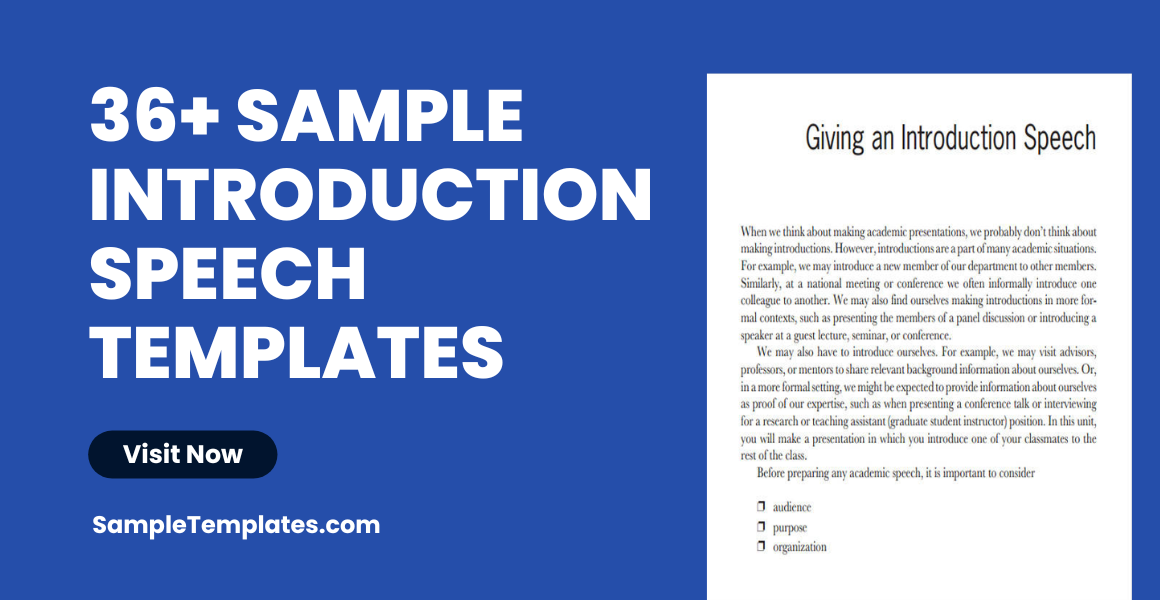
First impressions can make for quite a big deal. It can really put an impact on how people see you overall. One way of making a first impression is usually by an introduction speech. There are many factors into what makes an introduction speech great. We are here to help you know those factors so you make a better speech for yourself.
Introduction Speech Example
Sample self introduction speech examples - 6+ documents in pdf, 52 introduction speech samples.
We offer to you, here on this list, these introduction speech examples that can help you introduce something, be it an event or an actual person. We also help you in making your self-introduction speech including teaching you the speech outline for it.
Seminar Introduction Speeches
College seminar introduction.
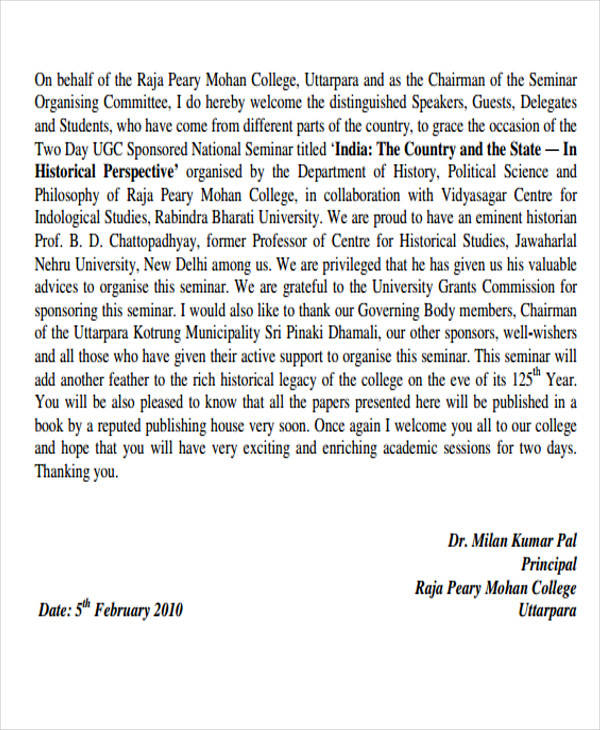
Size: 197 KB
Seminar Self-Introduction
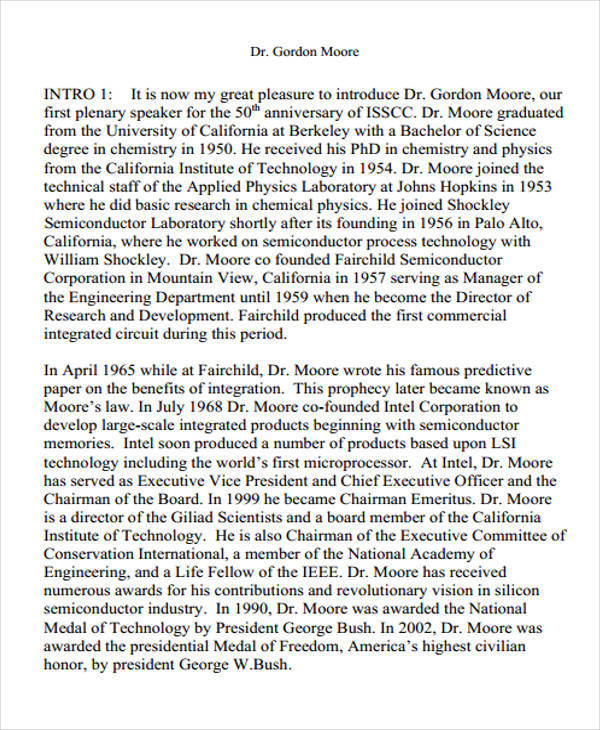
Size: 111 KB
Self-Introduction Speeches
Self-introduction speech in pdf.
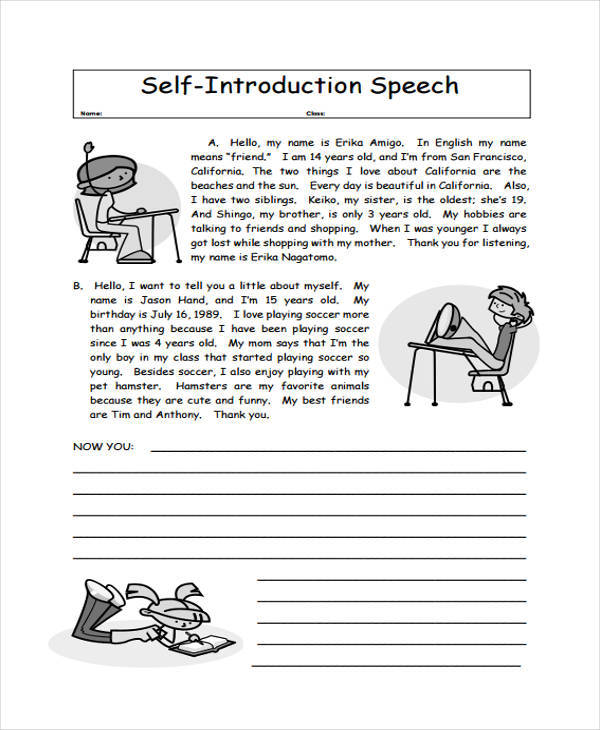
Size: 143 KB
How to Give a Self-Introduction Speech
Another type of introduction speech is a self-introduction speech. Like its moniker implies, it’s all about making a speech to introduce yourself. There are many factors into helping you make a great self-introduction speech. These kinds of speeches can be very important for one’s own reputation—more specifically yours.
The first thing you have to take into account when you are making a self-introduction speech is to consider the environment of the area where you’re going to be giving a speech. You could be in college where it’s more lax, or you could be in a workplace where it’s generally going to be more professional. Either way, you can style yourself between who you’re going to be giving the speeches to. You must know your audience to know what type of speech suits you perfectly.
Now, eloquence and the way your carry yourself are huge factors when you are giving a speech. The sound of your voice as well as how others see you can leave a long-lasting impact in their view of you. Dress yourself right, don’t slouch, and have confidence in your voice. People will be more inclined to listen to your own introduction speech with vigor if you know how to present yourself.
Debate Introduction Speeches
Debate introduction speech example.

Size: 42 KB
Introduction Speech for Debate Competition
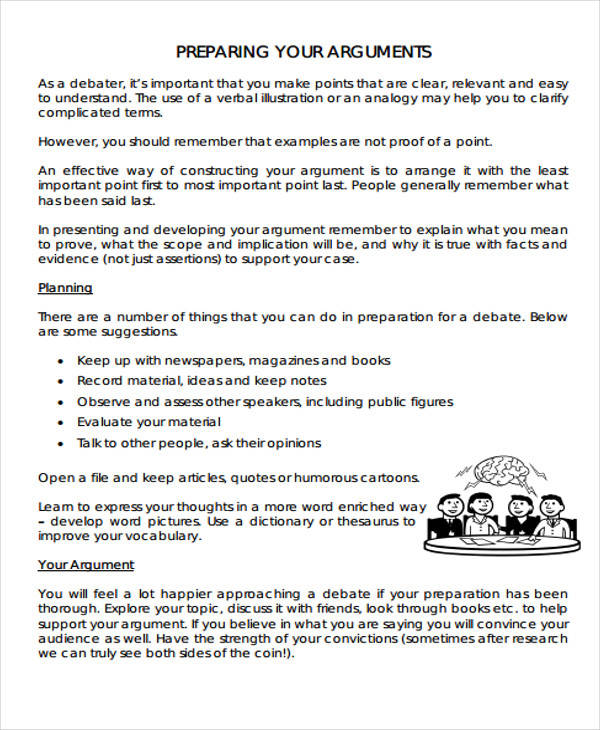
Size: 223 KB
Guest Introduction Speeches
Chief guest introduction.
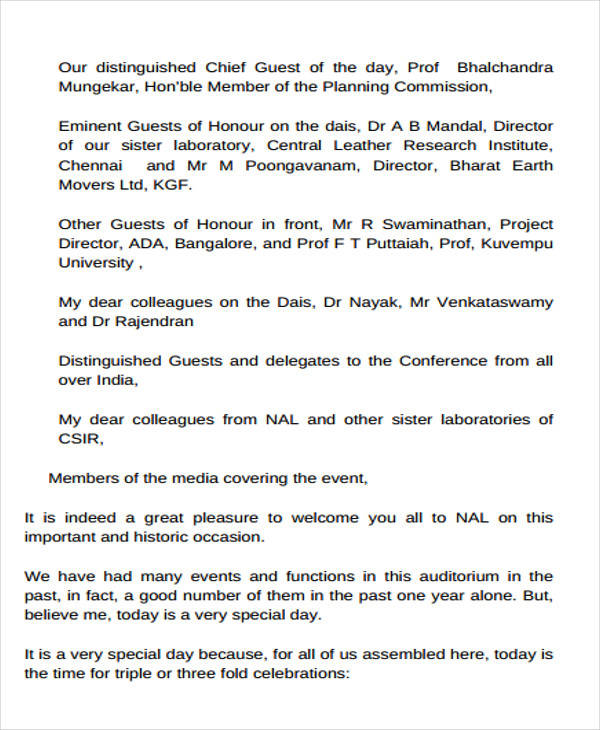
Size: 12 KB
Guest Speaker Introduction
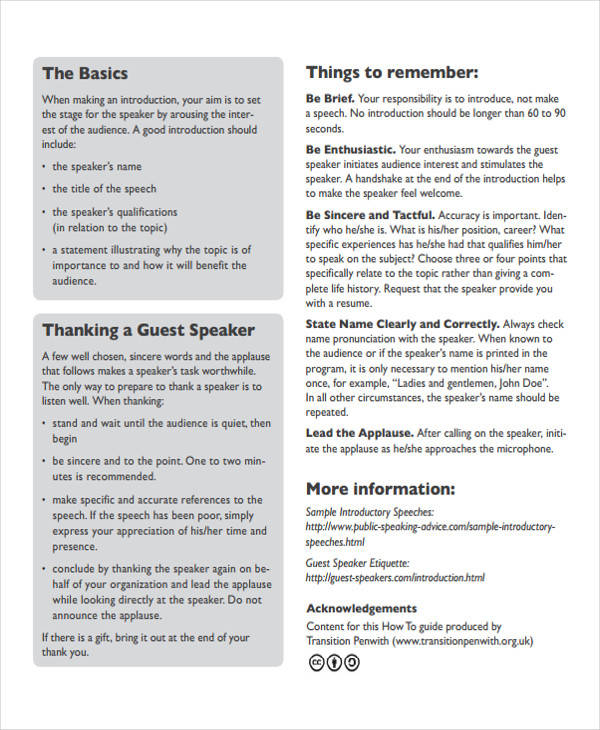
Size: 87 KB
Class Introduction Speeches
Yoga class introduction speech.
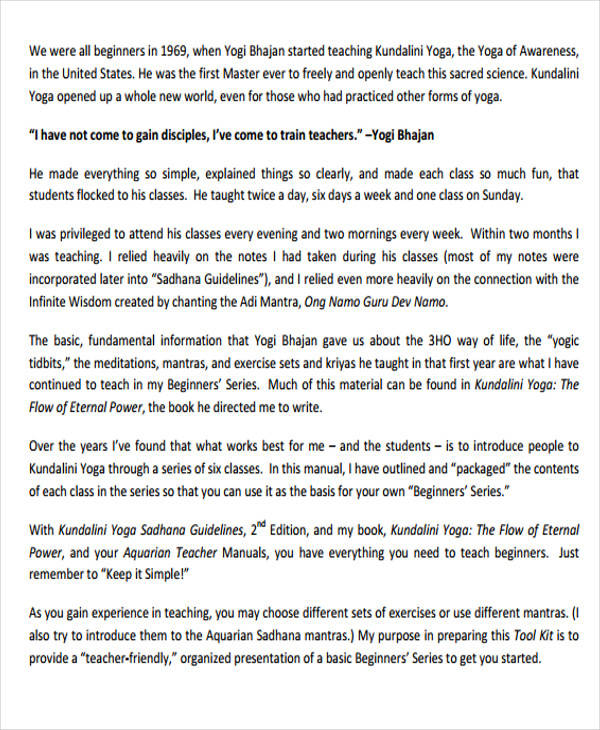
Class Introduction Speech Sample

What Should Be in an Introduction Speech?
In order for an introduction speech to be successful, you have to get your audience acquainted with what it is that you are introducing to them, be it an event or an actual live person. Trying to get your audience to get to know more about what or who you are introducing plays an important role in your introduction speech.
You should include details about what you are introducing in order to keep your audience well informed. You can also make it a goal to help them become more comfortable with what or who you are introducing. You should take careful note of the words that you do use in your introduction speech . They can greatly affect the perception of the people around you.
What Makes a Speech Great?
Speeches in general have these feel to them that inspires others to look at a certain something in a certain light. Introduction speeches are no different. They can inspire good image and reputation to the person being introduced. They can also help people look forward to an event that is coming up.
There are three factors you need to consider in making your speech great.
- How You Present Yourself – from your posture to the clothes you are wearing on your back, how you let others see you physically can affect how they see you greatly. It can be advisable to consider wearing the right type of clothes for the situation. This doesn’t always mean wearing something formal, though.
- The Speech Itself – the words you use in a speech can help sway people to a certain direction. This is why you need to pick what you say wisely. You don’t want confusion to appear because of a few wrong words, do you?
- Your Audience – how your audience react may not always be in your control. You need to take note of the people you are talking to.
As long as you take note of these three up above, you shouldn’t have any trouble when it comes to making your speech. We are always here to provide you with more speech examples should you need us.
Effective Introduction Speeches
Effective self introduction.

Size: 149 KB
Effective Introduction Speech Example
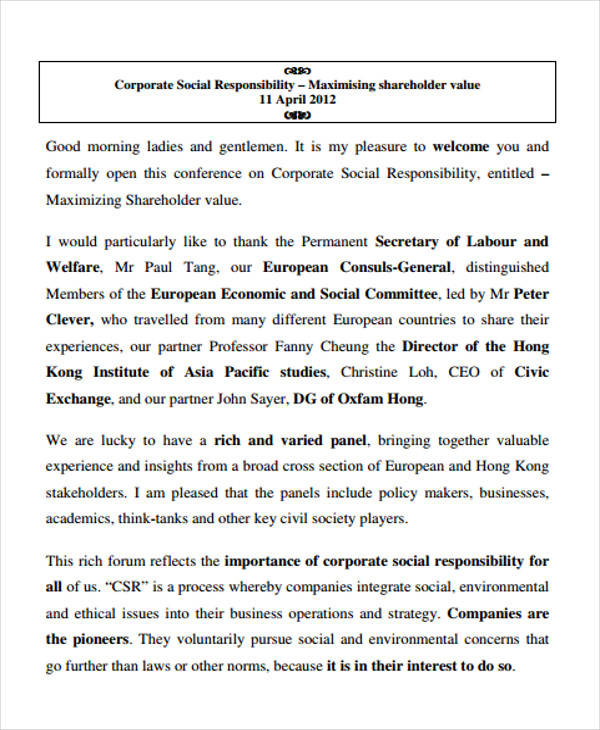
Size: 47 KB
Event Introduction Speeches
Charity event introduction speech.

Size: 10 KB
Introduction Speech for Cultural Event

Introduction Speech for College Event
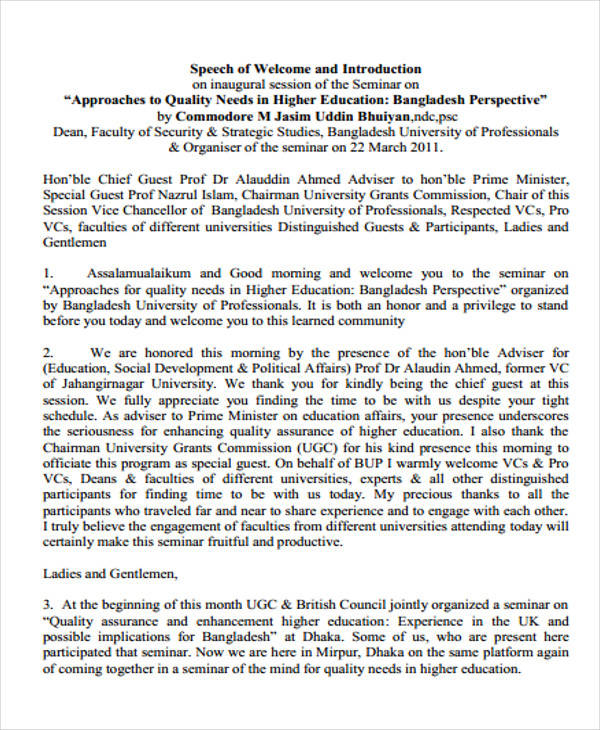
Size: 71 KB
Formal Introduction Speeches
Formal self introduction.
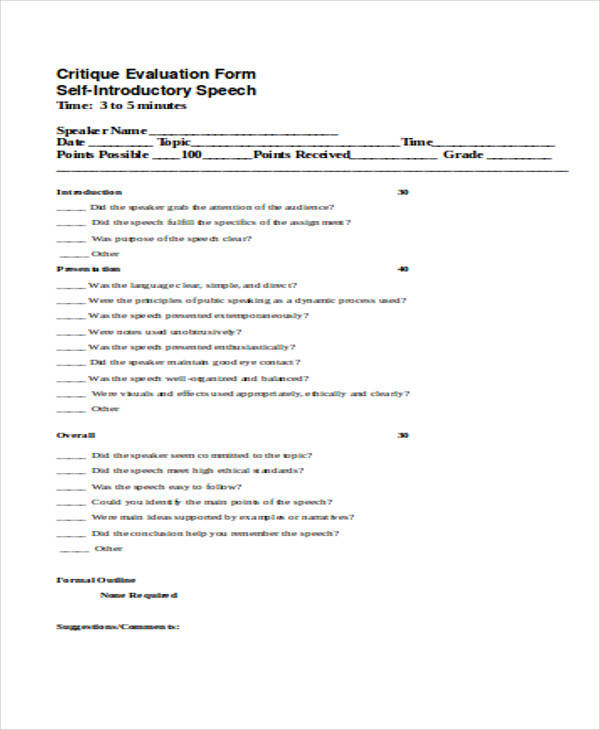
Size: 29 KB
Formal Introduction Speech Example
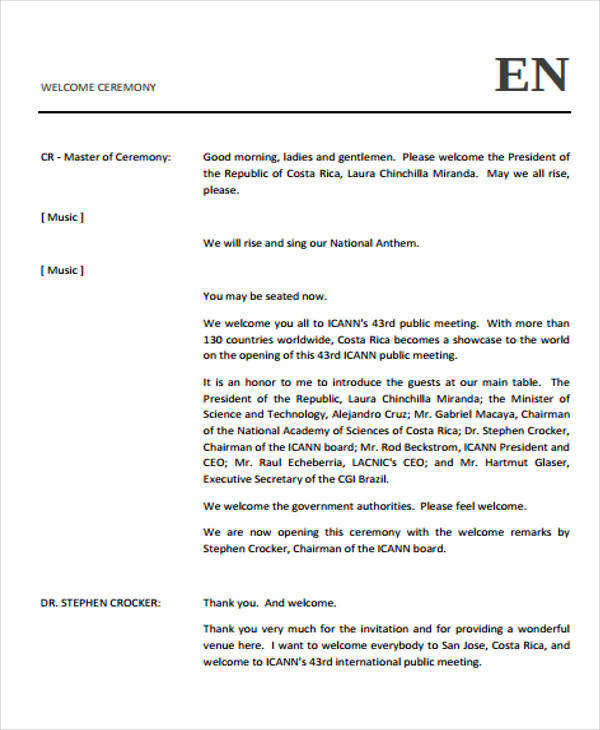
Graduation Introduction Speeches
Graduation ceremony introduction.
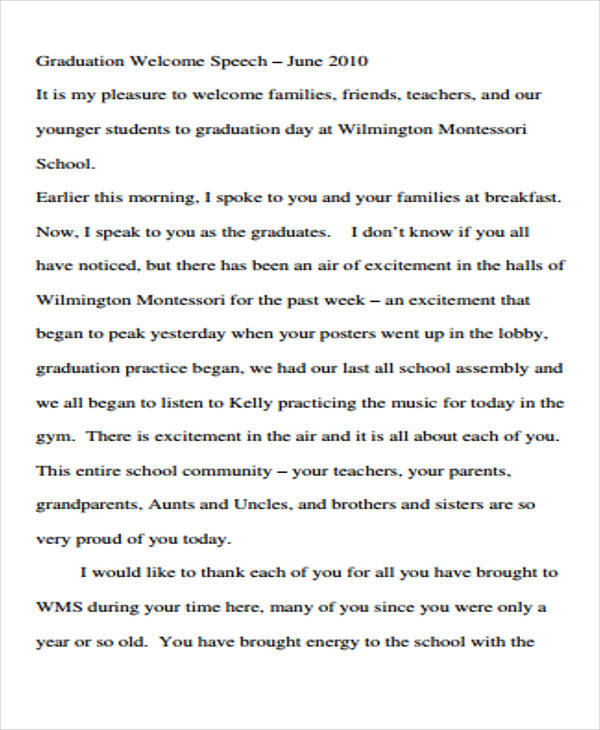
Size: 28 KB
Preschool Graduation Introduction
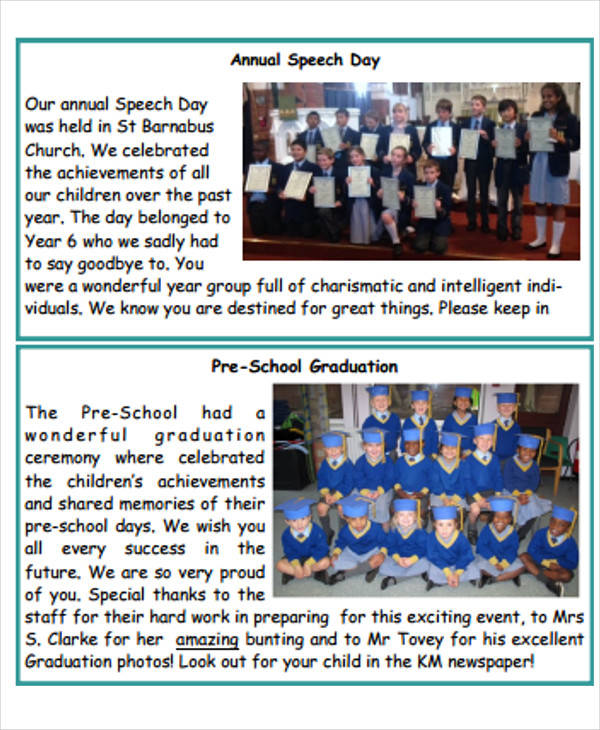
High School Graduation Introduction
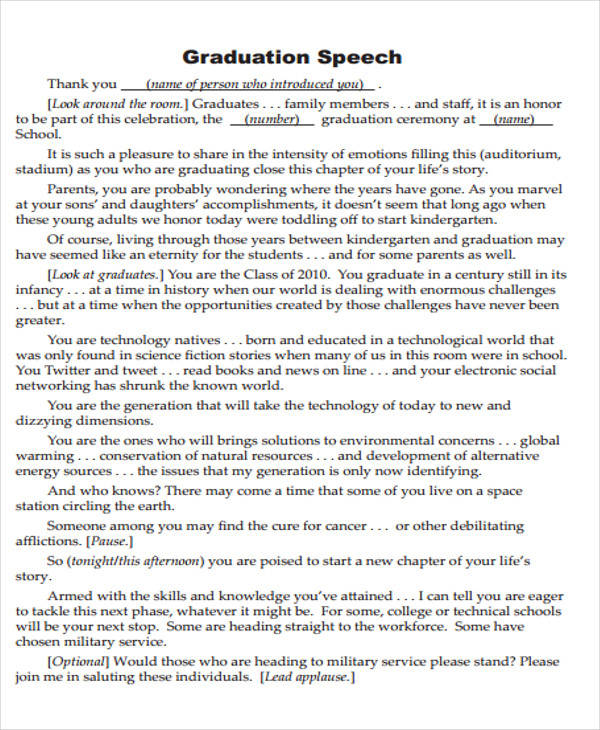
Size: 136 KB
Meeting Introduction Speech
Opening meeting introduction.
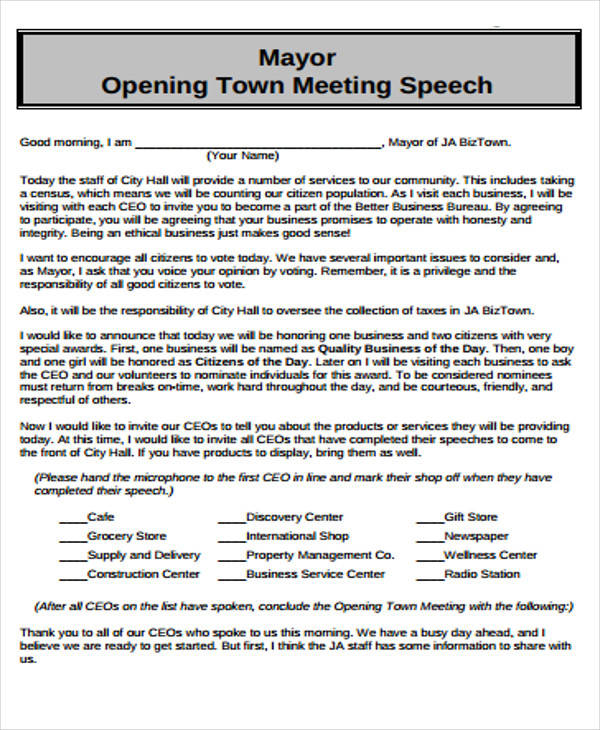
Size: 79 KB
Business Meeting Introduction Speech
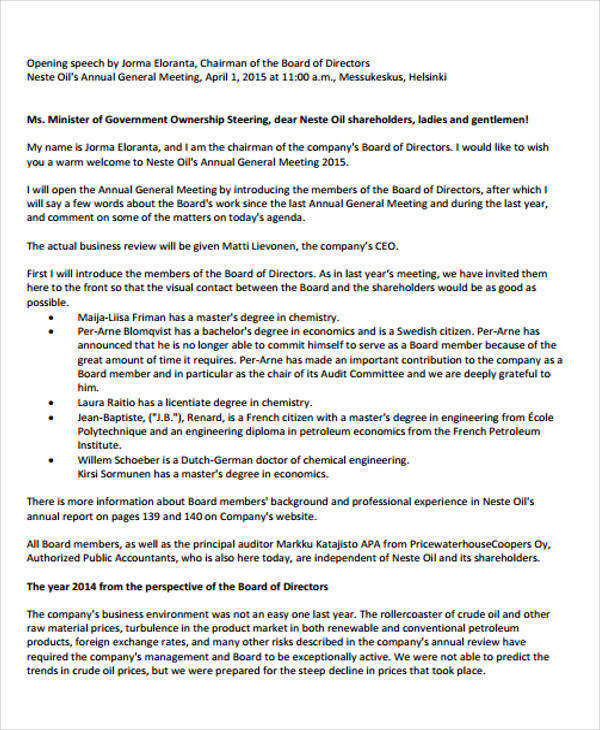
Size: 281 KB
Sales Meeting Introduction
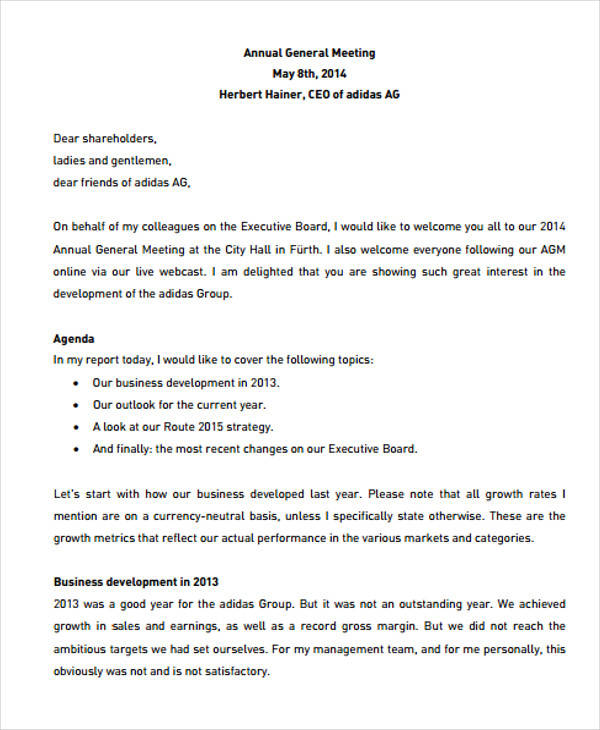
Size: 141 KB
Personal Introduction Speeches
Beauty pageant introduction speech.
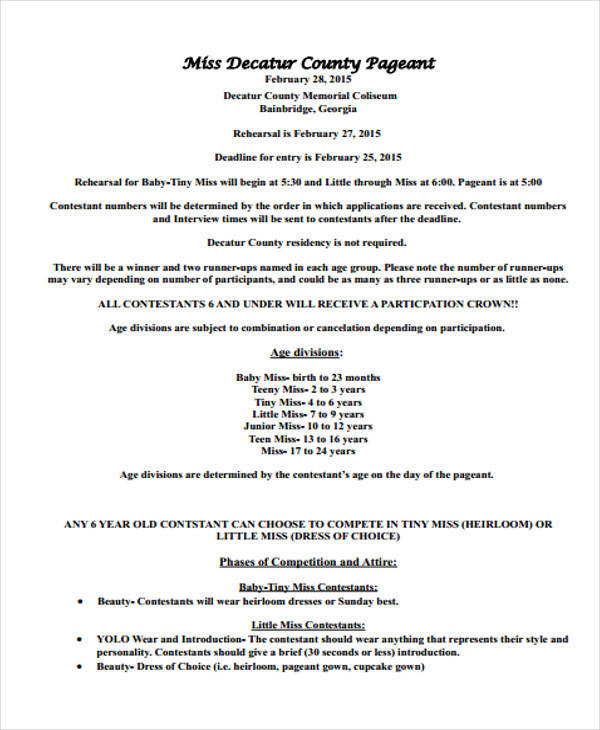
Size: 51 KB
Personal Introduction Speech for Interview

Size: 83 KB
Professional Introduction Speeches
How to start an introduction speech about someone else.
Many times, there is often a practice of somebody else introducing somebody else. There could be multiple reasons for this, from being a person who is known very well to their surroundings to formal reasoning. This kind of speech can be considered an informative speech about another person who the audience may not know about.
You can start by letting the crowd know that there is somebody that you’d like for them to meet, and then proceeding to talk about that person. It could be anything related to the guy you are talking about, his achievements or his position. You can help the audience become more familiar about the person they are about to meet before even meeting them.
It should be easy to know the speech outline when you introduce somebody new to your audience with the samples we have provided. With these examples shown, you should have little problems making an introduction speech of your own.
Short Introduction Speeches
Short introduction speech about yourself.
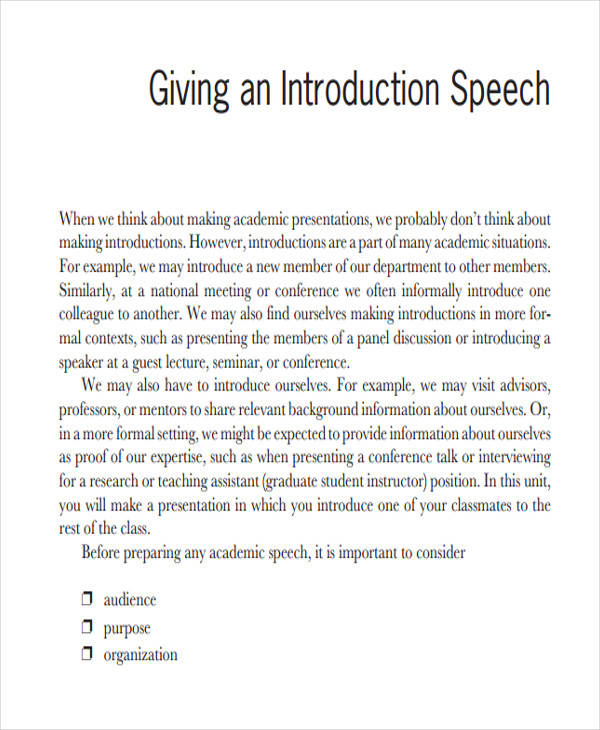
Short Self Introduction
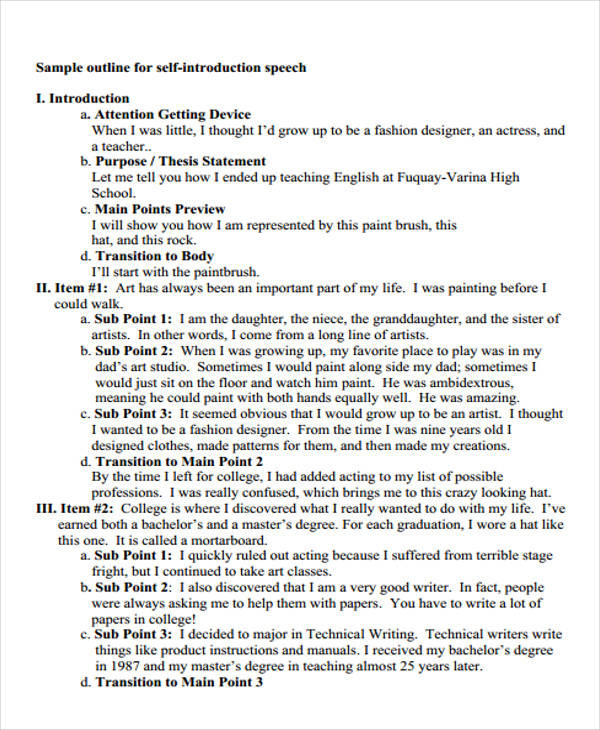
Size: 69 KB
Team Introduction Speeches
Team leader introduction speech.
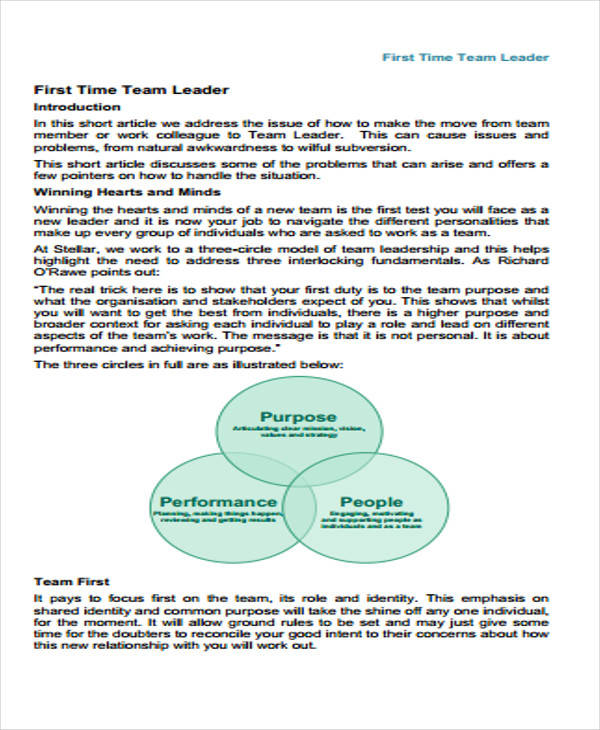
Size: 163 KB
Team Building Introduction Speech
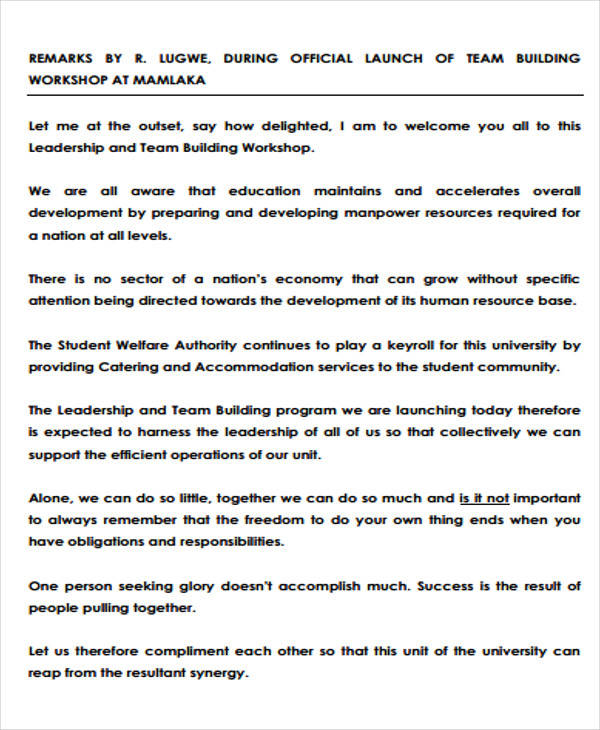
Size: 114 KB
Welcome Introduction Speeches
Welcome party introduction speech.
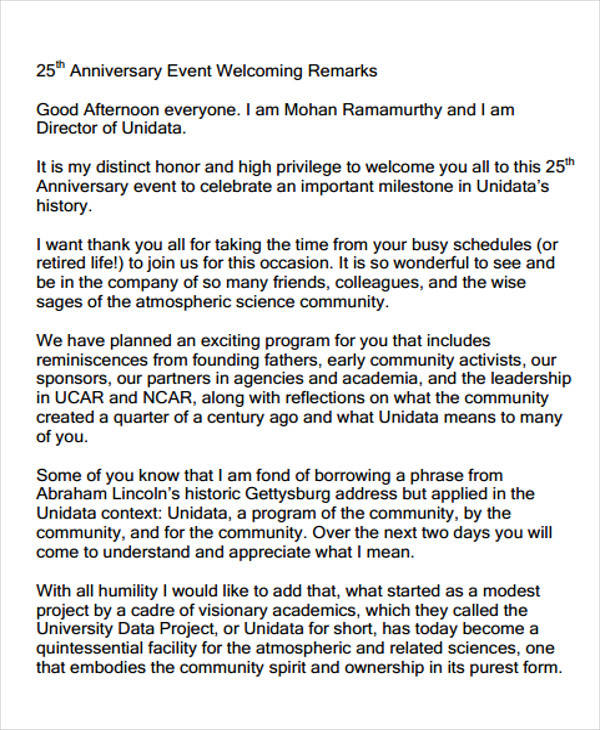
Size: 34 KB
Welcome Introduction Speech Example
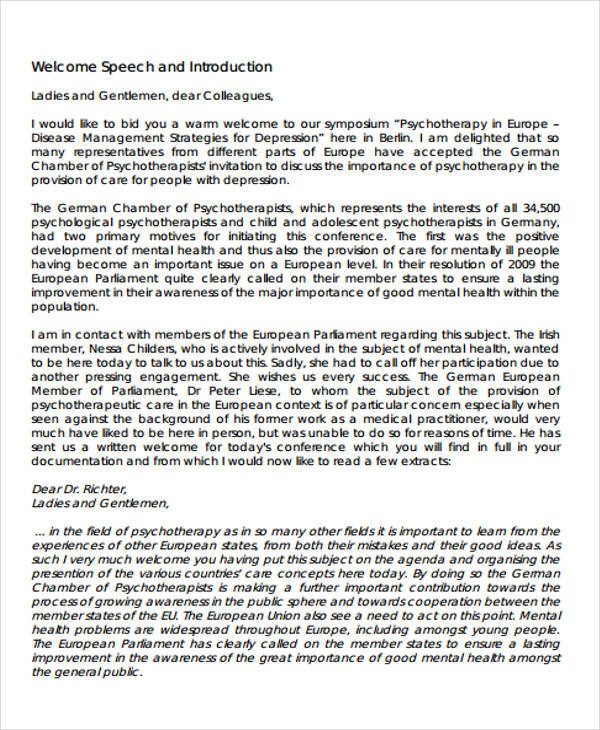
Size: 14 KB
Wedding Introduction Speeches
Wedding reception introduction.

Wedding Ceremony Introduction
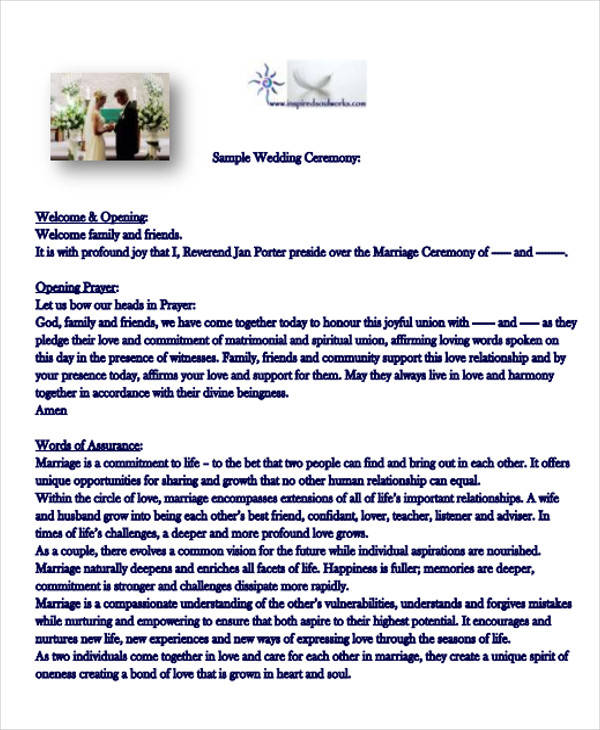
Size: 50 KB
Wedding Anniversary Introduction Speech

Size: 66 KB
Church Wedding Introduction

Size: 319 KB
Introduction Presentation Speeches
Group presentation introduction.

Size: 27 KB
Introduction Presentation Speech Example
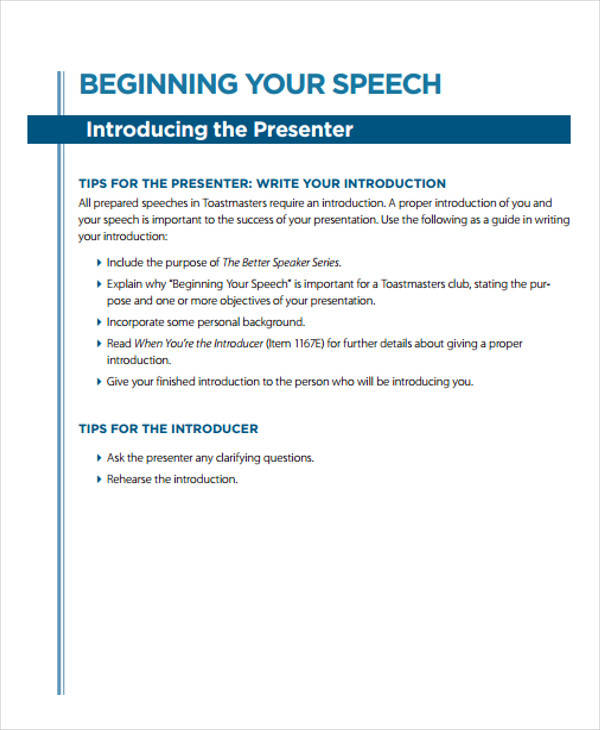
Tips to Make an Introduction Speech Successful
If you really want to make a good impression on what you are introducing to people, it can help to know what makes any speech successful. As mentioned earlier, eloquence and how you carry yourself are a very big part in making your introduction speech successful.
What makes an introduction speech successful is if your audience is much more comfortable with what or who is being introduced to them. You can try using certain words to describe them to help the crowd get a more vivid image. If you are a relatively well-trusted person to your audience, then making an introduction speech successful shouldn’t be any difficult at all. As long as you follow the examples of what we provided and even the examples of other introduction speeches, your speech should be successful.
We hope that this list managed to help you know more about making introduction speeches. We offer many more specific types of speeches, such as graduation speeches and persuasive speeches , if you need any more help. Just click on the link to get there.
Related Posts
Free 8+ sample speech outline templates in pdf | ms word, free 6+ sample commemorative speech in pdf, free what is a speech [ how to plan a speech, importance ], free 9+ informative speech samples in pdf, company profile samples, sample dot papers, sample lined paper templates, isometric papers, sample printable kite templates, sample packing checklist templates, sample movie reviews, travel budget templates, design document samples, article writing samples & templates, research papers, sample salutatorian speech - 9+ documents in pdf, sample tribute speech example - 7+ documents in pdf, sample persuasive speech - 7+ documents in pdf, 44+ speech samples.

12+ Opening Speech Examples for Presentations & Quick Tips
Last updated on October 17th, 2023

These days, most of the audience prefers an informal approach in presentations, but at the same time, it must sound professional. When people prepare for any type of presentation, they often face this dilemma: how to start a presentation? What should be the opening speech? How much time should we take for the introduction part?
The first three minutes of your presentations are crucial to get to your audience with an engaging message and make the overall presentation effective. With the proper opening speech for your presentation, you can hook your audience, win the audience’s attention and get them audience interested in what you have to say. Check out some speech introduction examples to get familiar with this topic. Undoubtedly, if the beginning of your presentation is solid and exciting, the chances of success of your presentation increase. Opening your persuasive speech entirely depends upon your style and choice because when you are giving a presentation, you are required to be yourself and avoid putting artistic elements. So, choose something with which you are entirely comfortable.
If you are looking on how to start a speech then this article can help you to get some ideas. Here is a list of opening speech examples that you can use to prepare your presentations with a persuasive speech that convinces the audience. Find useful phrases and strategies to make your presentation a success:
1. Opening Speech with Greetings
This is the very basic, common and important step in which you need to greet your audience by wish them good morning/afternoon or evening (as per the time of session in which you are giving presentation). How to start a speech? Check out some of the examples below including a simple but effective speech introduction greeting example.
Example of Opening Greetings
Hello, everyone. I’d like, first of all, to thank the organizers of this meeting for inviting me here today.
Another example of opening Greeting speech.
Good morning, ladies and gentlemen. I am honored to have the opportunity to address such a distinguished audience.
2. Open the Speech by Giving Compliment & Show Gratitude towards your Audience
Secondly, just after wishing greeting to your audience give them compliment and choose some words which show that you are delighted to see them there.
Example:
It’s great to see you all, Thank you for coming here today.
3. Give your introduction: Introduce Yourself
How you introduce yourself during a presentation is important. There are many ways to introduce yourself. Here we will see some examples on how to introduce yourself in a presentation. First of all, give your introduction start from telling your name. You can show some casual attitude by telling your short name or nick name, and then tell the audience more about your background and what you do.
For example, a good way to start introducing yourself could be:
My name is Louis Taylor, friends call me Lee sometimes.
Then introduce yourself professionally and give quite information about what you do and why are here today. For Example:
I am a software engineer by profession and working in ABC Corp. Today, I am here to provide you some exciting information about new technology, which is going to be very beneficial for you in future.
Another example of self-introduction speech:
For those of you who don’t know me already, my name is Louis Taylor, and I’m responsible for the software department at ABC Corp.
Using a self-introduction template and slide in your presentation, you can support your speech while presenting the information about you in the projection. You can also visit self introduction speech examples to find out some examples on how to introduce yourself and download self-introduction templates for PowerPoint & Google Slides.
4. Opening with the Topic of the Speech
Next is the part where you introduce the topic of your presentation or speech. Here are some examples of good opening speech for presentations examples on a specific topic.
What I’d like to present to you today is…
Or here is a simplified example of a good introduction for presentation in which we try to get the audience’s attention over the screen where you are presenting the content of your PowerPoint or Google Slides presentation.
As you can see on the screen, our topic today is…
5. Signpost
Put all your information in front of them and then put your proposal and its related information and key point by which you can implement and utilize that idea effectively. Now let collect these points to make a summary and concise illustration. Here is an example of presentation starting speech that you can use:
“Good afternoon every one, it’s great to see you all here, thank you for coming. My name is Louis Taylor, friends call me Lee sometimes. I am a software engineer by profession and working with ABC Ltd. Today we are here to know about new software so that we can take most of it. Firstly, we will look how it work, next we will discuss where can we use it, then we will learn what are its advantages and finally we will discuss what precautions are required to kept in mind while implementing it.”
6. Creating an Emotional Connection in Your Opening Speech
An effective opening speech is not just about presenting information or stating facts; it’s about forging an emotional connection with your audience. Building this connection can make your presentation more engaging, relatable, and memorable. Here are some strategies to achieve this:
Storytelling: One of the most powerful ways to establish an emotional connection is through storytelling. Sharing a personal anecdote or a relevant story can evoke emotions and draw your audience into your presentation. Make sure your story aligns with the overall theme of your presentation and adds value to your message.
Example of speech opening:
“Good morning, everyone. When I was a little boy, I used to watch my grandfather work tirelessly on his old typewriter. The clacking of the keys was a lullaby that lulled me into dreams of creating something impactful. Today, I am here to talk about the evolution of technology and its effect on communication, from typewriters of old to the smartphones of today.”
Relatability: Find common ground with your audience. This could be based on shared experiences, values, or aspirations. Doing so helps to humanize you, making it easier for your audience to relate to your message.
“Like many of you, I too struggle with maintaining a work-life balance in this fast-paced digital world. Today, I’ll share some strategies I’ve discovered that have significantly improved my quality of life.”
Utilizing Emotions: Use emotions like humor, surprise, curiosity, or inspiration to engage your audience. Different emotions can be used depending on the tone and purpose of your presentation.
“Did you know that the average person spends two weeks of their life waiting for traffic lights to change? That certainly puts our daily commute in a new light, doesn’t it?”
Remember, authenticity is crucial in building an emotional connection. Be yourself, share your experiences, and speak from the heart. This helps to gain your audience’s trust and keeps them engaged throughout your presentation.
7. Harnessing the Power of Visual Aids in Your Opening Speech
Visual aids are a potent tool in any presentation, particularly in your opening speech. They can grab your audience’s attention with a visually appealing cover slide, support your message, and make a lasting impression. Here are some ways you can utilize visual aids in your opening speech.
Images: An image is worth a thousand words, they say, and it’s true. An impactful or relevant image can pique the curiosity of your audience and set the tone for your presentation. Ensure the image aligns with your topic and contributes to your overall message.
“As you can see on the screen, this is an image of a barren desert. It may surprise you to learn that this was once a thriving forest. Today, I’ll be talking about climate change and its irreversible effects.”
Short Videos: A short video can be a great way to engage your audience. This could be a brief clip that illustrates your topic, a short animation, or even a quick introductory video about you or your organization.
Example of a presentation opening statement:
“Before we start, let’s watch this brief video about the incredible journey of a raindrop.”
Infographics and Charts: If you are sharing statistical data or complex information, infographic slides or charts can simplify and clarify your message. They are visually engaging and can help your audience understand and remember the information.
“Take a look at this chart. It shows the exponential increase in cybercrime over the last five years, a topic that we will delve into further today.”
Slides: A well-designed slide can provide a visual structure for your opening speech. It should be clean, easy to read, and should not distract from your speech. Avoid cluttering your slides with too much text or complex graphics.
“According to the infographic on the screen, we can see the three core areas we’ll be focusing on in today’s presentation.”
Remember, the goal of using visual slides is to enhance your message, not overshadow it. They should complement your speech and provide visual interest for your audience. Always test your visual aids beforehand to ensure they work properly during your presentation.
8. Engaging Your Audience with Rhetorical Questions
A rhetorical question is a powerful tool you can use in your opening speech to provoke thought and engage your audience. By posing a question that doesn’t require an answer, you can pique your audience’s interest, make them think, and steer their focus towards your presentation’s key points. Here’s how to use rhetorical questions effectively in your opening speech:
Spark Curiosity: Use a rhetorical question to spark curiosity about your topic. This question should be thought-provoking and relevant to your presentation.
“Have you ever stopped to wonder how much of your life is influenced by social media?”
Highlight Key Issues: A rhetorical question can help highlight the key issues or problems that your presentation aims to address. This will help your audience understand the importance of your topic.
“What would happen if our natural resources were to run out tomorrow?”
Encourage Reflection: Encourage your audience to reflect on their personal experiences or beliefs. This will make your presentation more relatable and engaging.
“How many of us truly understand the value of our mental health?”
Set the Tone: You can also use a rhetorical question to set the tone of your presentation, whether it’s serious, humorous, or contemplative.
“Is there anyone here who doesn’t love pizza?”
Remember, rhetorical questions are meant to stimulate thought, not to put anyone on the spot. Make sure your questions are relevant to your topic and are appropriate for your audience. With the right questions, you can grab your audience’s attention, keep them engaged, and guide their thinking throughout your presentation.
9. Leveraging Statistical Data in Your Opening Speech
Using statistical data in your opening speech is a powerful way to capture the audience’s attention and lend credibility to your message. Surprising or impactful statistics related to your presentation’s topic can instantly make your audience sit up and take notice. Here’s how you can incorporate statistical data effectively in your opening speech:
Relevant and Interesting Data: Choose statistics that are directly relevant to your topic and are likely to pique your audience’s interest. This data should enhance your message and provide valuable context for your presentation.
“Do you know that according to the World Health Organization, depression is the leading cause of disability worldwide, affecting over 264 million people?”
Simplify Complex Data: If you’re presenting complex or dense data, make sure to simplify it for your audience. Use percentages, comparisons, or visual aids like infographics or charts to make the data easily understandable.
“Look at this chart. It represents the staggering 80% increase in cybercrime incidents over the past five years.”
Credible Sources: Always ensure your data comes from credible and reputable sources. This not only adds legitimacy to your presentation, but it also boosts your credibility as a speaker.
“According to a recent study published in the Journal of Environmental Science, air pollution contributes to 1 in 8 deaths worldwide.”
Shocking or Surprising Data: If you have statistics that are surprising or counter-intuitive, they can be an excellent way to grab your audience’s attention and spark curiosity about your presentation.
“Can you believe that, according to the United Nations, we waste approximately 1.3 billion tons of food every year, while one in nine people worldwide go hungry?”
Using statistical data in your opening speech can help to highlight the significance of your topic, draw your audience in, and lay a solid foundation for the rest of your presentation. Remember to present your data in a clear, accessible way, and always cite your sources to maintain credibility.
10. Creating a Powerful Hook with Anecdotes and Quotations
Anecdotes and quotations can be a powerful tool in your opening speech, serving as hooks that draw your audience into your presentation. They can provide a human element to your topic, connect with your audience on an emotional level, and add depth to your message. Here’s how you can effectively incorporate anecdotes and quotations in your opening speech:
Relevant Anecdotes: Sharing a relevant anecdote, whether personal or related to your topic, can make your presentation more relatable and engaging. Your anecdote should be brief, interesting, and serve to illustrate a point related to your topic.
“When I was a teenager, my family’s home was destroyed by a fire. That experience ignited in me a passion for safety measures and awareness, which brings us to today’s topic: fire safety in residential areas.”
Inspiring Quotations: A well-chosen quote can add depth and perspective to your topic. It can inspire, provoke thought, or set the tone for your presentation. Presenting it with a visually appealing quote slide increases the chances to make a lasting impression. Make sure the quote is relevant to your topic and from a credible source.
“Albert Einstein once said, ‘The world as we have created it is a process of our thinking. It cannot be changed without changing our thinking.’ This leads us into our discussion today on the importance of mindset in personal development.”
Humorous Anecdotes or Quotations: Depending on the formality of the setting and the topic of your presentation, a funny anecdote or quote can help to relax the audience, making them more receptive to your message.
“Mark Twain once said, ‘I didn’t have time to write a short letter, so I wrote a long one instead.’ As a fellow writer, I can relate to this sentiment, which brings us to our topic today: the art of concise writing.”
Remember, your anecdote or quote should serve to enhance your message, not distract from it. It should be interesting, relevant, and appropriately timed. With the right anecdote or quote, you can create a powerful hook that engages your audience from the outset.
11. Integrating Storytelling in your Opening Speech
Storytelling is a compelling method to make your opening speech memorable and engaging. A well-told story can create a strong emotional connection with your audience, making your presentation more impactful. Here’s how to effectively weave storytelling into your opening speech:
Choosing the Right Story: The story you tell should be relevant to your topic and capable of illustrating the point you’re trying to make. It could be a personal experience, a case study, or a historical event.
“Years ago, I worked on a project that, at the outset, seemed destined for success. But due to a lack of clear communication within the team, the project failed. Today, we will be discussing the importance of effective communication within teams.”
Creating Suspense: Build suspense in your story to hold your audience’s attention. You can do this by posing a problem or a conflict at the beginning of your story, which gets resolved by the end of your presentation.
“One day, as I was walking through a remote village in Africa, I came across a scene that profoundly changed my perspective. But before I reveal what it was, let’s discuss the issue of clean drinking water in underdeveloped countries.”
Showing, Not Telling: Make your story more vivid and engaging by showing, not telling. Use descriptive language and paint a picture with your words to make your audience feel like they’re part of the story.
“As the sun rose over the bustling city of Tokyo, I found myself in a small sushi shop tucked away in a quiet alley, experiencing what would become a pivotal moment in my culinary journey.”
Relatable Characters: If your story involves characters, make them relatable. Your audience should be able to see themselves in your characters, or at least understand their motivations and challenges.
“Meet Sarah, a single mother of two, working two jobs just to make ends meet. Her struggle is the reason we’re here today, to discuss the issue of minimum wage in our country.”
Storytelling is a powerful tool that can bring your presentation to life. A well-told story can captivate your audience, making your message more memorable and impactful. Be sure to select a story that aligns with your overall message and is appropriate for your audience.
12. Incorporating Interactive Elements in Your Opening Speech
Involving your audience from the get-go can make your presentation more engaging and memorable. By integrating interactive elements into your opening speech, you can foster a sense of participation and connection among your listeners. Here’s how you can do it:
Audience Polling: Modern presentation software often includes real-time polling features. You can ask your audience a question related to your topic and display the results instantly.
“To start, I’d like to ask you all a question. (Show poll on screen) How many of you think that Artificial Intelligence will significantly change our lives in the next ten years?”
Questions for Thought: Pose a thought-provoking question to your audience at the beginning of your speech. It can stimulate curiosity and get your listeners thinking about your topic.
“Before we delve into today’s topic, I want you to ponder this: what would you do if you had only 24 hours left to live? Keep that in mind as we discuss the importance of time management.”
Physical Engagement: Depending on the formality and size of your audience, you can incorporate physical engagement. This can range from a simple show of hands to engaging activities.
“By a show of hands, how many of you have ever felt overwhelmed by the amount of information available on the internet? That’s what we’ll be discussing today: information overload in the digital age.”
Interactive Quizzes: Quizzes can be a fun and interactive way to engage your audience and test their knowledge on your topic. It can also serve as a hook to introduce your topic. You can use a free Quiz PowerPoint template to ease the job of creating a quiz for your presentation.
“I have a quick quiz for you all (show quiz on screen). Let’s see who can guess the most common fear among adults. The answer will lead us into our topic of discussion today: overcoming fear.”
Remember, the goal of incorporating interactive elements is to engage your audience, so it should be relevant and add value to your presentation. Tailor your interactive elements to suit the needs and preferences of your audience, and you’ll have a winning opening speech.
What are the Objectives of Preparing a Good Introduction and Opening Speech?
As we mentioned earlier, the first minutes of your presentation are crucial to hook the audience and let them pay attention to the message you want to convey. This will depend on the type of presentation (if it is persuasive presentation, informative presentation or a presentation for entertaining the audience), but in general terms, when presenting we need to:
- Capture the audience’s attention
- Present information, opinions, ideas to the audience.
- Present important details about a specific topic.
- Sell an idea.
- Make the information memorable so it can persist over the time.
- Get your audience to take action, a Call to Action. E.g. purchase a product, enroll to something, fundraise, etc.
Real-Life Examples of Effective Opening Speeches
Barack Obama started his speech in the White House Correspondents’ Dinner saying: “You can’t say it, but you know it’s true.”
In same cases, humour can be a great companion for your speech. If you can use humour in a positive way, then getting a laugh in the first seconds of a presentation can get your audience hooked. It is a great way to open your speech.
Final Thoughts
Try to make habit of starting your presentation this way, it will sound great. You may come across several more opening speech examples for presentation but, once you implement this you yourself will realize that this is the best one. Alternatively you can learn more on quotes for presentations & speech topics to use during your presentation in PowerPoint, learn how to close your presentation , or find other relevant speech introduction greeting examples.
49 comments on “ 12+ Opening Speech Examples for Presentations & Quick Tips ”
thank you very much
Hi Kavishki, we hope the article was useful for you. Will be great to learn more about how you have used the speech examples. If you need more speech ideas, I’d recommend you free Persuasive Speech topics .
hi,good morning all of you.i’m shadi.now i’m going to do a panel discussion.we want some informations from you we believe all will support us.
Hi Kavishki, good morning. Can please provide more information about the Panel Discussion needs and if it involves a PowerPoint presentation? We’d be happy to be of help!
This was very useful to me! But i need more speech ideas!
Being a content person myself,i’ve gotta be honest.Now this was assisting,you bet…great stuffow.
Thank you so much. It’s very helpful. Keep it up.. Good luck <3
plesae i would like u my pleasure to help me with some opening celebration word,s specially greeting to the audience
It would be appreciable if you share more speech about this.thank you.
thanks a lot for dis.. really its very helpful
I do thank you for the tips you provided me with on how to make speeches/presentations.
a very gud thanks for such tips
Thank you for the information. Very good tips.
thanks you for the great ideas. this can help me to improve my presentation skill.
this information very nice to me.i get many new thing after i read this article.this information can help me to make a good presentation later.thank you.
I think this article is very useful for me to make presentations. Thank.
I think it is true.Keep it up.
What a good infomation.It very useful thank u
Thank you for the information. Its very helpful
It is helpful for my presentations.
i hope someone could teach me present more effectively. i would appreciate it
Thank you for the information.i can learn about the article/speech with simple and easy to understand..
this is useful tips
Good tips on how to start a presentation.
Thankyou for this. This really helped me a lot.
This tips makes me more confident . Thank you very much and break a leg guys !
Hi, I’m Gayathiri. I would like to thank you for giving such a helpful tips. I will defenitely use this tips in my speech/presentation.So, I hope my friends also use this tips for their presentation.
it was a good tip for us newbie on how to make a speech without any worries.
Thank you for your note and tip… It can change me to be a good student..
This article really helped me a lot for preparing a presentation.
this all very useful tips…can boost my confident during the presentation.thank you so much….
it’s very use helpful..thank you!
I need to view ths document
This was a good read. Thank you for the information.
Thank you for the information about the introduction during pesentation.Truely,i really need to study lot about how to start my presentation so that the audience are interesting to hear what i want to talk about and do not feel bored.
it’s is very usefull article that can use as our revision in upcoming for the next presentation.Thank you..
Thank you miss because of this article, it can help me on my next presentation.
thank you for this article,it’s useful to improve my presentation tasks.
this article has many tips for prepare to our presentation.thank you for sharing this article.
Thanks for the useful information. Can I ask how can I improve my self-confidence so as not to be embarrassed when presenting? Any idea? Thank you.
thank you..i’ll try to use those information for my presentation so i’ll be the best presenter in my class
this information very nice and useful to me.i get many new thing and tips after i read this article.this information can help me to make a good and better presentation later.thank you for useful information and meaningful for me
first of all, thank you for the help. there are a lot of great idea for me to use for my next presentation
Hi please i would like you to help me write an introduction for a speech about myself to my teacher
It’s help my presentation
Thank you so so much I will tell this at the UNIVERSITY presentation
please i really love your speech but can you please throw more light on the introduction
Hi every body I have entretien to USA Ambassi.
I need good presentation.
thank you so much for such a beneficial tips.
Leave a Comment Cancel reply
Your email address will not be published. Required fields are marked *
Save my name, email, and website in this browser for the next time I comment.
Sign up to our newsletter
We will send you our curated collections to your email weekly. No spam, promise!
Informative Speeches — Types, Topics, and Examples

What is an informative speech?
An informative speech uses descriptions, demonstrations, and strong detail to explain a person, place, or subject. An informative speech makes a complex topic easier to understand and focuses on delivering information, rather than providing a persuasive argument.
Types of informative speeches
The most common types of informative speeches are definition, explanation, description, and demonstration.

A definition speech explains a concept, theory, or philosophy about which the audience knows little. The purpose of the speech is to inform the audience so they understand the main aspects of the subject matter.
An explanatory speech presents information on the state of a given topic. The purpose is to provide a specific viewpoint on the chosen subject. Speakers typically incorporate a visual of data and/or statistics.
The speaker of a descriptive speech provides audiences with a detailed and vivid description of an activity, person, place, or object using elaborate imagery to make the subject matter memorable.
A demonstrative speech explains how to perform a particular task or carry out a process. These speeches often demonstrate the following:
How to do something
How to make something
How to fix something
How something works

How to write an informative speech
Regardless of the type, every informative speech should include an introduction, a hook, background information, a thesis, the main points, and a conclusion.
Introduction
An attention grabber or hook draws in the audience and sets the tone for the speech. The technique the speaker uses should reflect the subject matter in some way (i.e., if the topic is serious in nature, do not open with a joke). Therefore, when choosing an attention grabber, consider the following:
What’s the topic of the speech?
What’s the occasion?
Who’s the audience?
What’s the purpose of the speech?

Common Attention Grabbers (Hooks)
Ask a question that allows the audience to respond in a non-verbal way (e.g., a poll question where they can simply raise their hands) or ask a rhetorical question that makes the audience think of the topic in a certain way yet requires no response.
Incorporate a well-known quote that introduces the topic. Using the words of a celebrated individual gives credibility and authority to the information in the speech.
Offer a startling statement or information about the topic, which is typically done using data or statistics. The statement should surprise the audience in some way.
Provide a brief anecdote that relates to the topic in some way.
Present a “what if” scenario that connects to the subject matter of the speech.
Identify the importance of the speech’s topic.
Starting a speech with a humorous statement often makes the audience more comfortable with the speaker.
Include any background information pertinent to the topic that the audience needs to know to understand the speech in its entirety.
The thesis statement shares the central purpose of the speech.
Demonstrate

Preview the main ideas that will help accomplish the central purpose. Typically, informational speeches will have an average of three main ideas.
Body paragraphs
Apply the following to each main idea (body) :
Identify the main idea ( NOTE: The main points of a demonstration speech would be the individual steps.)
Provide evidence to support the main idea
Explain how the evidence supports the main idea/central purpose
Transition to the next main idea

Review or restate the thesis and the main points presented throughout the speech.
Much like the attention grabber, the closing statement should interest the audience. Some of the more common techniques include a challenge, a rhetorical question, or restating relevant information:
Provide the audience with a challenge or call to action to apply the presented information to real life.
Detail the benefit of the information.
Close with an anecdote or brief story that illustrates the main points.
Leave the audience with a rhetorical question to ponder after the speech has concluded.
Detail the relevance of the presented information.

Before speech writing, brainstorm a list of informative speech topic ideas. The right topic depends on the type of speech, but good topics can range from video games to disabilities and electric cars to healthcare and mental health.
Informative speech topics
Some common informative essay topics for each type of informational speech include the following:
Informative speech examples
The following list identifies famous informational speeches:
“Duties of American Citizenship” by Theodore Roosevelt
“Duty, Honor, Country” by General Douglas MacArthur
“Strength and Dignity” by Theodore Roosevelt
Explanation
“Give Me Liberty or Give Me Death” by Patrick Henry
“The Decision to Go to the Moon” by John F. Kennedy
“We Shall Fight on the Beaches” by Winston Churchill
Description
“I Have a Dream” by Martin Luther King, Jr.
“Pearl Harbor Address” by Franklin Delano Roosevelt
“Luckiest Man” by Lou Gehrig
Demonstration
The Way to Cook with Julia Child
This Old House with Bob Vila
Bill Nye the Science Guy with Bill Nye

IMAGES
VIDEO
COMMENTS
Rehearse and Edit. Practice your introduction speech to ensure it flows smoothly and stays within the time frame. Edit out any unnecessary information, ensuring it's concise and impactful. Tailor for the Occasion. Adjust the tone and content of your introduction speech to match the formality and purpose of the event.
See the examples below to give you an idea of how to introduce yourself while still having effective attention-getters (e.g., a rhetorical question, an anecdote, a statistic, or a bold statement). "Good morning/afternoon/evening. I'm X, and I'm here to talk about Y. To begin, I'd like to share a story…".
Introduction Speech Example. 1. Let's put this speech in context to help you make sense of it. The setting for this introduction speech is a conference for an organization called " Women in Leadership". The audience are primarily women drawn together through an interest in leadership roles.
8. An empathetic question, aligning yourself with the audience and eliciting a response. These questions bring speaker and audience together, establishing a common ground, a mutual understanding, which is an effective way to ease into a speech. If your question 'works' you'll see heads nodding in agreement. Examples:
2. Check the length of your speech. Pertinent and pithy: a short speech is what you want. One to two minutes should be enough. Test it out loud with a timer and trim if necessary. My example speech is 171 words long. That will take approximately 1 minute 30 seconds to say depending on the speaker's rate of speech.
31. Examples of Introductions. Below you will find examples of informative and persuasive introductions. Notice that each contains the five elements necessary for a good introduction: an attention getter, the establishment of rapport with the audience, the speaker's credibility, a clear topic reveal, and clearly articulated main points.
What Are Some Other Examples Of Speech Introductions? Below are some more speech introduction examples you can take inspiration from. "Three things I learned while my plane crashed" by Ric Elias: "Imagine a big explosion as you climb through 3,000 ft. Imagine a plane full of smoke.Imagine an engine going clack, clack, clack, clack, clack, clack, clack.
The introduction gives the audience a reason to listen to the remainder of the speech. A good introduction needs to get the audience's attention, state the topic, make the topic relatable, establish credibility, and preview the main points. Introductions should be the last part of the speech written, as they set expectations and need to match ...
Step 1: Understand Your Audience. Before diving into crafting your speech introduction, take the time to observe your audience. Consider their interests, knowledge level, and preferences. Tailor your introduction to resonate with them, making it relatable and engaging. Understanding your audience will allow you to choose the right tone ...
The introduction of a speech is incredibly important because it needs to establish the topic and purpose, set up the reason your audience should listen to you and set a precedent for the rest of the speech. ... Let's look at a sample preview: In order to understand the field of gender and communication, I will first differentiate between the ...
Download Article. 1. Make an outline of your speech. Start by making a skeletal draft of your main points. Strip the speech down to its bare bones to determine what is most important to say, and in what order you should deliver those facts. This is the basic structure which you will build your speech around.
Like all speeches, an occasion where you must speak about yourself asks you to. Dr. Scholl (2012) in Chapter 17 speaks to the purpose of the Introduction Speech: A speech of introduction introduces the main speaker at an event and inspires the audience to listen to that speaker (O'Hair & Stewart, 1999). Any speech of introduction needs to be ...
1: Giving an Introduction Speech 3 Organizing Your Speech Organizing a speech is probably the single most important task of a good presenter. If your speech is well organized, the audience members will likely be able to follow you, even if your grammar and pronunciation are not totally accurate. As you work
Typically, this type of speech is known as an "icebreaker" as it aims to break the ice and let others know you. This is your chance to establish good credibility. Fear not! We will help you craft the best introduction speech with our outline, tips, as well as self-introduction speech samples. Let's get started!
Here are 26 different techniques for beginning your speech: 1. Use a quote. One method of starting a speech and gaining the audience's attention is to use a famous or relatable quote. This approach can give your audience context for your topic and connect it to something they recognize. For instance, if you plan to give a speech on a political ...
Four Characteristics of a Good Self-introduction Speech. Leaving lasting first impressions is as important as giving your introductory speech.Good speech of self-introduction must have the following qualities:. Factual. Details about your personal life and success regarding names, dates, and events should be presented as accurately and factually as possible.
1) Thank the Organizers and Audience. You can start by thanking the audience for coming and thanking the organization for inviting you to speak. Refer to the person who introduced you or to one or more of the senior people in the organization in the audience. This compliments them, makes them feel proud and happy about your presence, and ...
4. Make them laugh. Injecting a little humor into your opening line puts everyone at ease and makes your speech more memorable. Just make sure your joke is relevant and doesn't offend your audience. Example: "They say an apple a day keeps the doctor away, but if the doctor is cute, forget the fruit!". 5.
Introduction Speech -. A simple approach to introduce oneself or the guest speaker to a crowd is with an introduction speech. The primary goal is to capture the audience's interest by demonstrating your credibility. It will also help you convey the subject's importance. An introduction speech sets a foundation for the event that is to follow ...
Analyze their response and tweak the joke accordingly if necessary. Starting your speech with humour means your setting the tone of your speech. It would make sense to have a few more jokes sprinkled around the rest of the speech as well as the audience might be expecting the same from you. 4. Mohammed Qahtani.
52 Introduction Speech Samples. First impressions can make for quite a big deal. It can really put an impact on how people see you overall. One way of making a first impression is usually by an introduction speech. There are many factors into what makes an introduction speech great. We are here to help you know those factors so you make a ...
2. Open the Speech by Giving Compliment & Show Gratitude towards your Audience. Secondly, just after wishing greeting to your audience give them compliment and choose some words which show that you are delighted to see them there. Example: It's great to see you all, Thank you for coming here today.
How to write an informative speech. Regardless of the type, every informative speech should include an introduction, a hook, background information, a thesis, the main points, and a conclusion. Introduction. An attention grabber or hook draws in the audience and sets the tone for the speech. The technique the speaker uses should reflect the ...